

THE OFFICIAL MAGAZINE OF THE NEW ZEALAND WINE INDUSTRY APRIL/MAY 2023 ISSUE 139 NEW ZEALAND WINEGROWER Cyclone Gabrielle Stories of destruction, resilience and community in Hawke’s Bay and Gisborne APRIL/MAY 2023 / ISSUE 139 Regional Update Vintage 2023 Wine Wahine Leading women in wine Vision 40:40 Reflecting on the future
BENEFITS OF USING MECHANICAL PRE-PRUNING EQUIPMENT
Pruning is an important way to maintain healthy and productive grapevines. Pre-pruning removes the majority of the previous season’s growth before the start of the new growing season. Using specialised pruning equipment, such as mechanical pre-pruners, can save a considerable amount of time and labour compared to traditional hand pruning methods.
There are several benefits to using pre-pruning equipment:
Time savings: Mechanical pre-pruning equipment can significantly reduce the amount of time required to prune grapevines. This can free up labour for other vineyard tasks, such as canopy management and pest control.
Cost savings: By reducing the amount of labour required to prune grapevines, mechanical pre-pruning equipment can therefore reduce labour costs.
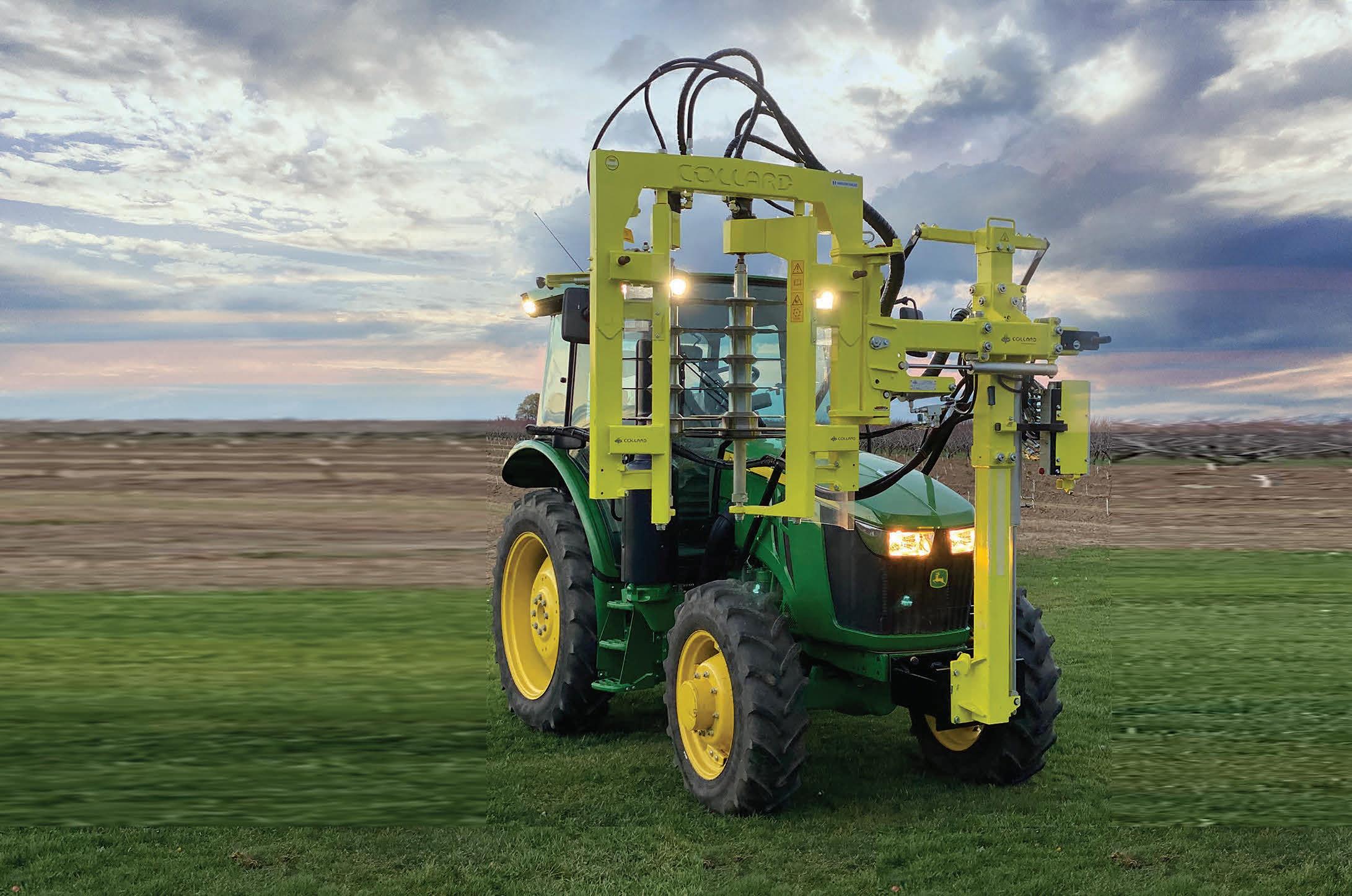
Consistency: Mechanical pre-pruning equipment provides a consistent level of pruning across all vines, ensuring that each vine receives the same treatment.
Improved plant health: Pre-pruning can help improve the overall health of grapevines by reducing the amount of old wood that is left on the vine. This can help prevent disease and pest problems, as well as promote new growth. Using a mechanical pre-pruner ensures that it’s manageable to do at the end of each season.
Enhanced fruit quality: By promoting new growth and ensuring consistent pruning, pre-pruning can help improve the quality of the fruit produced by grapevines. This can lead to higher yields and better quality wine.
Overall, pre-pruning equipment can be a valuable tool for vineyard managers looking to save time, reduce labour costs, and improve the health and quality of their grapevines.

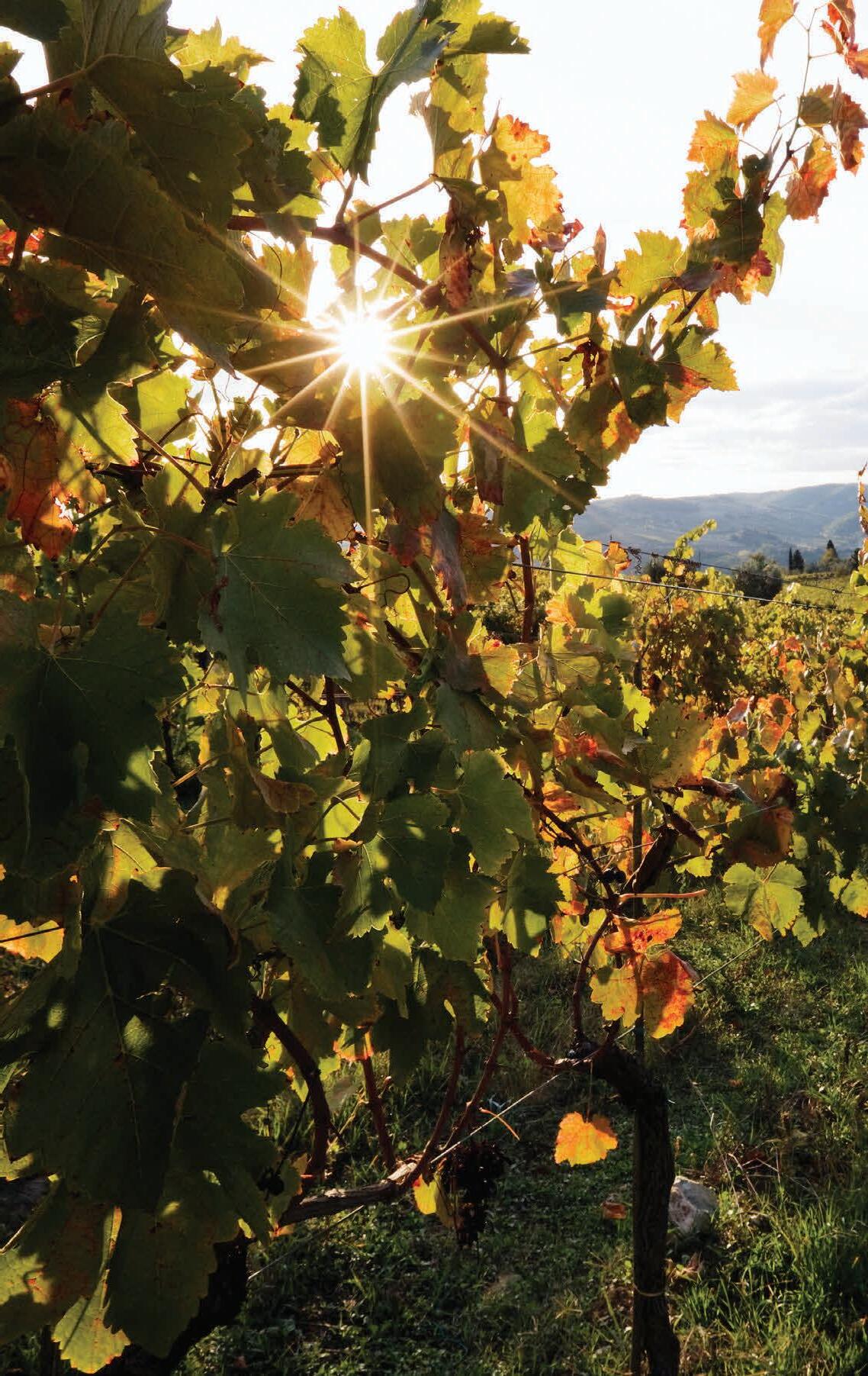
Collard pre-pruners are available now from BA Pumps & Sprayers. Contact us to find out more.

0800 833 538 | www.bapumpsandsprayers.com PREPARE FOR NEXT SEASON WITH BA PRE-PRUNERS Rugged frame construction Cutting elements supported top and bottom for added strength Quality hydraulic system with electric control
Official New Zealand distributor COLLARD PRE-PRUNERS IN STOCK AND AVAILABLE NOW
ISSUE 139 – APRIL/MAY 2023
4 6 34 36 54 58
Editorial Sophie Preece
From the CEO Philip Gregan
BRIght ideas
Dr Sachi Rana

The Profile
Matt Connell
Wine Weather
James Morrison
Advocacy Matters
Sarah Wilson
Regulars Features
Vintage Update
Winegrowers in the North Island have worked through what’s likely the most challenging growing season in memory. Harvest 2023 is drenched with stories of determined wine folk, adept at adapting, and the communities championing their efforts.


Cyclone Gabrielle
February’s flooding left Simon Gilbertson with two devastated vineyards and a flooded winery full of silt. Chardonnay specialist Tony Bish lost 75% of his fruit, and Steve Poulter’s historic harvest required perilous river crossings. These are just some of the stories of destruction, resilience and human spirit in Hawke’s Bay and Gisborne.

Wine Wahine
In celebration of International Women’s Day, we profile four leading women in New Zealand’s wine industry and talk to companies focussed on increasing diversity and eliminating the gender pay gap.
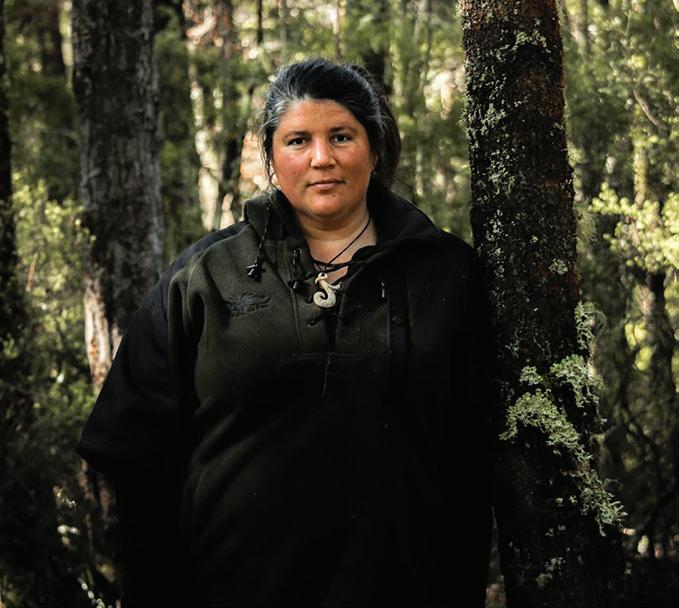
NEW ZEALAND WINEGROWER I APRIL/MAY 2023 I 3
COVER PHOTO
Cyclone Gabrielle was an unimaginably harrowing experience for Philip Barber and his family, threatening their lives before it went on to destroy their vineyard and winery. Photo Richard Brimer. Go to page 24.
38 34 31 20 38 44
16 20
Photo Richard Brimer
EDITOR Sophie Preece sophie@sophiepreece.co.nz
CORRESPONDENTS
Wellington Wine Country: Joelle Thomson


mailme@joellethomson.com
Hawkes Bay: Olly Styles oliverstyles@hotmail.com
Central Otago: Jean Grierson jean.grierson@nzsouth.co.nz
Canterbury: Jo Burzynska jo@joburzynska.com
ADVERTISING
Upper North Island: Stephen Pollard stephenp@ruralnews.co.nz
Ph: 021 963 166
Central North Island: Lisa Wise lisaw@ruralnews.co.nz

Ph: 027 369 9218

Lower North Island: Ron Mackay ronm@ruralnews.co.nz
Ph: 021 453 914
South Island:
Kaye Sutherland kayes@ruralnews.co.nz
Ph: 021 221 1994
CIRCULATION & SUBSCRIPTIONS
Carolina Paiva carolina.paiva@nzwine.com
027 700 0740
New Zealand Winegrowers PO Box 90 276, Auckland Mail Centre, New Zealand
PUBLISHING & PRE-PRESS
Rural News Group
PO Box 331100, Takapuna, Auckland 0740
Ph: 09 307 0399
Location: Top Floor, 29 Northcroft Street, Takapuna, Auckland 0622
Publisher: Brian Hight
Managing Editor: Adam Fricker

Production: David Ferguson, Rebecca Williams
Published by Rural News Group Ltd under authority of New Zealand Winegrowers Inc. Unless directly attributed, opinions expressed in the magazine are not necessarily those of Rural News Group and/or its directors or management, New Zealand Winegrowers Inc. or its constituent organisations. Published every second month. One free copy is mailed to every member of the New Zealand Winegrowers Inc, the New Zealand Society of Viticulture & Oenology and the New Zealand Vine Improvement Group, and to such other persons or organisations as directed by the owners, with provision for additional copies and other recipients to be on a subscription
ISSN 1174-5223

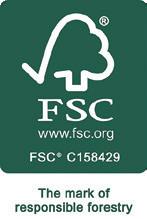
From the Editor
Going, going, gone. It’s perhaps an apt phrase for some of those amid the devastation of Cyclone Gabrielle in February, such as Philip Barber of Petane (on the cover this month) as he watched his steel tractor shed rip apart and its tractors float away. Appropriate too for those who’ve struggled against disease pressure this season, with a wet spring and summer in the North Island taking some of the ripest, sweetest fruit and dropping it to the vineyard floor.
But ‘going, going, gone’ will also ring out in an Auckland auction house in April, seeking a premium price for Petane’s silt-rescued wines, in just one of many helping hands on the task of recovery. They included the efforts of local communities to don gumboots and wield a spade, to prepare and deliver meals for volunteers, and to step up and assist seasonal workers displaced by the disaster.
There’ve been donations to hard-hit wine folk via the Gisborne and Hawke’s Bay Winegrowers Associations, while restaurants and wine companies have literally been ‘Cooking up a Storm’ to raise funds for affected communities (see page 8). Some wine companies have found other valuable ways of helping cyclone-struck colleagues, like those in Marlborough parting ways with some of their Chardonnay to help winemaker Tony Bish, who’s lost 75% if his crop to Gabrielle. “Thanks to our colleagues in Marlborough helping us through a cyclone, we’ll be able to keep continuity in the domestic market,” he says.
The recovery will be long for those worst affected, but Hawke’s Bay and Gisborne’s Cyclone Gabrielle wines – whether made from the season or rescued from the floods – will surely have something unforgettable about them. A hint of historic resilience, an aroma of heroic harvesting, and the character of a community strengthened by catastrophe.
Sophie Preece EDITOR
Contributors
Oliver Styles
Journalist and winemaker Oliver Styles went to Eskdale to help Petane wines with the clear up following Cyclone Gabrielle
Go to page 25
Joelle Thomson
Writer and wine lover Joelle Thomson speaks to Kate Radburnd about a lost vintage, and to Claire Pinker about a life in wine.
Go to page 29 and 40
Emma Jenkins MW Riversun Nursery’s Vision 40:40 was a stimulating, thought-provoking event that considered the past 40 years, and the 40 years to come.
Go to page 48
Power, cooling and heating specialists for wineries
With over 20 years’ experience working with the wine industry throughout the New Zealand Pacific region, we understand what it takes to enhance productivity and decrease costs for your winery. We can help you make your vintage a success by:

Controlling fermentation
Providing temporary cooling for cellars or other critical functions
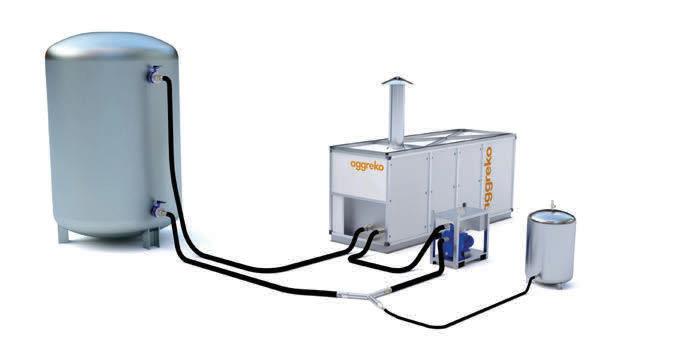


Providing additional power when needed
We are on call 24 hours a day, seven days a week to serve you.
Warehouse cooling Extra chilled water for tank cooling Hot water for seasonal peak loads Call us to learn more 0800 003 921
From the CEO
Together, Stronger
PHILIP GREGAN
Summer 2023 will live long in the memories of growers and wineries in the North Island, with record rainfall in several regions making for a very challenging season. Cyclone Gabrielle added to an already tough year, with individual businesses hit hard. In some cases vineyards were wiped out and a lifetime’s work was eliminated in one devastating 24-hour period.
The response to the impact of the cyclone is now well underway, but the road to recovery will be long and difficult. Government funding will be critical to the infrastructure rebuild (and the timing of that), while the level of support offered to affected businesses will be an important factor in private sector reinvestment decisions.
The impact of the cyclone on vineyards and wineries elicited a strong response from the wider New Zealand wine community. Offers of support came from growers and wineries across Aotearoa, all wanting to help out their colleagues in affected regions. Donations to regional charitable trusts will help support the activities of regional associations in coming months.
The impact of the cyclone also highlighted the strength and importance of regional wine associations in the affected regions, which have played a critical role in coordinating responses at a local level. They have worked tirelessly to provide much needed support to those who are faced with a monumental task of assessing damage, undertaking the clean-up, and considering their future. This support will be needed throughout the next few years and beyond.
For its part, New Zealand Winegrowers (NZW) has focussed on the issues where we can make a difference. We provided additional funding for Hawke’s Bay Winegrowers and initiated our emergency response system. We responded to numerous queries from members, and have
provided advice across a range of issues to growers and wineries. With funding from the Ministry for Primary Industries (MPI), we partnered with Hawke’s Bay Winegrowers to engage viticulture specialists to provide on-the-ground advice to affected vineyard operators. Currently we are seeking to quantify the cost of the storm to provide information to MPI that will help inform government support for the recovery phase.
interests. And you can guarantee that in a hugely dynamic sector like the New Zealand wine industry, there will be lots of diversity – from regional and varietal to markets and business models, and the list goes on. That diversity is without doubt one of the driving forces behind the success of the sector – it provides our customers with more reasons to buy more New Zealand wine, on more occasions.
The storm and its aftermath have been a timely reminder of the ties that bind our New Zealand wine community together. Just as with the Covid-19 pandemic, we saw a strong and united response from across the sector, with individual businesses and industry bodies working together in pursuit of common goals. Once again in tough times, it has been made clear that we will generate the best outcomes for individual businesses by working together in a united way.
Of course, ‘together’ does not mean ‘the same’. In any industry body with more than 1,400 members there is always going to be a diverse range of business models and
While that diversity is hugely important, underlying it are some fundamental shared interests and values; together these shape the activities of NZW. For example, all our members either grow grapes and/ or make wine in New Zealand. That means they have a shared interest in understanding the rules governing grape growing and wine production in New Zealand, and influencing the shape of those rules. They have a shared interest in how to take best advantage of our unique growing environment, how to protect that environment, and in telling the stories about the unique attributes that comes from growing grapes and making wine in this very special place. They have an interest in getting the best access to markets, whether in New Zealand or overseas, and shaping the rules around that market access to their advantage. These shared interests are reflected in the focus we have on research, environment, advocacy, and marketing, supported by strong comms and investment into regional organisations.

Cyclone Gabrielle tested growers and wineries in the North Island in ways not seen in a generation.
The response to the cyclone’s impact demonstrated once again, the strength and resilience of the New Zealand wine community. It has reminded us allgrowers, wineries, regional and national industry bodies - that together we are stronger.
6 I NEW ZEALAND WINEGROWER I APRIL/MAY 2023 FROM THE CEO
“Once again in tough times, it has been made clear that we will generate the best outcomes for individual businesses by working together in a united way.”
Philip Gregan
your
Accurate sensors mean:
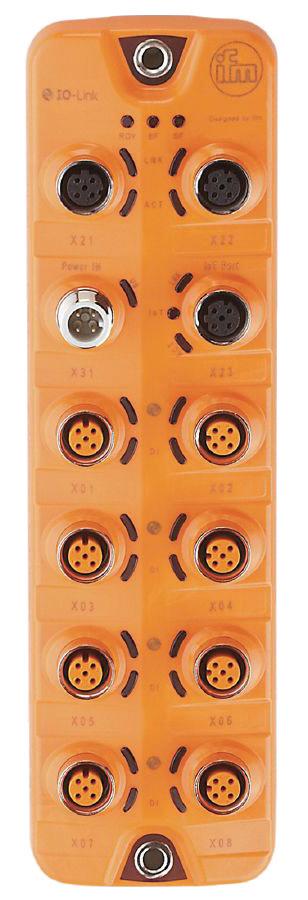
• Monitor wine quality 24/7
• Perfect wine temperature control
• Precise wine density reading
• Minimise waste
Temperature control is a critical quality parameter in wine production. ifm’s wine tank control solution assists in maintaining a stable temperature of the wine during the various phases of its fermentation and processing to ensure that the final wine quality is acceptable.



By controlling the temperature, the wine maker controls the biological process and

Easy to use, pre-configured, no programming necessary
Plug and Play
Trending Data allows trend analysis from past procedures and historical data
Tank and Plant Alarms
run dry, level switch
Scalable to include additional measurements
Remote monitoring and control enabled

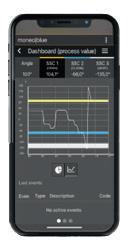
Ensuring Final Wine Quality Ph: 0800 803444 sales.nz@ifm.com | www.ifm.com/nz
Ditch the guess work, unlock the full potential of
wine!
PLC Power Highest accuracy LR radar level sensor (+/-2mm/10m) TCC: the most precise temp sensor available TCC: the most precise temp sensor
LMT:
MVQ:
sensor
0...90
34 bit high resolution pressure sensor 34 bit high resolution pressure sensor Monitor your processes ifm Winegrower A4 advert.indd 2 21/03/23 11:13 PM
available
valve position
(monitoring
º)
Cyclone Gabrielle Relief Funds
The effects of Cyclone Gabrielle have left many in North Island wine communities at a loss, with the destruction and devastation of homes, vineyards and wineries. Hawke’s Bay Winegrowers Charitable Trust has set up a Cyclone Gabrielle Relief Fund, with 100% of donations to go to those most in need in the wine community. The charitable trust will match donations up to $30,000. Gisborne Winegrowers has set up a Cyclone Gabrielle Relief Fund via Sunrise Foundation with 100% of donations made to the fund going to those most in need in their wine community. Other fundraising initiatives have been rolled out since the cyclone, including from wine companies and restaurants involved in ‘Cooking up a Storm’ last month, raising funds for flood victims. For information on how to donate to the Hawke’s Bay and Gisborne trusts, go to nzwine.com/cyclonegabrielle.

MPI recovery fund
As of 14 March, 3% of all grants approved through the Ministry for Primary Industries (MPI) Cyclone Gabrielle recovery fund – available for clean-up and recovery activities – were for vineyards. MPI has also earmarked $4 million of targeted funding to help rural communities with immediate recovery efforts, through which $90,000 was granted to New Zealand Winegrowers to bring in expertise on vineyard recovery and $25,000 to Hawke’s Bay Winegrowers to help with mental health and wellbeing programmes. An MPI spokesperson said government was considering next steps for support as the impacted regions move to recover and rebuild from these events.
Cyclone Bola to Gabrielle
BRI has created a fact sheet using information gathered from growers who dealt with Cyclone Bola in 1988. The destruction caused by both cyclones was similar in many respects, and some remediation and recovery approaches applied with Bola are relevant to the damage experienced by Cyclone Gabrielle. Check it out at bri.co.nz. For more on Cyclone Gabrielle, go to page 20.
Subregional wine map
Appellation Marlborough Wine (AMW) has launched a Wine Map of Marlborough, delineating subregional influences. With 50 years and around 30,000 hectares under its belt, the region has identified growing areas with distinct microclimates and stylistic features, says John Buchanan, AMW chair. “And the Wine Map of Marlborough represents the first genuine attempt to map these in a detailed way.” AMW is a member-led organisation established in 2018 to protect the integrity, authenticity and brand value of wines produced within its region. The map project was driven by the Marlborough Wine Map Collective, a team of five AMW members including Simon Waghorn of Astrolabe, Matt Thomson and Sophie Parker-Thomson MW of Blank Canvas, Ivan Sutherland of Dog Point, Brian Bicknell of Mahi and Brendan Neylon of Rapaura Springs. “We robustly debated and defined the current subregional hierarchy of Marlborough,” says Matt. The resulting map is “a vital resource in understanding the subregional detail and diversity of Marlborough”, says John. “We look forward to making it available to a wider audience, including industry colleagues, wine educators, and engaged consumers.”
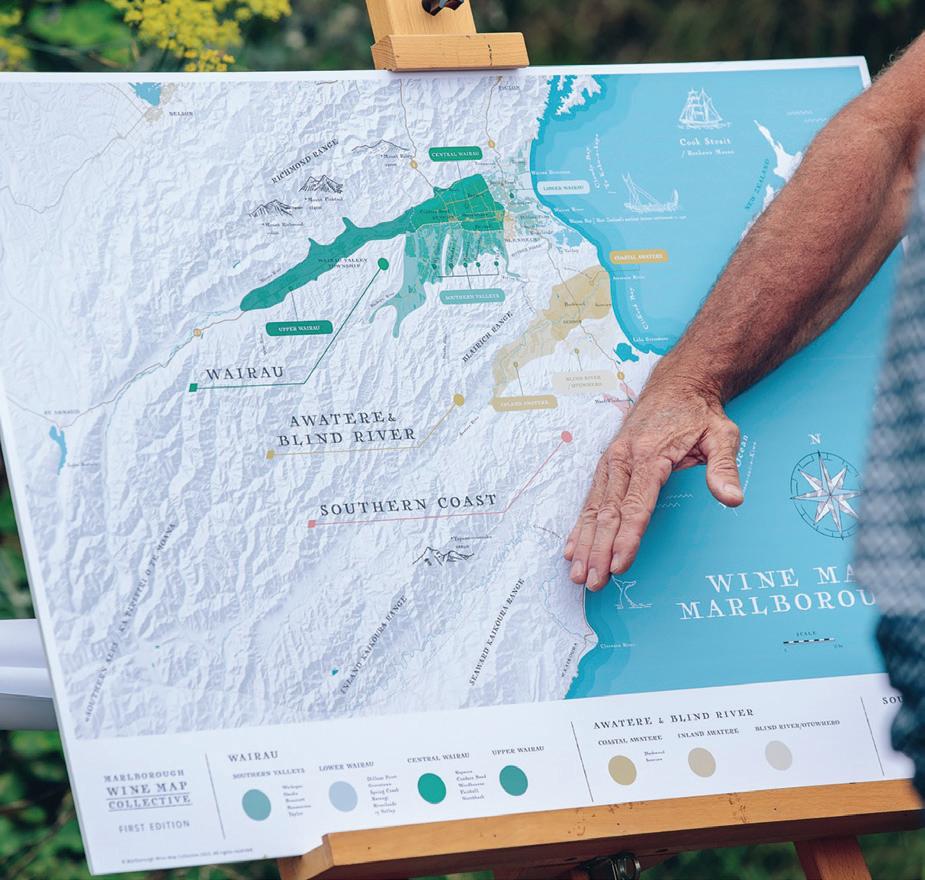
8 I NEW ZEALAND WINEGROWER I APRIL/MAY 2023 NEWS BRIEFS
Philip Barber. Photo Richard Brimer
Kiwi Sommelier in 8th place
New Zealand sommelier Andrea Martinisi was placed 8th in the world at Association of Sommeliers International (ASI) World Best Sommelier 2023. He was one of 68 champion sommeliers from 65 countries who competed over five days at the event in Paris. “It’s such an honour to compete for New Zealand for a second time and to know that I am coming face-to-face with the best sommeliers of the world,” he says. “I have learnt so much from these competitions because they force me to get better, to study and to focus and to think about regions and drinks from all over the world that I would otherwise never know about.”

Pinot Programme Workshops
The Pinot Noir Programme aimed to help diversify the New Zealand wine industry and enable high-quality Pinot Noir production at higher yields. The research phase concluded in 2022 and now Bragato Research Institute plans to extend the findings to winemakers over three years. That kicks off in May and

Australia Market Consultant
New Zealand Winegrowers (NZW) welcomes Catherine Wansink on a part time secondment as Australia Market Consultant. Catherine currently holds the position of Commercial Business Advisor at New Zealand Trade and Enterprise (NZTE) and supports the growth of New Zealand exporters largely in the premium beverages space. ”With Australia being the third largest export market for New Zealand
wine and arguably one of the toughest to operate in, we’re eager to ‘turn up the noise’ on New Zealand wine over the Tasman,” says Charlotte Read, NZW General Manager Marketing. “Our goal is to reinforce the premium positioning of our wines, and further support New Zealand wineries already there, and those who may wish to have a presence in the future.”
During her secondment, Catherine
June, with a series of workshops on yieldquality interactions. The workshop will have presentations from researchers inside of the programme, international research, local perspectives and a tasting of research Pinot Noir from the 2022 vintage. To register, head to nzwine.com/research-events
will focus her efforts on sharing the latest New Zealand wine stories and the new ‘Altogether Unique’ brand platform. NZTE Regional Director Australia Pacific, Glen Murphy, says the organisation is delighted to be able to further support the growth of New Zealand wine in the Australia market “by investing in the ongoing partnership between NZTE and NZW, to assist exporters businesses to grow and thrive”.
NEW ZEALAND WINEGROWER I APRIL/MAY 2023 I 9 NEWS BRIEFS
Upcoming events
To have events added to our calendar contact sophie@sophiepreece.co.nz
Clyde Wine and Food Harvest Festival
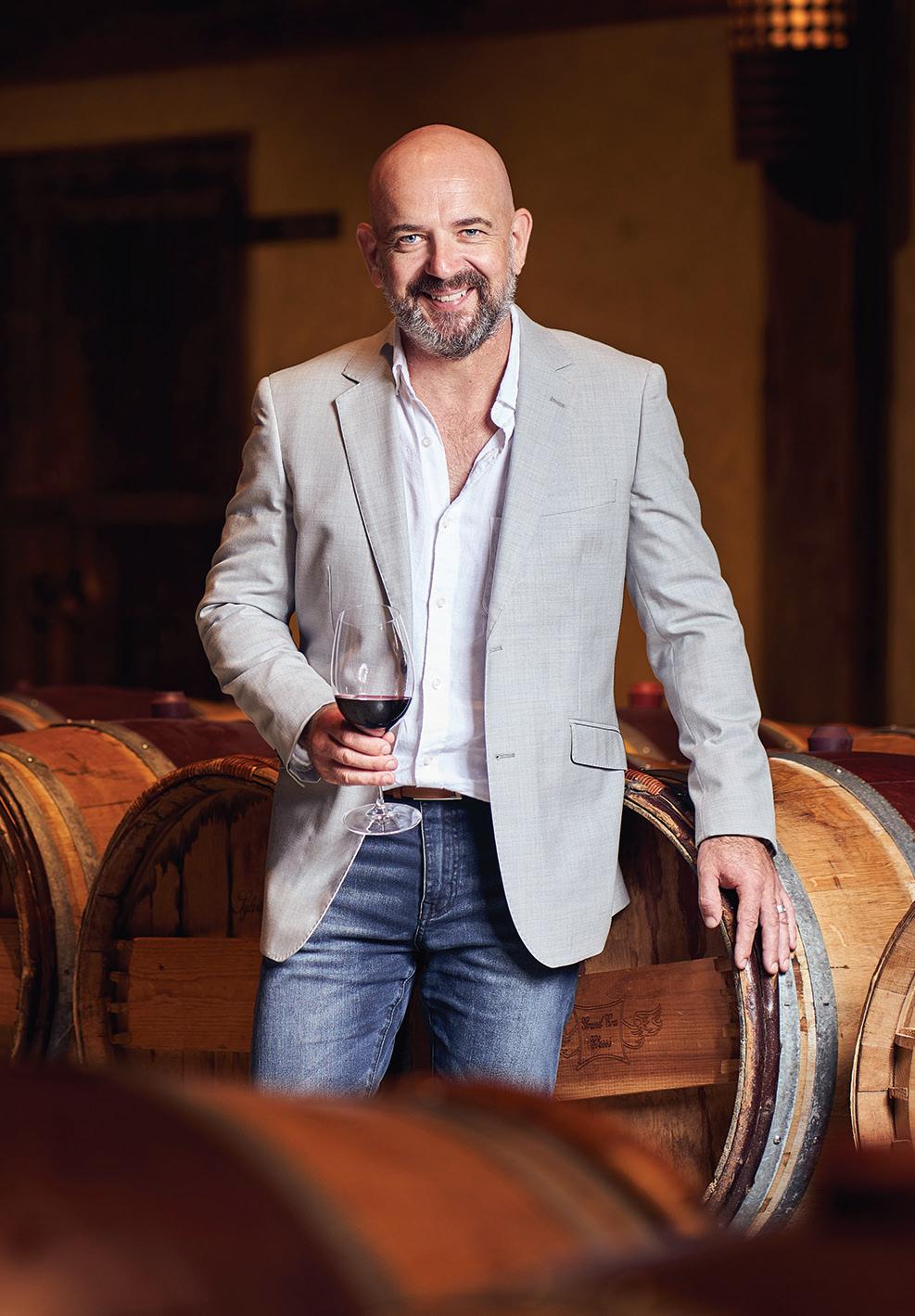
9 April
clydewineandfood.co.nz
The annual Clyde Wine and Food Harvest Festival is held annually on Easter Sunday in the picturesque main street of historic Clyde. The festival celebrates wines from the world’s most southerly vineyards, attracting thousands of visitors to enjoy the food, wine and unique location. Clyde’s historic precinct has many of its original schist stone buildings dating back to the 1860’s and is surrounded by the stunning Central Otago scenery of schist rock hills and mountains. Tickets are available online.

Hawke’s Bay Regional Research: A Winemaker’s Workshop
10 May
Bragato Research Institute (BRI) is holding a one-day winemaker’s event on 10 May at Mission Estate to showcase research on Chardonnay and Syrah varieties. There will be presentations accompanying wine tastings led by Winemaker Michael Brajkovich MW of Kumeu River Wines and Chief Winemaker Chris Scott of Church Road Winery (pictured). Dr Chandré Honeth from EIT will share her viticulture research and Dr Andrew Waterhouse from the Robert Mondavi Institute of Wine and Food Science, USA will share his knowledge and expertise. There will also be a group discussion to help inform the next wave of wine science research. nzwine.com/research-events
Winter F.A.W.C
June 2-23
fawc.co.nz
The Food and Wine Classic (F.A.W.C) is back this winter with four wonderful weekends planned for June. The programme goes live on 27 April, but expect the best winter decadence, with hearty fireside fare, warming red wines, and a line-up of talented chefs, award winning winemakers and artisan brewers. Sally Duncan is excited about the Winter F.A.W.C events. “What a great time to support all of our amazing Hawke’s Bay food and wine producers and to celebrate our amazing region.”
Wine Dogs - The Event
7 May
winedogs.co.nz
The creators of ‘The Big Dog Walk’ are embarking on a new venture with Wine Dogs, a one-off event at Elephant Hill to raise funds for Hawke’s Bay winegrowers hit by Cyclone Gabrielle. There’ll be a luxurious dog walking trail taking in beautiful vineyard views, treats for the canines, and wine stations for their humans. After the walk, there’ll be prizes for best wine dog fashion and most matching human and dog, but this ‘pawsome’ event is not limited to dog owners, as music, food trucks and wine are also on offer. Profits after costs will go directly to the Hawke’s Bay Winegrowers’ Relief Fund.
The Chardonnay Affair

26-28 May
thechardonnayaffair.co.nz
The Chardonnay Affair is a three-day celebration of all things Chardonnay on the East Coast of New Zealand. Ride the historic steam train WA 165 from Gisborne railway station through the countryside and indulge in the Chardonnay In The Vines long lunch. It’s an excellent way to follow International Chardonnay Day on 25 May.
Grape Days 2023
Marlborough - 18 July
Hawke’s Bay - 20 July
Central Otago - 26 July
nzwine.com/grape-days
Grape Days will be held in July 2023 to share the latest industry research. BRI is working with its science partners and local industry experts to deliver a regionally tailored programme of relevant and thought-provoking research. Tickets will go on sale in May.

XXXXXXXXX 10 I NEW ZEALAND WINEGROWER I APRIL/MAY 2023
Organic & Biodynamic Winegrowing Conference
When Bart Arnst dug into organics in Marlborough in 1996, the blooming interrow was a pretty lonely place. Fast forward two decades to the first Organic & Biodynamic Winegrowing Conference in 2015, and he was surrounded by throngs of practitioners, researchers, managers and marketers.
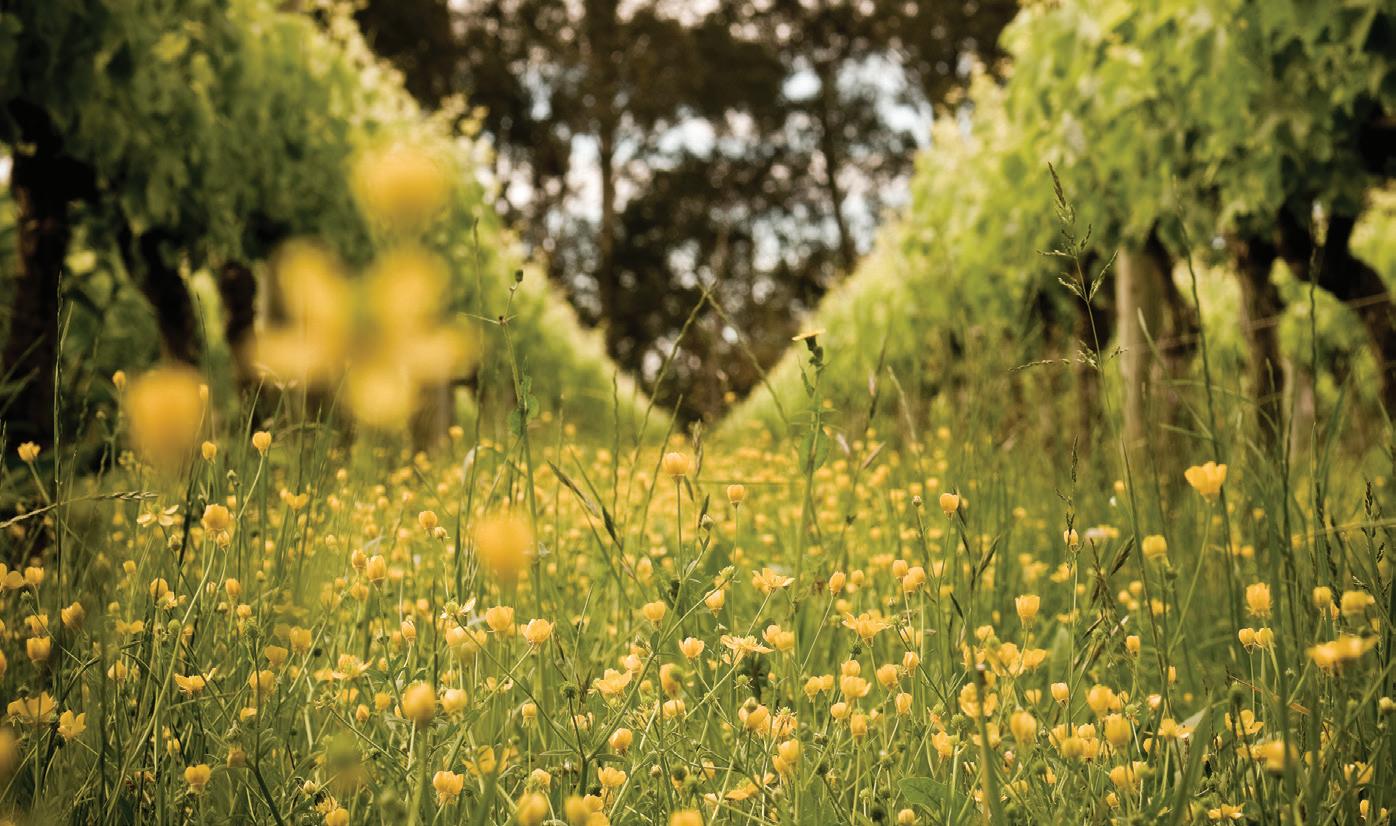
The organic viticulture consultant, who was one of the founding members of Organic Winegrowers New Zealand, expects even more interest at the fourth conference, taking place this winter after a pandemic hiatus. “We probably get easily over 50% of participants who are not organic. We are providing information to people who, A, could be sitting on the fence or, B, are starting to understand the processes they have been using don’t have much time left,
so what are the other options out there?” When he drives around Marlborough these days he sees organic principles at play in most vineyards, whether they’re certified or dipping their toes into the possibilities. “How many conventional wine companies now have a sustainable spiel about growing flowers down their interrow?” There’s been a lot of research put into why that and other processes are good for the soils, vines, grapes and wines, Bart says. The three-day 2023 conference will build upon key pillars of Create, Care and
Connect, with an impressive gathering of speakers from across the globe, including Dr Andrew Smith from the Rodale Institute, and writer Elaine Chukan Brown, aka Hawk Wakawaka. Not all the speakers are directly related to vineyards, with several being more general experts on soil health, for example, says Bart. “There’s a greater understanding now that if you get things happening underground, your upstairs problems are minimised.”
20-22 June
organicwineconference.com
Pairing exceptional quality
There’s an art to combining label materials and print techniques. You can trust we have the knowledge and experience to steer you in the right direction.
The Clos Ostler label features delicate notes of sculpture emboss and pearl foil shells. These pair perfectly with our uncoated, textured, and sustainable Mt Aspiring label material.
Explore the possibilities with us.
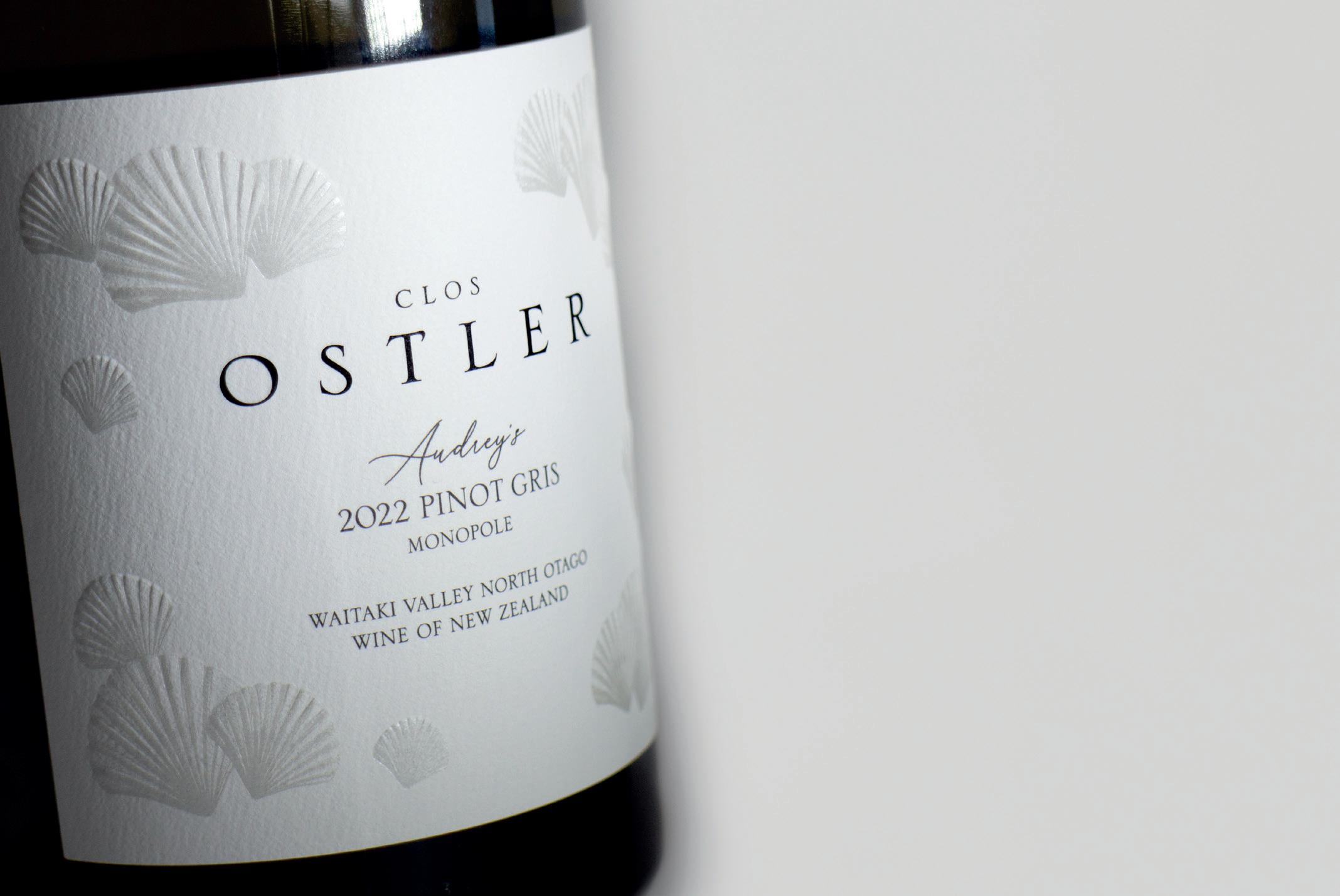
NEW ZEALAND WINEGROWER I APRIL/MAY 2023 I 11 UPCOMING EVENTS
0800 865 223 • www.rapidlabels.nz
Millton Vineyards
™ Licence Number: 807004
The Marketing Place
Taking NZ wine to the world: Bringing the world to NZ wine
Read On
We’re only one quarter of the way through 2023 and much like recent years, it already feels like a rollercoaster. Starting off at pace with the launch of the new brand platform ‘New Zealand Wine, Altogether Unique’ during New Zealand Wine Week (NZWW), Cyclone Gabrielle then rolled in to bring some of the most catastrophic weather events to ever impact some of our wine regions.
The London Annual Trade tasting on 7 February was the first physical event to showcase the new brand identity. The London Tasting is the longest running New Zealand wine event and remains as popular as ever, with more than 400 sommeliers, multiple retail buyers, independent wine merchants, importers and leading wine writers attending.

A popular feature of the tasting this year was the New Zealand Wine Top 50 for Independent Wine Merchants, selected from 350 submissions by a team of 12 tasters from independent wine merchants across the country. We also held a business briefing to a full house to show the continued importance of the United Kingdom market for New Zealand wine.
In late March we will take the New Zealand Wine story to the world, with the New Zealand Winegrowers (NZW) pavilion at ProWein, returning after a three-year break. This is one of the largest wine expos in the world, capturing a global audience. It’s going to be a novelty reforging connections outside of the virtual world! Wishing you all the very best for vintage 2023.


Kia kaha, Charlotte Charlotte Read is NZW General Manager Marketing.
New Zealand Wine Week
Our third annual NZWW concluded in early February. Across the virtual activations, the week reached almost 1,300 trade from more than 40 countries. NZWW social posts reached almost 50,000 people more than 75,000 times, with almost 10,000 engagements. With a focus on innovation and the future of our industry, the sessions impressed the top trade in our key markets, with one United States Master Sommelier commenting following a session: “Thank you - So much to learn and share about really dynamic cutting edge NZ Wines!” A Canadian writer remarked of the “NEW” New Zealand wines, that “it was certainly one of the best line-ups for a virtual tasting I have ever experienced in some time”.
If you are interested in seeing the stories we told the trade during the virtual NZWW sessions, you can watch the sessions at nzwine.com/nzww23, or www.nzwine.com/conversations in the NZW Trade Hub. Thank you to everyone who took part and made some noise for NZWW.
Intel & Insights
Category Health & Consumer Profiles in the US, UK & Australia
NZW is now conducting an annual market research study to track the brand health of the New Zealand Wine brand in our major markets of the United States, United Kingdom, Australia and New Zealand. The first year results were presented to members via a webinar in March. The study seeks to understand wine consumer behaviour and highlight prospects for future growth in these markets. For example, are there consumers who are open to purchasing New Zealand wine but are yet to do so?
The research also provides a read on the New Zealand wine consumer in these markets, looking at key demographics, consumer segmentation and behavioural information including key image associations and critically, purchase drivers.

Watch the webinar, see the full presentation slides, or read the summary of the key findings at nzwine.com/members/ consumerinsights. Additionally, full reports by market, including consumer information by market, can be found at nzwine.com/ members/marketing/market-intel/ by clicking through to the relevant market and section.

12 I NEW ZEALAND WINEGROWER I APRIL/MAY 2023
THE ONE AND ONLY.
The Fendt 200 V/F/P Vario comes standard with FendtONE –the latest and greatest in onboard technology.


FendtONE Onboard Technology:
Unique interconnection of up to 2 integrated screens
World first freely programmable armrest with 2-way, multi-function joystick Enables individualisation of entire working environment
The Fendt 200 V/F/P Vario delivers the power and performance you need to drive your business now and in the future.
www.fendt.com/au It’s bold - It’s Fendt.
The Social Place
Bernard Budel, Global Sales Director at Invivo, talks all things NFT, and becoming New Zealand’s first winery to launch a sell-out collection of NFTs.

First things first, what in the metaverse is an NFT?
Simply put, a Non-Fungible Token (NFT) is essentially a voucher of authenticity for digital assets that can be traded and tracked with blockchain technology. Here at Invivo, we became the first New Zealand winery to sell out a collection of NFTs. In December 2021 we launched the Graham Norton He-Devil NFT collection, marking a New Zealand wine first, to mark the launch of our new He-Devil Malbec wine, made in collaboration with Graham. We will be releasing a new collection of NFTs early this year.
Some companies are using this technology for wine traceability and authenticity. What’s Invivo’s pitch?
Invivo was founded in 2008 by two Kiwi school friends – Tim Lightbourne and Rob Cameron – who set out to do things a little bit differently and bring the fun and approachability into wine. Think less stuffiness and more accessibility! Tim, Rob and the wider Invivo team have grown the business over the years into a global beverage company.
From starting the business – quite literally by maxing out credit cards – to producing more than 2.5 million litres of wine annually in 2021, Invivo has disrupted the wine world and sees NFTs as another chance to explore the limits and enhance customer enjoyment. We enjoy building the Invivo community, from connecting with our customers all over the world to our shareholders. We see our long-term NFT strategy as an extension of building our community – but in the digital world. This is about continuing to innovate in the wine world in modern times. Some of our NFT owners might not be familiar with Burgundy, but they will understand what blockchain means.
This technology is new and so perhaps
the ultimate utility has yet to be ‘discovered’, but only through having a pioneering and experimental outlook will companies find the best use case for NFTs.
What might an Invivo NFT get me?
The owners of our first ever ten He-Devil NFTs have unlocked an annual ‘first release’ bottle of new wines, a physical static print of their artwork signed by the Invivo cofounders, and membership to the Invivo Federation of Friends (IFF). IFF Membership is allocated with every premium Invivo NFT and allows the holder to unlock exclusive virtual wine tastings, discounts on Invivo products and special experiences. As an added bonus, one of the ten original NFT editions was eligible to unlock a surprise, virtual one-on-one wine tasting experience with Graham, Tim and Rob.
Your first round of NFTs sold out in November. Was the uptake greater than expected?
With more than 15 million bottles of wine sold since launch of the GN range, we had anticipated that there was a fan-base out there wanting to have their own collectable Invivo NFT, and this was an accurate prediction with the NFTs selling out within days. That’s not to say selling out was a sure thing when we started. From ensuring we communicated the real-world benefits being attached to this digital world asset, to educating people on what an NFT is, or
how blockchain technology works, we had to be very hands on and proactive.
What’s an IFF and why does it matter?
Invivo Federation of Friends (IFF) is a membership that is allocated with every premium Invivo NFT. IFF allows the holder to unlock exclusive virtual wine tastings, discounts on Invivo products and special experiences throughout the year. It’s about marrying the digital world with bespoke physical experiences: this was really important to the team when launching out NFTs – we wanted a strong point of difference and our NFTs to reflect our values here at Invivo.
Tell us about your digital community.
We have always enjoyed building the Invivo community and creating our very own NFTs was a great way to drive growth in our digital communities – building value in the digital world and creating an exclusive community with the IFF who will be eligible for Invivo surprises over the coming years.
Invivo was the first Southern Hemisphere winery to equity crowdfund. How important is it to the brand to sharpen the cutting edge?
At Invivo, we were the first winery in the Southern Hemisphere to equity crowdfund successfully back in 2015 and now have more than 600 shareholders. So we always aim to do things a little differently and creating our IFF community seemed like a natural extension. Creating our own set of NFT’s in 2021, we hope that the future of Invivo could include many other digital aspects, for example creating a wine bar or vineyard in the metaverse.
14 I NEW ZEALAND WINEGROWER I APRIL/MAY 2023 SOCIAL PLACE
“Only through having a pioneering and experimental outlook will companies find the best use case for NFTs.”
Bernard Budel
carry
We treat bulk wine with the same care that we treat the most precious bottle of wine. Our R&D team collaborates with wine experts to design specific flexitanks that preserve the quality of the wine and its freshness, and that are 100% recyclable. We provide end-to-end solutions, from design and manufacturing to shipping and recycling, at a global level.

www.hillebrandgori.com

We don’t carry wine in bulk, we
tons of moments to savor.
Vintage 2023
Winegrowers in the North Island have worked through what’s likely the most challenging growing season in memory, with inclement weather capped off by a devastating cyclone. Meanwhile, tinder dry Central Otago has enjoyed a “dream season” and reports from Marlborough are “very exciting”.
Northland and Waiheke
The 2023 harvest has been the toughest in Rod McIvor’s 30-vintage career. Speaking from his Kerikeri winery on 9 March, 90% of the way through picking, he says they suffered no real damage from Cyclone Gabrielle, with white varieties in before the onslaught. But a cool spring, low sunshine hours, and high rainfall are “not a good recipe”. A period of improved weather that took the pressure off the end of the harvest was “too little too late”, he says. “That’s not to say vintage has been a disaster. Fruit has been clean with reasonable volumes, but brix levels have been low.”
According to VineFacts, Kerikeri recorded 358.8mm of rain in January, at 319% of the long-term average (LTA). The further north fruit is grown the better the quality this season, “but generally not many parcels are destined for high end reds”, Rod says. “One to remember, but hopefully not one to be relived.” He’s looking forward to a forecast change in the weather patterns affecting New Zealand. “Bring on El Niño.”

It was also one of the most challenging seasons Man O’ War Viticulturist Sam Taylor
Hawke’s Bay and Gisborne
Hawke’s Bay and Gisborne winegrowers were hit hardest by Cyclone Gabrielle, capping off an inclement season already beset with disease pressure. But despite the grim stories of lost crops and broken vineyards (see pages 20 to 31), both regions have yielded stories of successful harvests, against the odds, thanks to determined viticulturists, winemakers, vineyard managers and workers, supported by caring communities.
In the VineFacts sent to members on 9 March, Plant & Food Research data cruncher Rob Agnew reveals that Gisborne was hit by 460.3mm of rain in February, which is 655% of its LTA of 70.2 mm. The Matawhero-Awapuni met station in Gisborne recorded 195.8 mm in the 24 hours ending 9am on 14 February, with 246.7mm of rain in a 72-hour period ending 9am on 15 February.
Mark Thompson, Chief Winemaker at GisVin and Chair of Gisborne
has experienced on Waiheke Island, where lower than normal temperatures and some extreme weather events have made for a late and slow ripening period. An “extremely wet” winter kept machinery out of many vineyards, and a cool, wet and windy November impacted flowering. “Varieties most effected for us were Chardonnay, Pinot Gris and some Syrah blocks,” Sam says on 13 March, halfway through the harvest. Higher blocks, and those most exposed to wind, were hit hardest, but total yield predictions are near the average annual total.
The wet weather has supported grass and foliage growth, as well as high levels of disease pressure. Downy mildew and powdery mildew could be found in the upper canopy late in the season, and “compromised canopies have been slow to ripen fruit as a result”, Sam says.
On the plus side, Man O’ War has a great team, made up largely of young travellers on Working Holiday Visas. “It has taken a large amount of work managing all the comings and goings. We offer accommodation and feel that is a big factor in making us attractive.”
Winegrowers Association, says the flooding had less impact on long term infrastructure in Gisborne than Hawke’s Bay, although some rows were destroyed. But there have
March meant fruit could dry out, lower than desired temperatures mean it’s taking longer than expected, Mark says.
Gisborne has had a great run of good seasons, and he hopes growers will have the reserves required to get through this tough year. “On the plus side, we’ve been pulling in Chardonnay this week and that’s looking bloody good,” he adds. “And there’s always next year.”
been crop losses, with access issues on silt and flood-affected vineyards making harvest impossible for some, while others have come in with light yields. The rain has caused a reasonable amount of splitting, and while a spell of fine weather mid-
In Hawke’s Bay there was 277.1mm of rainfall in February, at 509% of the LTA of 54.4mm. The Lawn Road weather station recorded 129.6mm of that total in the 24 hours ending 9am on 14 February 2023. As with Gisborne, the rain came in the wake of an already wet growing season, with 193% of LTA rain recorded in the five months from September to January, Rob says.
Sacred Hill Chief Winemaker Nick Picone says his team are working hard to get the best result out of the season. “If there’s one thing over the years I have learned, it’s not to write off any harvest,”
16 I NEW ZEALAND WINEGROWER I APRIL/MAY 2023 VINTAGE 2023
Man ‘O War 2023 harvest
“You can be really surprised and in fact amazed, as I have been over the years, about what you can make out of challenging vintages.” Nick Picone
he says, fresh from the intrepid tractor rescue of a stranded block of Hawke’s Bay Chardonnay (see page 30). “You can be really surprised and in fact amazed, as I have been over the years, about what you can make out of challenging vintages. And I find it personally rewarding, in sort of a weird way, to make really good wine in a tough year.”
There’s disease pressure across the region, but winegrowers have plenty in the toolbox to address that, Nick says. And while sugars are down, he is seeing some good flavours and nice clean fruit. That includes Chardonnay at Riflemans, the free draining site of the recent rescue, where remaining fruit is clean with “good potential”, awaiting a handpick in late March.
“I know some have been hit so hard, but we thankfully have the ability to carry on and hopefully make some good wines,” Nick says. “Let’s face it, we won’t forget this in a hurry.” That statement was true of the Covid vintages as well, and he’s beginning to wonder whether ‘normal’ still exists, as wine companies become accustomed to staying on their toes and adapting when the next challenge comes at them. “You never
know what you’re going to get.”
Meanwhile, speaking from one of Sacred Hill’s Wairarapa blocks while tasting “some
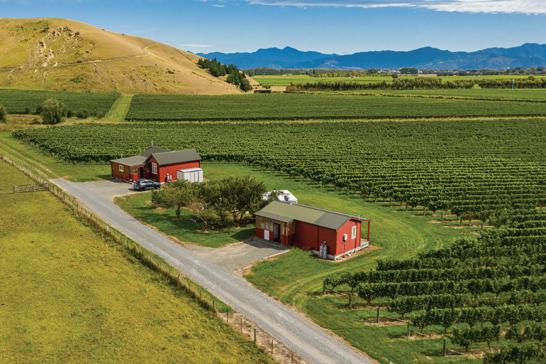

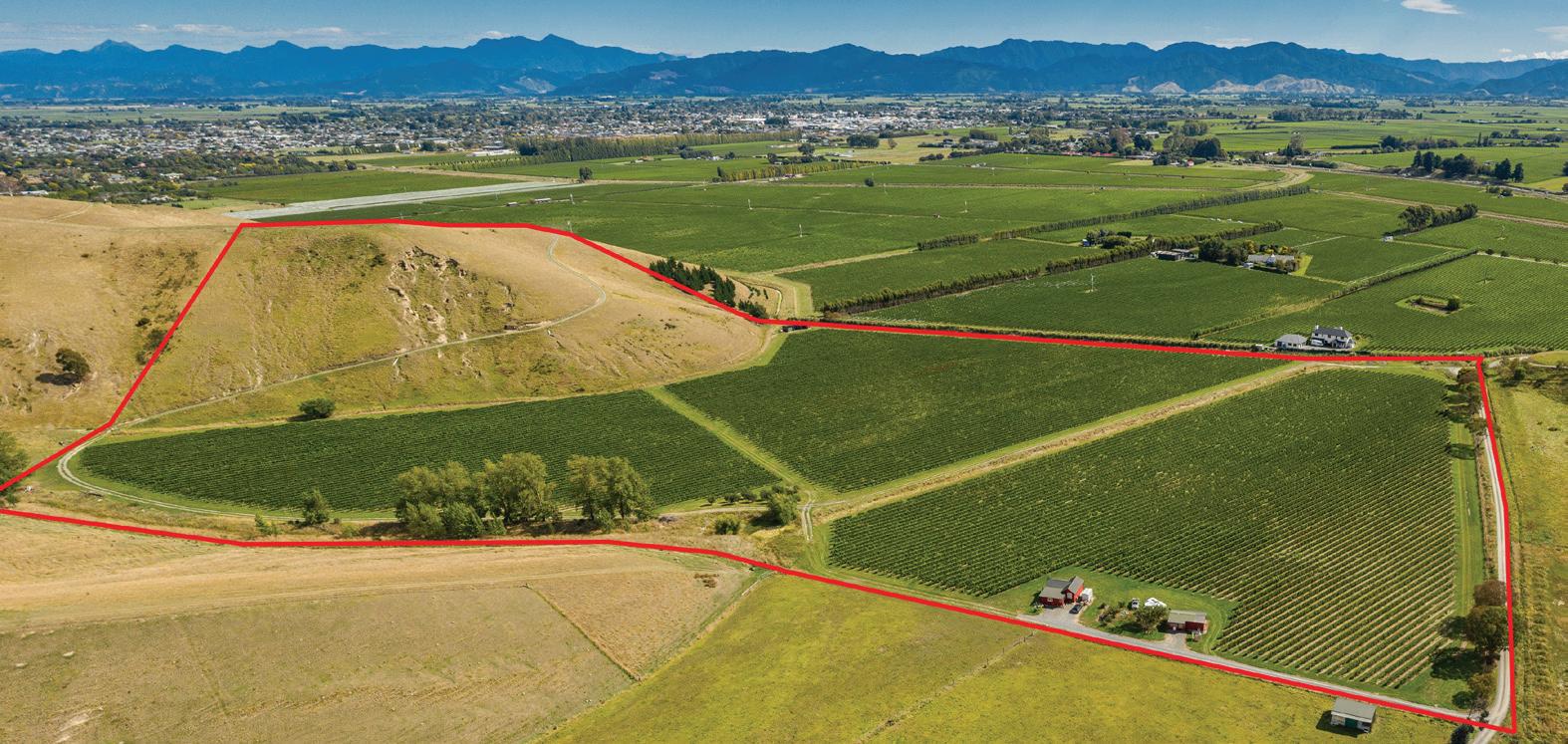
really good Sauvignon Blanc”, there’s still plenty to get excited about in vintage 2023, Nick says.

NEW ZEALAND WINEGROWER I APRIL/MAY 2023 I 17 VINTAGE 2023
Sacred Hill’s Riflemans Vineyard for harvest 2023
Wairarapa
Wairarapa winegrowers “got off lightly” compared to other parts of the North Island this season, says Urlar Winemaker Jannine Rickards (see page 38). But it’s still the “toughest” she’s seen in her 20 years in the industry. The region recorded 106.2mm of rainfall in February, which is 171% of the LTA, according to VineFacts.
“Consistent rain events put much pressure on vineyard teams and vines,” Jannine says, noting that organic growers like Urlar were under the pump, with a labour-intensive summer. “After Cyclone
Marlborough
Despite one of the most challenging Marlborough growing seasons Clive Jones has seen, he’s feeling “very positive” about the 2023 vintage. “Everything is looking really good at this stage; we just hope it remains that way,” says the Nautilus Winemaker and General Manager on 9
Gabrielle we just have to remember many growers further up the motu have had a much more difficult time.”
Speaking on 9 March, as Wairarapa kicked off harvest early due to weather
fruit quite quickly, “but if we get a half decent autumn it’s a good crop,” Clive says. “The vines look quite well balanced. We just have to get it home now.”
Weather summaries for December through February have been close to typical, and fruit is looking sound in the lead up to the Sauvignon Blanc harvest, which Nautilus expects to begin near 23 March. That’s later than recent harvests, but close to the long-term average, he adds. “Kicking into Sauvignon in the last 10 days of March is very typical. “We are tasting it on the vines. They’re not ready yet,
pressure, she says Chardonnay and Sauvignon Blanc are looking good, along with later ripening Pinot Noir clones. “If we get some sunshine for autumn that would be ideal.”

Jannine, who is co-chair of the Wairarapa Winegrowers Association, says the region continues to be challenged with labour shortages and lack of accommodation, but it was heartening to see international travellers back for harvest. “Disruptions have become a bit of the new norm but being more organised and good planning helps to mitigate that some of the time.”
March, a week after the first fruit was harvested for sparkling wine. “We think we’re in a better position than we were this time last year.” Yields are about 10% lower than 2022, which he welcomes. “And while we have had a challenging season, we have nothing to complain about compared to what has happened in the North Island.” Cloudy weather and continued bouts of rainfall throughout summer fuelled disease pressure, and well managed spray programmes – a difficult ask in inclement weather – were key to keeping the threat of powdery mildew, downy mildew and botrytis at bay. More rain could turn the
North Canterbury
In North Canterbury, Greystone Viticulturist Mike Saunders is very happy about harvest prospects, with Pinot Noir his pick for the season, due to good flavour development at lower brix.
According to VineFacts of 9 March, the Waipara rainfall total from July 2022 to February 2023 was 564.8 mm, which is 133% of the LTA of 426.0mm. They
but they are looking promising.”
Speaking on 20 March, Te Whare Ra’s Anna Flowerday says the 2023 vintage is “very exciting”, with “magnificent” fruit crossing their sorting table. “It’s so thrilling to see the wonderful results from all the hard work and dedication that our team have put in over the growing season”.
also had a downpour in early March, coinciding with the North Canterbury Wine & Food Festival, where the odd gleeful attendee opted for mud sliding towards the end of the day. Mike says the rain deterred some, but they still had 2,500 guests at the event, which was postponed in 2021 and 2022 because of Covid-19.
While rainfall has increased disease
pressure, those with a tight spray programme and vigilant viticultural management have clean canopies and fruit. Meanwhile, the rain has resulted in verdant vines, ensuring good carbohydrate stores for next season. Speaking on 13 March, Mike says the first of the bubbly base would come in over the next week, with Pinot Noir beginning the week of 20 March.
18 I NEW ZEALAND WINEGROWER I APRIL/MAY 2023 VINTAGE 2023
“We just have to remember many growers further up the motu have had a much more difficult time.”
Jannine Rickards
“The vines look quite well balanced. We just have to get it home now.”
Clive Jones
Te Whare Ra Mendoza Chardonnay, from 44 year old vines, coming in beautifully for vintage 2023
Vintage 2023 is “very exciting”. Anna Flowerday
Central Otago & Waitaki

At the other extreme of the nation’s weather stats, Central Otago had low rainfall from December through February, with 44.4mm of rain (37% of the LTA) in the 82 days from 1 December to 20 February. However, the three days from 21 to 23 February recorded 40.2mm, going some way to alleviate the long dry spell, Rob says.
Valli Winemaker and Owner Grant Taylor says they’ve experienced the driest growing season in many years, and one of the warmest in a while, with only 2018 bringing higher temperatures. “The usual suspects that reduce crop levels – frost and flowering – basically didn’t show up,” Grant says. “Apart from frost tickling a little early Chardonnay and slightly erratic weather during certain Pinot clones flowering in Bendigo, it has been a dream season.” Uniformity of ripeness and cropping levels across individual vineyards is as good as he has seen.
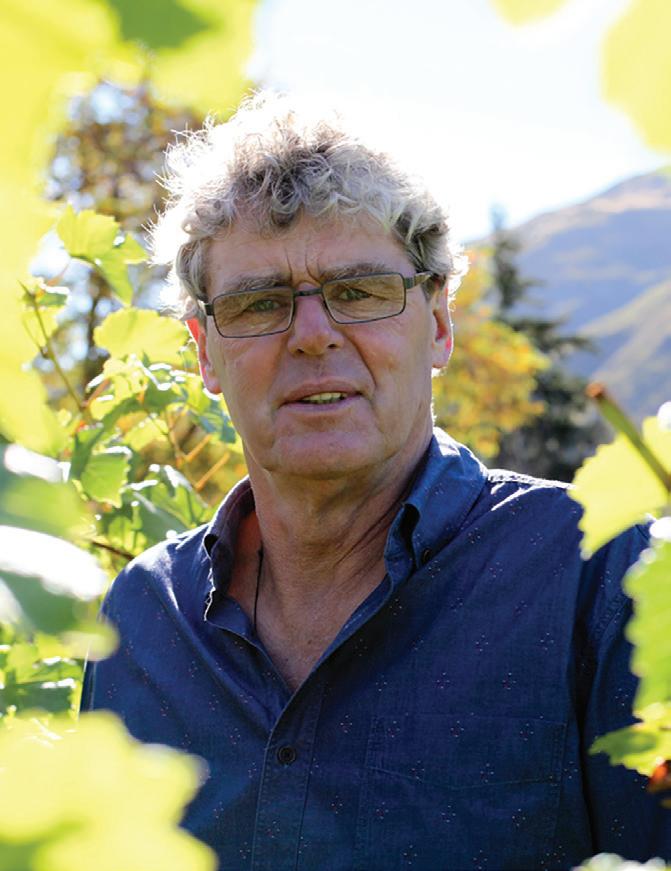
The dry summer did cause some stress on young vines but the late February rain refreshed the outlook. Speaking on 10 March, with harvest of sparkling base well underway, Grant says reports are of “perfectly clean fruit” and yields about 10%


higher than estimated. “I expect/hope this will continue through the still wine harvest.”
Meanwhile, the region has an excess of labour, with many contractors helping out their North Island peers by taking on unneeded seasonal workers. They now have more than they need, “so I think once harvest is in full swing, we should be very well positioned”, Grant says.
Looking to North Otago, Grant says Waitaki Valley started the season well and early, with flowering some time ahead of the Central blocks. “But since then there has been rain more weeks than not so it has gone back to being its usual self and a couple of weeks behind Central.” Poor weather during flowering affected yields in the valley, and he is anticipating two to three tonnes per hectare. “The fruit though is looking very clean and, not picking until late April/May, there is all the time needed to achieve desired ripeness,” he adds. “So it’s fair to say the region is having
It all starts with healthy soil.

100% natural, BioGro certified Supplies readily available source of calcium and sulphate sulphur to support soil health and plant growth.




For more information scan the QR code or go to gypsum.co.nz





a ‘normal’ vintage.”
Grant’s pick of the subregions for vintage 2023 is, “without question”, Gibbston, with flowering coinciding with a period of settled weather, resulting in very uniform bunch and berry size. “And being the coolest Central Otago subregion it’s retaining its acidity better.”
NEW ZEALAND WINEGROWER I APRIL/MAY 2023 I 19 VINTAGE 2023
“It has been a dream season.”
Grant Taylor
Available at:
Grant Taylor
The Focus

XXXXXXXXX 21 I Cyclone Gabrielle Response and resilience 23 I Community Care Supporting seasonal workers 24 I Traumatic Times Philip Barber at Petane 26 I Harvest Strategies The mother of invention 27 I Protecting People Growing a support system 30 I Deere-ing Deeds Sacred Hills’ historic harvest
Cyclone Gabrielle
Stories of destruction, resilience and community in Hawke’s Bay and Gisborne’s flood ravaged vineyards.
Harvest progresses ‘come hell or high water’
SOPHIE PREECE
When Simon Gilbertson was 4 years old, he and his father stood on the beach at Seatoun, watching in horror as Cyclone Giselle sunk the Wahine. When he was 24, Cyclone Bola struck Hawke’s Bay and Gisborne, “and I said ‘nah that will never happen again’.” Thirty-four years on, Cyclone Gabrielle has gutted 50 hectares of Simon’s vineyards, including 30ha in the Esk Valley now wearing more than a metre of silt, layers of forestry slash, the odd car, and several water tanks from “goodness knows where”.
Flood waters also crashed through Simon’s Links Road winery, which was swiftly yellow stickered in the wake of the storm. Within a week, Simon and his shellshocked team had conducted a “counsel of war” over pizza and beer, wading through the water to make plans for recovery, including a long list of certifications rapidly required for a white sticker. The plan, “come hell or high water – pardon the pun”, was to harvest by 10 March, Simon says. “Which was quite a long bow to draw given that we’d had 60cm of water and attendant silt through the winery.”
The next day, a team of 38 turned up with mops, brooms, buckets and shovels, and on 8 March, two days before the target,
grapes arrived at 8am. That effort was about resilience in the face of mammoth destruction, and not letting growers down, as long as harvesters could access the vineyards, Simon says. “It’s tough enough for them as it is. When your single income stream is grapes – and I have been that person before; I know what it feels like – when something like this happens it absolutely sucks your soul completely out of your body.”
The Link Winery story is one of countless examples of human spirit and community support that have flourished in Hawke’s Bay and Gisborne since Cyclone Gabrielle devastated homes, lives, businesses, vineyards and wineries on Valentine’s Day 2023. For all the trauma, there’s been an “outpouring of help from total strangers”, Simon says.
Documenting the devastation
Speaking on the morning the first grapes arrive, Simon is both relieved and aggrieved, with a working winery, but two vineyards practically written off, with tens of thousands of dollars per hectare required to clear the silt. Many in the area feel betrayed by the district council, regional council and forestry operators, he says. “I feel there has been systematic neglect of water security systems and systematic neglect of roading and bridge infrastructure, and neglect of looking at industries like forestry and saying, ‘by the way make sure you clean up your mess’.”
New Zealand Winegrowers (NZW) Chief Executive Philip Gregan says there are varying degrees of impact in Gisborne and Hawke’s Bay, starting with “profound”, encompassing a group of growers and wineries grappling with 100% loss of their


Richard Brimer’s Te Awanga community “dodged a bullet” when Cyclone Gabrielle hit Hawke’s Bay in February, with only minor flooding to the coastal township. But as soon as the photographer heard of deeper impacts elsewhere, he geared up and set off to capture images for the Red Cross. “I thought ‘oh my God’,” he says of his first view of the Esk Valley, capturing scenes of caravans stacked on top of caravans, and a house that had moved 100 metres down the valley.
Richard’s images tell a story of the cyclone in Hawke’s Bay, from community groups sheltering seasonal workers, to winery owners like Philip Barber (this month’s cover image), left dazed by the destruction. When his friend Simon Gilbertson (see image, left) invited him to take a look at his devastated vineyard, littered with silt, slash, cars and water tanks – the sight was “unbelievable”, he says.
WATERBLASTERS
ELECTROBLAST RANGE
ALBERTI HOT CLEANERS

• UDOR ceramic plunger pump
• Heavy duty 1440 RPM motor
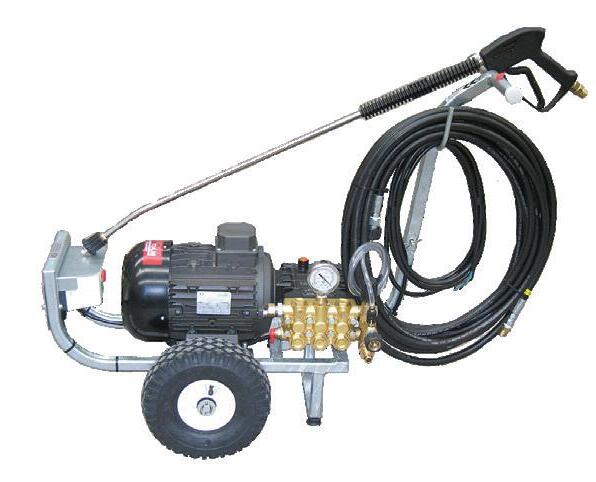
• 230 & 400 Volt
• User Friendly
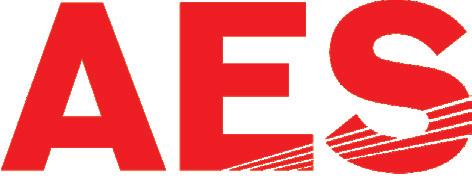
TORNADO RANGE
• Genuine Honda petrol engine
• 10 models from 1800 to 5000 psi
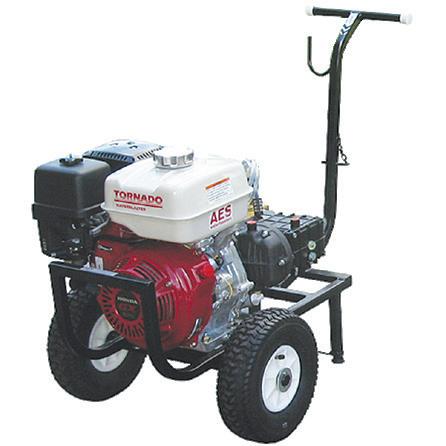
• UDOR ceramic plunger pump & gear-box
• 230 & 400 Volt 1440 RPM motor
• 8 models from1600 to 5000 psi
NEW ZEALAND WINEGROWER I APRIL/MAY 2023 I 21 CYCLONE
GABRIELLE
Sales & Service Dealers throughout New Zealand • Freephone 0508 78 78 78 • www.aesblasters.co.nz H High quality products at a competitive price H
crop or a flooded winery because of broken stop banks, silt depositions, and floodflattened infrastructure.
“Then across the wider industry in each of the affected regions, across the whole of the North Island, you have the general impact from a really difficult growing season, which has seen disease pressure, general fruit loss and yields significantly down,” Philip says, calling this the North Island’s toughest season in more than 30 years. “Those people may not have suffered 100% fruit loss, but their grape intake is going to be considerably down on a normal year.”
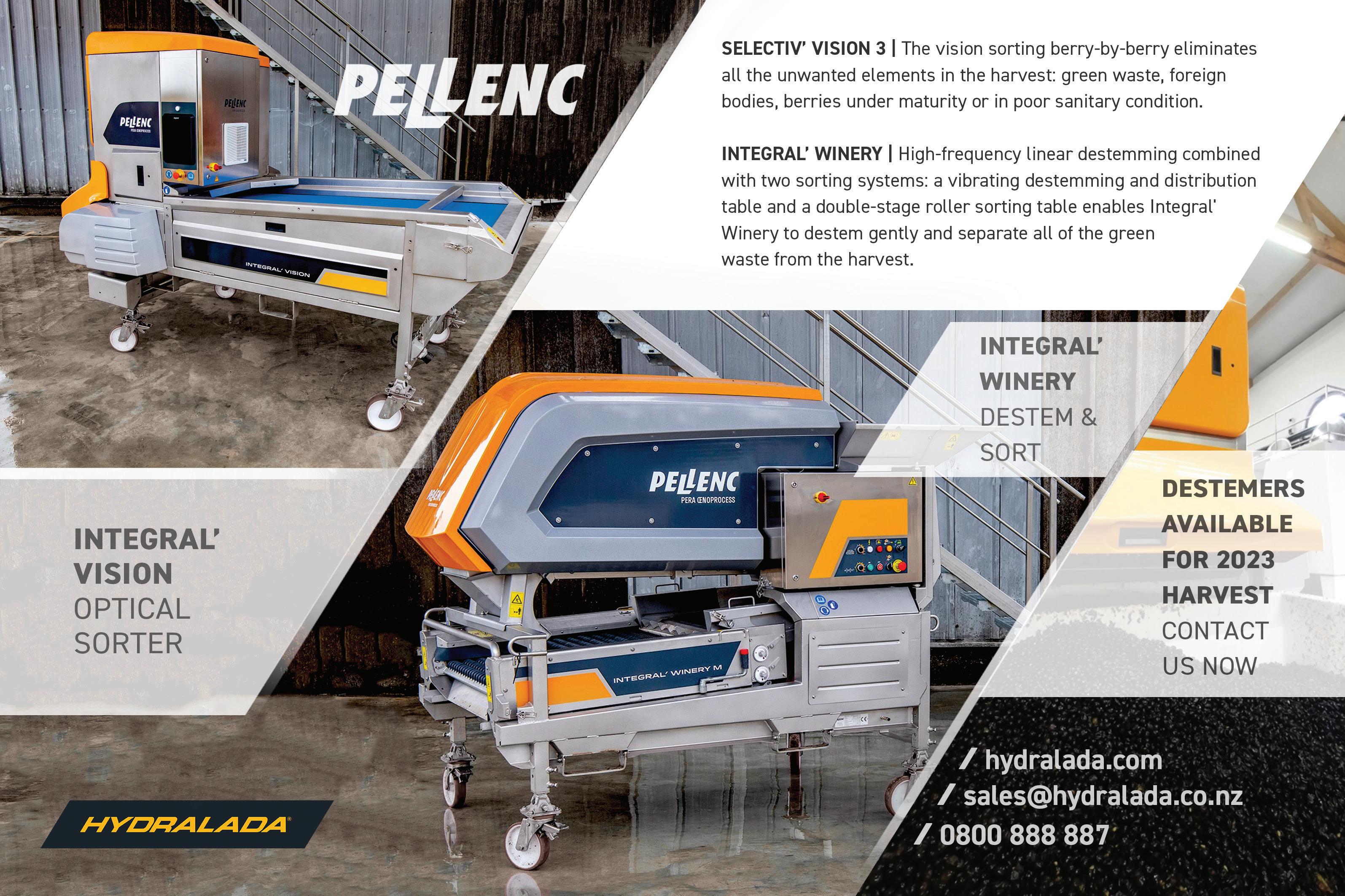
NZW has been working with the Ministry of Primary Industries (MPI) on the response, and sought and received funding to send a group of expert viticulturists, led by Dr David Jordan, to visit flood affected vineyards to discuss the next steps. NZW Biosecurity and Emergency Response Manager Sophie Badland and her colleague Kerrie Hopkins travelled to the North Island to assist in the recovery, and NZW helped fund extra hours for a Hawke’s Bay Winegrowers staff member.
Philip says the cyclone, coming in the
wake of the Covid-19 pandemic’s myriad challenges and years of severe labour shortages, “is incredibly challenging for people”. And the recovery will be long. NZW is working to provide estimates of the financial impact on the industry “which will then hopefully help inform the recovery package that the government develops”, Philip says. “We’ve had a response package to the immediate situation, the question now is, what the Government will do over the next one, two, three years, to support these producers.”
It’s still very early in the recovery, he adds. “What is really clear is that the wider wine community has offered a lot of help to the affected businesses, in terms of immediate response. But quite what the longer term is going to look like, we’re not sure at the moment.”
Hawke’s Bay Winegrowers Executive Officer Brent Linn says it’s been a “whole of community effort, that’s for sure”. Speaking during a 10-day stint of fine weather, he says harvest continues in Hawke’s Bay for those who are able, and a later vintage and spell of fine weather are helping mitigate the season for some. “It
was always going to be a difficult vintage and the viticulturists earned their money this year in terms of getting the canopy sorted out and open and given every change of success for vintage 2023.”
Brent also emphasises that Hawke’s Bay had three stellar vintages in tank, in bottle and in reserve. “Now we have a very difficult vintage, but we still have the legacy of those fantastic vintages coming through.”
NZW Chair Clive Jones says a network of support has “rallied” around affected winegrowers in Hawke’s Bay and Gisborne, with Hawke’s Bay Winegrowers, Gisborne Winegrowers, NZW and MPI working together to get assistance and information to those that need it. “They have all stood up and combined effort to make things happen,” he says, adding that relationships and crisis management efforts grown during the tumultuous pandemic period have stood the wine industry in good stead when it comes to front-footing assistance in the wake of Cyclone Gabrielle. “This is where those relationships pay off.”
CYCLONE GABRIELLE 22 I NEW ZEALAND WINEGROWER I APRIL/MAY 2023
Swift action to support RSE workers
As incredible scenes of seasonal workers stranded on rooftops emerged during the flooding in Hawke’s Bay in February, local businesses and community groups leapt into action, providing emergency shelter, clothing and food.
Vili Malaitai, founder and director of the Flaxmere-based Pacific health and wellbeing group PolyActive went to the nearest Civil Defence centre to see if he could help impacted Recognised Seasonal Employer (RSE) scheme workers. “There
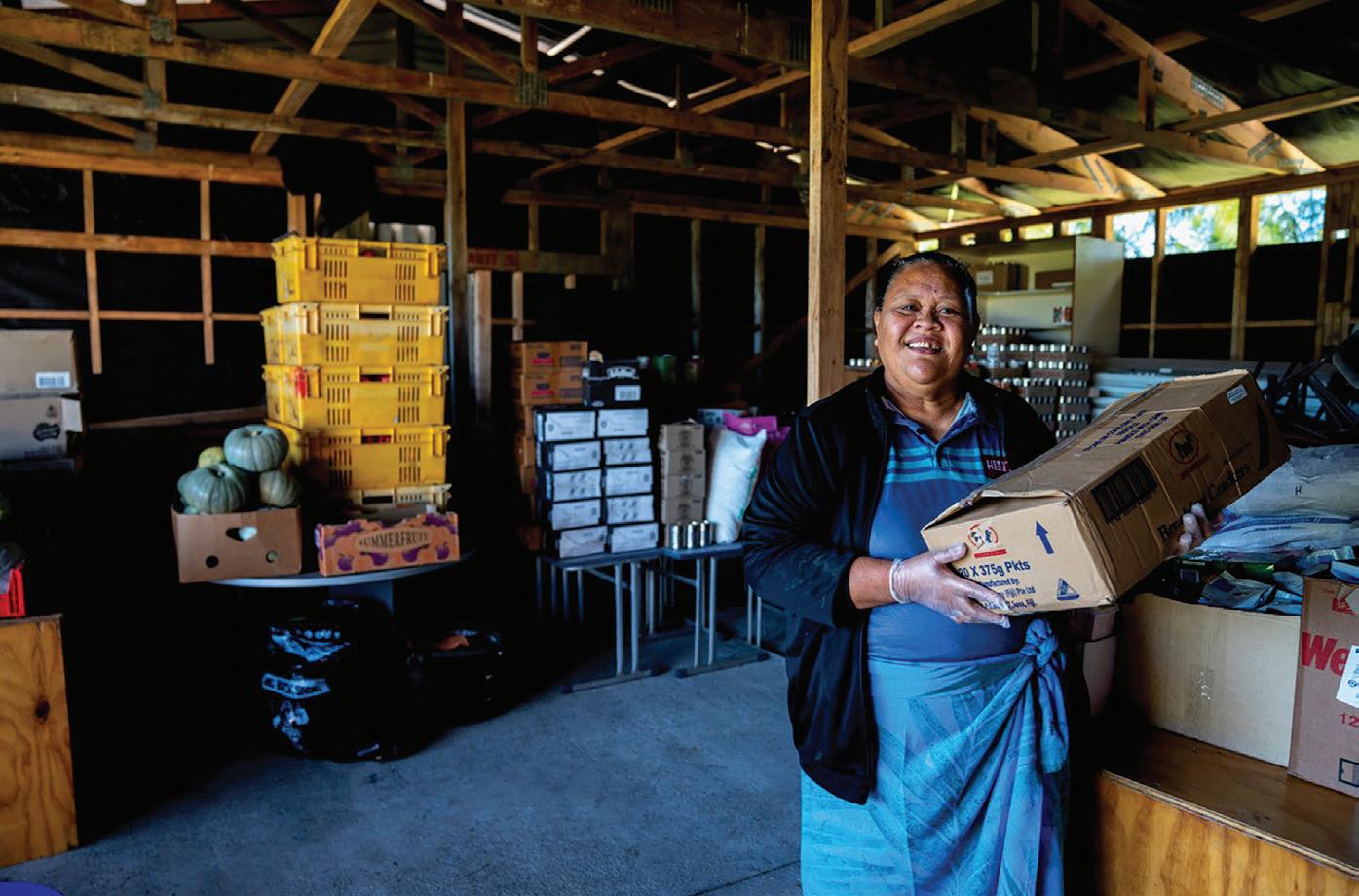
were lots of RSE boys there with nowhere to go, no one to call. They were far away from their homes and families and most of them had lost everything, so I knew straight away I had to do something to help,” Vili says.
immediately after Cyclone Gabrielle tore through the area. In the wake of the event, New Zealand Immigration (NZI) Refugee and Migrant Services General Manager Fiona Whiteridge said all the 690 RSE workers displaced by the flooding were accounted for and safe, and NZI was working with its Pacific partners to help ensure workers could continue to work in New Zealand if they wished to.
Croplands Sales and Service Agent for
the
As the community turned to clean up mode, Vili hopes the RSE workers won’t be forgotten. “What a lot of those boys went through was traumatic and shocking, the number one priority needs to be their mental health.”
Marlborough Region
Now building, servicing and selling Croplands Quantum Vineyard Sprayers
For more information or to order your next Quantum Vineyard Sprayer, contact the Malborough’s Spray Equipment Specialists at Agrivit.

He put up a Facebook post asking for mattresses, blankets, clothing and food and water for the displaced workers and was blown away by the response. “People came out of nowhere with donations, it was amazing,” he says. “I haven’t witnessed anything like this before… It made me realise there is still a lot of good in our community.”
Thornhill Horticultural Contracting general manager Nick Bibby says when they saw the extent of the flooding, they immediately cancelled the flights of 120 people due to fly in from Pacific nations to help with vineyard pruning over winter, and offered their beds to RSE workers impacted by the flooding.
Jeremy Watts | 021 446 225 | jeremy@agrivit.co.nz | 03 572 8787 | www.agrivit.co.nz
Local businesses have made donations of food, clothing, and other essential items, while local churches provided emergency accommodation to the displaced workers
The industry learned the value of being nimble and working together during the Covid-19 pandemic, Nick says. “Some strong relationships were created during Covid and as an industry we’re really good at pooling together, sharing beds and resources, to get the work done.”
CROPLANDS SALES AND SERVICE AGENT FOR THE MARLBOROUGH REGION
Selling, building and servicing Croplands Quantum Vineyard Sprayers. For more information or to order your next Quantum Vineyard Sprayer. Contact the crop protection specialists at Agrivit.
Jeremy Watts | 021 446 225 | jeremy@agrivit.co.nz 03 572 8787 | www.agrivit.co.nz
| 03
While NZI said RSE workers would continue to receive a minimum of 30 hours per week at $22.10 per hour and be able to work in regions unaffected by the cyclone using the RSE limited visa, Vili says many of them are struggling. “Some of the boys are not working much at the moment and they are worried about earning enough money to pay their rent and support their families back home.”
He is continuing to check on them and is organising food deliveries as required. “If we can help lighten their load so they don’t have to worry as much, that’s going to make a big difference.” And despite the devastation, community spirit is strong. “We’ve got a solid community here in Flaxmere, full of love. It’s a terrible situation, but it has brought out the best in us.”
CYCLONE GABRIELLE NEW ZEALAND WINEGROWER I APRIL/MAY 2023 I 23
“It’s a terrible situation, but it has brought out the best in us.”
Vili Malaitai
KAT PICKFORD
more information or to order your next Quantum Vineyard Sprayer, the Malborough’s Spray Equipment Specialists at Agrivit. building, servicing and selling Croplands Quantum Vineyard Sprayers Croplands Sales and Service Agent the Marlborough Region Watts | 021 446 225 | jeremy@agrivit.co.nz
572 8787
www.agrivit.co.nz
Kings House Church provided refuge to RSE workers. Photo Richard Brimer
|
SOLD LOCALLY BUILT LOCALLY SERVICED LOCALLY CLD6791_Croplands NZ agrivit ad_297x210mm.indd 1 24/11/22 1:02 pm
Unfathomable flooding at Petane
“It was an apocalyptic crazy scene,” says Philip Barber, of watching cars and containers float past his house during the fury of Cyclone Gabrielle. “It was like the world was ending.”
On the night of the flooding, Philip and his wife Sarah Johnson abandoned their battle against the water climbing their staircase and clambered onto the roof of their Esk Valley home with their two small children. “Then the four bay steel tractor shed ripped apart in front of us and all the tractors floated away,” says Philip. “I thought, ‘if we all end up in the water we are probably going to die’.”
In the weeks since, a communitychampioned cleanup has barely touched the surface of destruction to his home and Petane winery and vineyards, along with his brother Chris’s demolished house and Zeelandt Brewery. But a team of helpers have dug through the insidious silt in his winery and cellar and rescued 12,000 bottles of wine, now cleaned to Ministry for Primary Industries standards. He’s getting plenty of orders, and an auction house in
Auckland has offered to help him out, “so I think we will sell it all”.
And despite the unfathomable trauma and financial loss, Philip remains philosophical. His family is safe, including Chris, who was stranded in the ceiling cavity with his own family as the flooding destroyed his home, until three locals in a boat smashed their way through the ceiling to rescue them the next morning.
“They zoomed up to my deck and offered a lift and I said, ‘nah go and help my brother,” says Philip, who was 600 metres away from Chris’s house. “I thought they were dead for sure – they took ages finding them,” he adds, beyond grateful to that “amazing” trio. “After that, I could deal with the loss of the vineyard; when I knew everyone was safe.”
Looking back, Philip and Sarah believe that if they hadn’t witnessed the torrent with their own eyes – including flood waters funneling down their drive and shunting huge logs into their carport – the destruction would have been harder to accept.
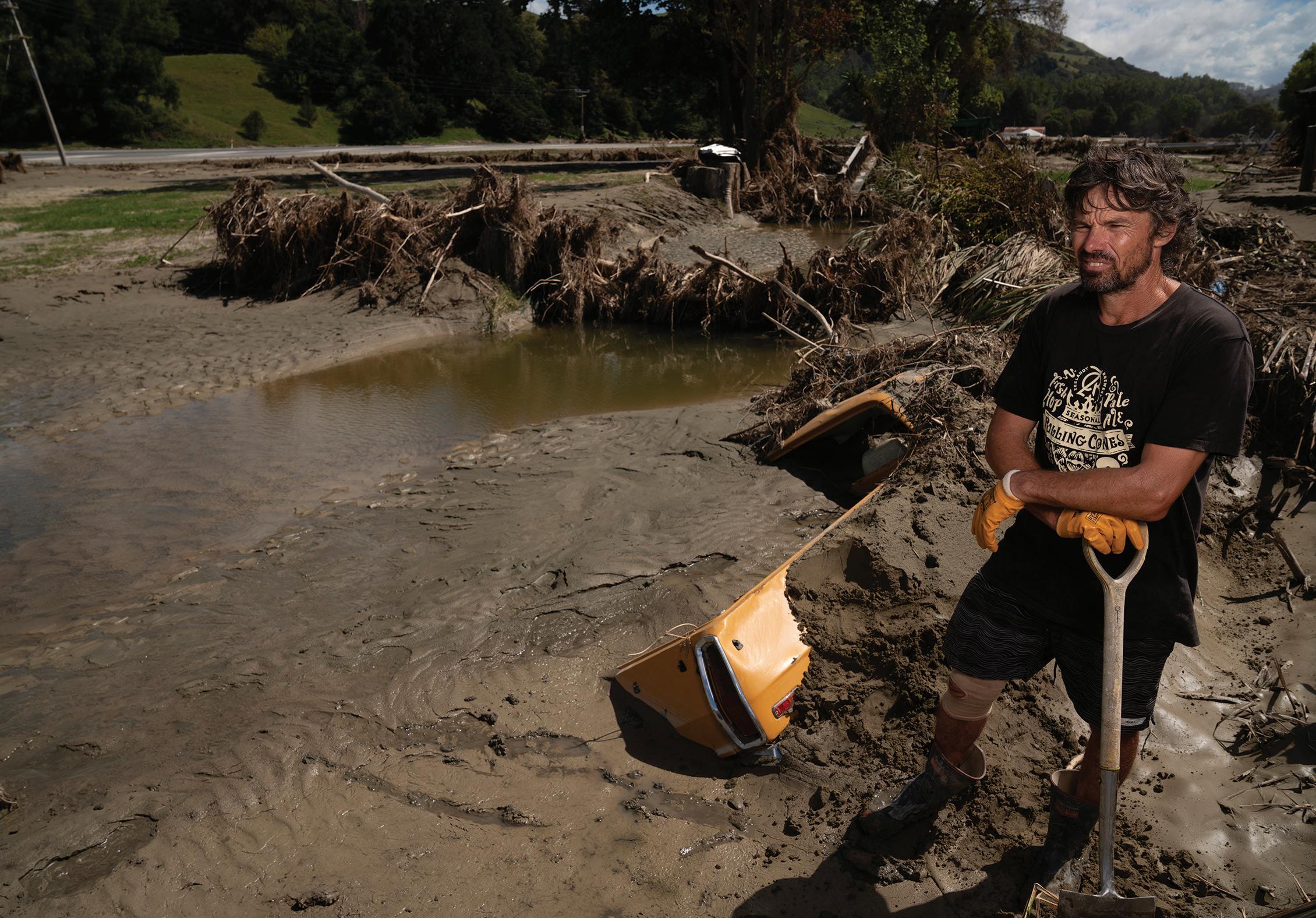
Now they are left with plenty of decisions, including whether the enormous job of removing the silt from the vineyard is viable. “If I could get the vineyard back it would be legendary. I have been there 16 years growing grapes,” says Philip, who cut his winegrowing teeth on his father’s Kumeu vineyard. “But I don’t know if I have the energy to save the vines.”
The Petane wine label will keep going, with Philip planning to buy fruit from great growers in the region, and reduce his range from 15 different wines in eight different varieties to a handful of options, with a couple of Pet Nats, a Chardonnay and maybe a Gamay. “Sarah says this is an opportunity to do something different.”
Meanwhile, they’re counting the many acts of community kindness they’ve seen, from “a guy called Jono” who gave them a lift after the flood, to the team that turned up to get the wines out and wash the bottles (see facing page). Then a team turned up with utes and shovels to help them clear the house out, he says. “People have been amazing.”
CYCLONE GABRIELLE 24 I NEW ZEALAND WINEGROWER I APRIL/MAY 2023
SOPHIE PREECE
Philip Barber with his brother’s yellow Holden. Photo Richard Brimer
Stellar cellar clean-up in wake of cyclone
OLIVER STYLES
Ian Quinn is wearing the patient, purselipped mask of someone being harried by myriad snippets of shouted advice as he manoeuvres Links Road’s tractor-forklift through the silt at Petane winery. One man driving, seven to tell him how to do it.
In his infinite patience, he continues to drive the tractor in a series of 90-degree arcs, loading donated apple bins and lent picking bins onto the trailers that back up through the sodden, silt-dug driveway parallel to the site, shared with Zeelandt Brewery and the Cone and Flower eatery.
Ian and his indefatigable wife Linda have driven 55km from their own vineyard to help. Others, including local PGG technical field representative Andrew McNeil and Hawke’s Bay Winegrowers’ head Brent Linn (wearing an uncharacteristic five o’clock shadow), are shuttling backwards and forwards across the region all day long.
The end of the building that faced the flow when the Esk River submerged the valley has piles of slash and sundry arborial detritus wedged up to the eaves. The silt on the side of the building facing the river is just over half a metre deep, or it could be a metre deep – it is impossible to tell if it has returned to antediluvian levels.
Around the back is a mound of silt the height of a person. On it are caved-in cardboard boxes of wine and umpteen clusters of bottes. Torn and sodden cardboard is deposited on the bottles to keep the sunlight off them.
The team has already cut into the cellar and it is draining from a rectangle cut near floor level. The silt is so high, access points
to the cellar have been cut into the walls near the roof.
Crouching through the serrated edges and exposed insulation of the building to enter, the first step is a wooden pallet resting on what must be a full pallet of wine. The sludge is over chest-deep in places. It takes the eyes a second or two to adjust. The sloshing echoes. The occasional grunt. Heavy breathing.
withstand all the water.
Then comes news that the trailers are on their way. There is a flurry of activity outside to get the bottles into the bins. The piles disappear like a time-lapse. Two human chains reduce the cases and bottles on the mound to nothing but dismembered boxes. It happens in a blink.
At lunch, a car shows up and, out of the boot a seemingly endless supply of sandwiches – crafted from a chopping board and piles of raw materials – are handed out to anyone who shows an interest. The next day, it’s Tim, from Aquiferra Olive Oil who cooks sausages and bacon from a gas barbeque in the tray of his ute. Hands are washed, food is eaten, water bottles are unscrewed by the tips of fingers.
It’s now, when coming together for kai, that one realises that help takes many forms.
In it, up to his waist, is Harry (name changed). I judged Harry harshly when I first saw him, with his bandy-legged, cigarette-smoking swagger; carrying a bluetooth speaker and wearing an impossibly impractical pair of slim black plimsols. But he’s right in the mire, relentlessly heaving out sodden cases of wine.
The following day, we’re joined by a new group, who attack the remaining bottles and silt with insouciance and bonhomie. At one point I look up to the main guy and notice he has a Mongrel Mob tattoo on his chest. At lunch, they reassure Harry that, if his anklet is one of the green ones, it should
I do, though, try to bear one thing in mind. It is the constant reminder that, in the event of loss of cabin pressure, when the masks fall, you should look after your own mask before helping another with theirs.
The reason, I think, we are relentlessly reminded of this as the airplane taxies to the runway, is because it’s against our very nature to do this in a crisis. I believe we naturally gravitate towards wanting to help each other as best we can. I saw nothing to diminish that thought in late February in Hawke’s Bay.
Oliver Styles is a journalist, winemaker and cofounder of Halcyon Wines in Hawke’s Bay
Swiss precision. Made to last. FELCO 211 LOPPERS

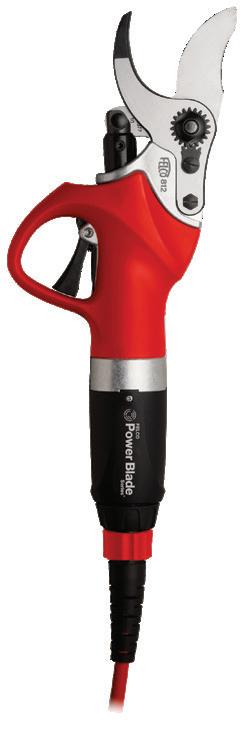


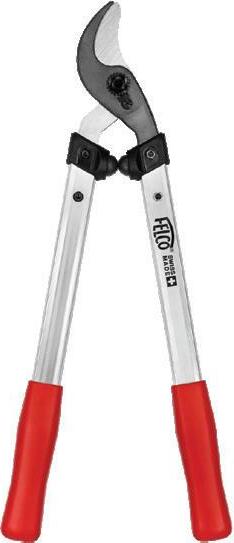
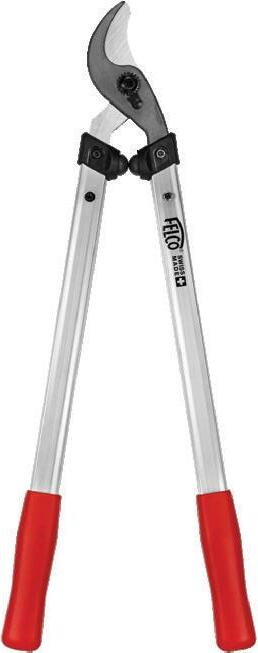
CYCLONE GABRIELLE NEW ZEALAND WINEGROWER
“At lunch, they reassure Harry that, if his anklet is one of the green ones, it should withstand all the water.”
Available at your local FELCO Stockist. Heiniger is the exclusive FELCO distributor and authorised service centre in NZ - contact us to find a FELCO dealer near you. (03) 349 8282 | heiniger.co.nz
Oliver Styles
The perfect balance of power and manoeuvrability. The FELCO 211 range feature lightweight aluminium handles for comfortable cutting and curved cutting heads to pull in and easily slice through branches. FELCO POWER TOOLS Power through even the biggest jobs with ease. Designed to act as an extension of your body, the new FELCO Power Blade series feature lightweight, ergonomic handles for comfortable pruning all day long. NEW
Problem solving through a harrowing harvest
Indevin was on the cusp of its Gisborne vintage when Cyclone Gabrielle stormed through, cutting communications, inundating vineyards, and blowing harvestas-usual out of the water.

Three days later, still in the dark about the impact on people, winery and growers, Chief Executive Duncan McFarlane and Director of Operations Richard Gardner were on the first available plane in, carrying meat, milk and cash, along with a Starlink Kit to get communications back in gear.
A similar care package was taken into Hawke’s Bay, while the company ascertained that everyone was accounted for, then assessed the damage. Neither the Hawke’s Bay winery nor the Gisborne one was hit by flooding, but with power and access cut in the former and water supply cut to the latter, they had to rally resources. In Gisborne that saw Indevin work with produce grower LeaderBrand, which gave it access to water through one of its sites, so Indevin could tanker it to the winery.
With the winery then “good to go”, they worked through their grape supply challenges, finding some blocks barely impacted and others hit very hard, with the brunt of the impact on inaccessible wet vineyards unable to carry a harvester. “So there have been some losses of crops, both at the grower level and company level,” Duncan says.
They have spent the period since the flooding working through a harvest plan, in order to take what they can from their grower base in order of priority, based on fruit condition, and subject to access. “For most properties we have been able to do
Duncan says they made the call on that block rapidly, and focussed on the harvest plan elsewhere, including with the small number of growers badly affected by the floods, and others with parts of their vineyard physically destroyed or fruit flooded, as well as those with access issues. Speaking on 9 March, half way through the Gisborne harvest, and quarter way through in Hawke’s Bay, they continue to work “collaboratively” with suppliers to “try and optimise the outcome for all concerned”, says Duncan.
that and there are a small number where we haven’t,” he says. “And there is still a lot of very good quality fruit, so it’s not all bad news,” he adds. “In these natural disasters the pain is never spread pro rata across everybody.”
In Hawke’s Bay, the company’s supply is less impacted, although still severe in some select cases, including a 100-hectare Indevin vineyard at Pakowhai “with full crop loss”. The flood waters rose close to the top of wind machines on that block, and left a layer of silt up to 40cm deep along the vines. The actual vineyard is still standing, but with machinery damage and silt removal there’s a massive job ahead.
He’s proud of the team’s ability to think outside the square in order to resolve so many different issues as well and as swiftly as they could. While there are some very bad outcomes, “overall it will turn out not being as bad as it could have been”, he says. And, with industrial satellite systems now installed at both wineries, along with backup power and the Starlinks stored for emergencies, he’s hopeful they’re better prepared for the future.
The priority in both regions remains wellbeing “and that includes our growers”, he adds, noting that some of the pain will surface down the track, when the adrenaline and problem-solving energies fade. Indevin has put in place a long-term plan with that in mind, “ensuring our people and partners are well and stay that way, or can get help if required”.
CYCLONE GABRIELLE 26 I NEW ZEALAND WINEGROWER I APRIL/MAY 2023
SOPHIE PREECE
In the wake of Cyclone Gabrielle. Photo Richard Brimer
“In these natural disasters the pain is never spread pro rata across everybody.”
Duncan McFarlane
Adding wellness to the menu
Kiwi mental health advocate Mike King has thrown his support behind an Eskdale restaurateur’s community health initiative. The wellness hub at Greg Miller’s Valley d’Vine restaurant will provide free mental health support to people in Hawke’s Bay struggling with the ongoing psychological effects of Cyclone Gabrielle. “Everyone’s been talking about the recovery and what needs to happen, but mental health is going to be the biggest need going forward,” Greg says. “It’s going to take years for people to recover from this… some people have lost everything.”
The restaurateur is a big supporter of mental health, having lost many friends to suicide, and experiencing his own dark days after losing a previous restaurant business. Valley d’Vine is situated at Linden Estate Winery, owned by Bruce Jans. Last year Greg organised a charity event at the winery, raising almost $200,000 for Mike King’s charity I Am Hope.
As news of the extent of the flooding in Hawke’s Bay spread, the comedian sent Greg a text message to check in, but with widespread phone, power and internet
outages, it was four days before he received the message. Meanwhile Greg, who lives next door to the restaurant, watched the flood waters “absolutely decimate” Linden Estate’s grounds, vineyards and architecturally designed cellar door and barrel hall, built three years ago.
of funds to counselors on the ground doing the mahi and helping people who need it.”
Everyone is in “the venting stage” at the moment, sharing their experiences and getting stuck into the cleanup, but Greg anticipates the real issues will start to crop up in a few months’ time, after all the disaster relief and support has dried up.
There are now two VPA units working in the Marlborough area. These are both mounted on the perfect base, a FENDT tractor.

The VPA (Vineyard Pilot Assist) scans the vineyard row ahead of the tractor and creates a 3D picture which then automatically adjusts Undervine Cultivation Equipment mounted in the centre of the tractor and well as the variable width mower mounted on the rear 3 point linkage.
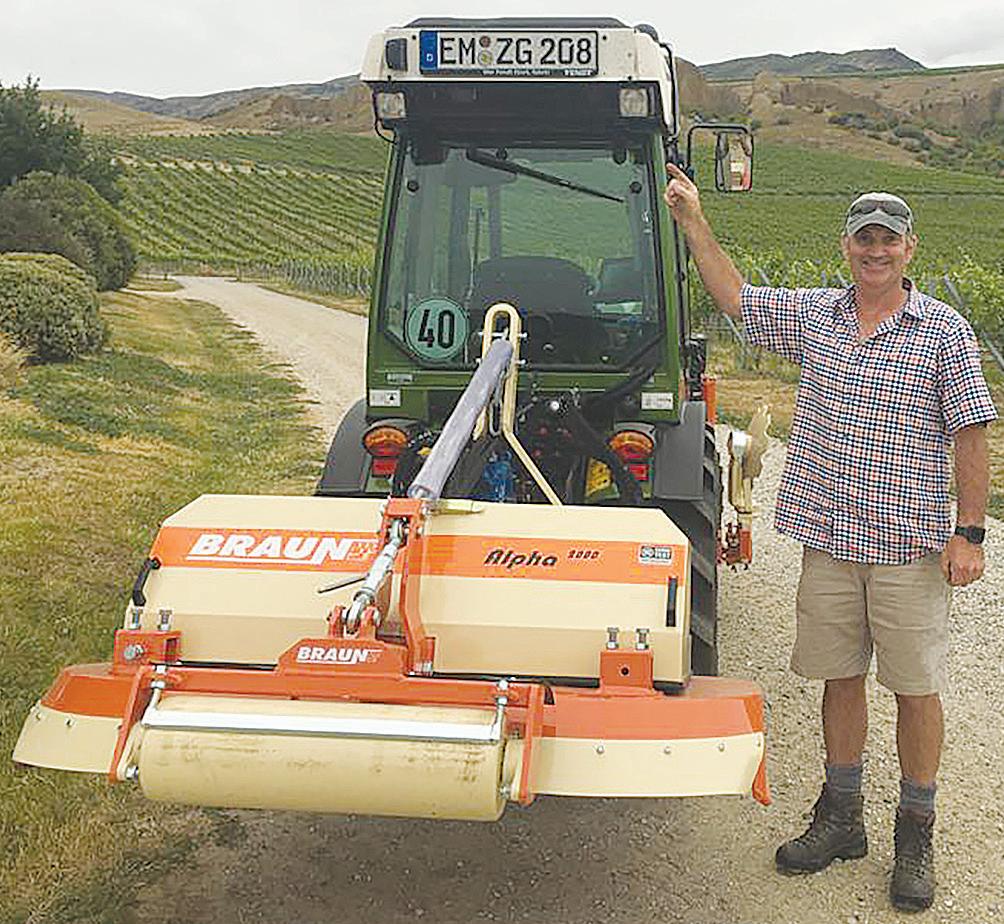
The unit can also steer the tractor automatically greatly reducing operator fatigue and giving perfect results.
Fortunately, his second-storey restaurant remained unscathed, but with his business comprising 60% functions and events, Greg knew it would be untenable for some time. Upon receiving Mike’s message, he knew the restaurant would make an ideal community hub. “So many venues have been wiped out, what we need are places for people to get together and trained counselors to help those that are struggling,” he says. “Mike had already started raising funds for Hawke’s Bay, and after we spoke on the phone and he heard the need, he pledged to donate 100%
Designed to enable you to achieve the ideal mowing width for your vineyard, the Braun Alpha 2000 variable width mowers are available in 7 size ranges, from 1.11.4m to the largest 1.9-2.5m model. The mowers are also designed to take a range of accessories including Stem Cleaning units for bud removal and tidying growth around the vines as well as Fingerweeders to work the soil under the vines. These units are the highest quality German built mower with a proven design.
Orders are being taken now for our next shipment due in September 2023. Previous orders sold out quickly.
For further information please contact our dealers: MARLBOROUGH, NORTH CANTERBURY, AUSTRALIA and rest of NZ, Byrnebuilt Engineering Ltd, Adrian Byrne 021 456 936

NELSON, TRS ,Craig Hovenden 021 895 592, or Daryl Hall 021 438 159
HASTINGS, TRS, Bennet Williams 021 438 215
MASTERTON, TFM, Cyril Butler 027 294 5010
CENTRAL OTAGO, JJs, Gavin Denston 027 435 4017.
“We had a busy day yesterday, with about five people popping in to have a chat, we’ve got counselors out today doing house calls. The next step is to organise some community barbecues with bouncy castles for the kids so we can get together, check in on each other and make sure people are okay.”
Other pop-up hubs with trained counselors are also underway and will continue as long as donations keep coming, Greg says. “The damage is so widespread; we want to make sure we get help to everyone that needs it.”
To make a donation head to: iamhope.org.nz.
For a list of wellness resources, go to: nzwine.com/en/adverse-events/ cyclone-gabrielle/health-andwellbeing-resources/
BRAUN ALPHA 2000 VARIABLE WIDTH MOWERS

CYCLONE GABRIELLE NEW ZEALAND WINEGROWER I APRIL/MAY 2023 I 27
“We want to make sure we get help to everyone that needs it.”
Greg Miller
KAT PICKFORD
VPA Semi
9 Pak Lim’s Road Renwick, Marlborough w: byrnebuiltengineering.co.nz e: byrnebuilt@xtra.co.nz Find out more: www.braun-maschinenbau.com Phone Adrian 021-456
Made in Germany NEXT SHIPMENT DUE IN SEPTEMBER
Autonomous Tractor
936
Shed load of silt
SOPHIE PREECE
Less than 12 weeks after Shed 530 Estate opened its doors in the Dartmoor Valley, Cyclone Gabrielle smashed them to pieces. “We opened our cellar door on the 21st of December and that ain’t there anymore,” says Winemaker Kel Dixon, after slash and flood waters barrelled through the stop bank, demolished the fully refurbished cellar door, and filled the winery with half a metre of silt.


Shed 530, owned by the Global Endeavours Group, has canned the 2023 harvest, and is instead looking forward to its recovery, with a new winemaking facility and cellar door on the cards. Kel is still bewildered by the destruction around him. “It’s not until you get up close and personal that you realise the absolute carnage and the power of nature. It still blows my mind every time I go out there.”
Launching Shed 530 was an exciting opportunity, with the historic venue renovated for the opening, making it a space “with great ambiance and presence” close to urban Napier and Taradale. But

now there’s a “clean slate” and the owners are thinking about what they want the operation to be in 50 years, “and how do we go about getting there?”
Global Endeavours also have a bottling company and distribution arm, so “we have the supporting structure to paint whatever picture we want on a blank canvas”, says Kel, deftly wielding a half glass full, “with the opportunity to fill it up to the brim”.
Mondays: 1, 8, 15, 22 May
Weekends: 27-28 May; 10-11 June


From 9am-4pm

CYCLONE GABRIELLE 28 I NEW ZEALAND WINEGROWER I APRIL/MAY 2023
Find out more and register here Marlborough Viticulture Soil Health Field Day Sustainable practices for repurposing your grapemarc. Condition your soils by applying compost. Advantages of using BioGro certified products.
Before and after at Shed 530 Kel Dixon
View our website for details Rated excellent on Trustpilot www.foodandwine.co.nz Viaduct, Auckland WSET® Level 2 Award in Wines Quarter Page Portrait - March 2023.indd 1 21/03/23 4:28 PM
Shellshocked vintners in salvage mode
JOELLE THOMSON

Nothing can prepare a winemaker for the news that they won’t be able to undertake vintage due to unforeseen circumstances. “Our Bayview winery has been severely damaged and is not operational for vintage,” says Radburnd Cellars Winemaker Kate Radburnd, who, at the time of writing in early March, only had access to the Hawke’s Bay winery by four-wheel drive. “We are all shellshocked at the moment; in cleaning and salvage mode, and our scenario is gradually improving. Our externally warehoused stock and packaging is fine thankfully, so orders can be fulfilled, just from a different site.”
The damage from Cyclone Gabrielle left about a metre of silt throughout the winery and grounds. Stock and packaging were damaged, power and water lost, and refrigeration plant and pumps submerged. “Our growers have managed the cyclone well,” Kate says. “It has been a challenging
growing season and their extensive experience in viticulture has been gold. But we will not be undertaking vintage 2023, as the winery is not fit for purpose.”

This had been an extremely difficult decision to make with respect to her
this. We have time to review our strategy and with no winemaking, our focus will become sales, sales and sales.”
The impact of the cyclone in Hawke’s Bay is severe on many levels, she says. “Thousands of people are displaced from their homes. Tourism and hospitality are adversely affected, which is so difficult again, post the challenging Covid times. There is currently no access to Hawke’s Bay from Taupo or Gisborne, so it is very challenging.”
growers and staff but Kate says her handson approach was a defining factor in her thinking. “We don’t believe engaging contract winemaking is authentic to our story so we need to find a new site to operate from and we are researching
Kate says that she and her team had been humbled by the offers of help from the community. Volunteers were regularly turning up at the winery offering both manpower and diggers to help with the clean-up. “Footage on the news shows the devastation in Hawke’s Bay, but every day we see the carnage and recovering that is happening, and its magnitude is astounding. We have years of rebuilding ahead.”
CYCLONE GABRIELLE NEW ZEALAND WINEGROWER I APRIL/MAY 2023 I 29
“We will not be undertaking vintage 2023 as the winery is not fit for purpose.”
Enhance your terroir and vintage with a custom blend of natural fertiliser and nutrients, pelletised for impeccable accuracy. To improve your finish, start by calling us on 0508 678 464 or your local rep.
Perfectly balance your soil
Kate Radburnd
by CP Lime
Daring deed with a big John Deere
When nature hit Hawke’s Bay with Cyclone Gabrielle, Steve Poulter hit back with John Deere.
Sacred Hills’ Dartmore vineyard was smashed in February’s deluge, its location at the top of the valley making it something of a welcome mat for forestry debris carried on the flood, leaving silt to the top of the posts.

Meanwhile, the Poulter family’s second Hawke’s Bay vineyard – Riflemans –remained remarkably unscathed on its swiftly draining soils, but was left
landlocked when the Dartmore and Rissington bridges fell to the flood.
Having plucked this pair of Sacred Hill vineyards from the hands of receivers in 2021, Steve wasn’t about to let the demise of one distract him from the potential of the other. So he assessed the devastated bridges, the roaring Tutaekuri River, and the wheel depth of his huge 360-horsepower tractor, and planned an historic harvest.
Steve’s son Ben – who manages the vineyards – travelled to Riflemans to assess the situation, while Steve called on neighbouring landowners for access, brought in a digger to cut tracks, and borrowed a picking bin from Wattie’s.
With a harvester and 8,000 litres of diesel already on the vineyard awaiting vintage, all that remained was to fill the tractor
tyres with water, add wheel weights, and drive through the metre-deep river and up through a forestry block to the vineyard. “It was sort of some crazy thinking in amongst it but it all came together,” Steve says, recalling the tension of the first crossing, well aware of how wrong it could go. “We weren’t going to give in, because we value that crop.”
Within two days (and 20 crossings) they had harvested and tractor-towed 160 tonnes of fruit back down the hill, across the river and over a neighbouring farm, much to the delight of Chief Winemaker Nick Picone, who is eagerly awaiting a handpick from the same block later in March. “I know some have been hit so hard, but we thankfully have the ability to carry on and hopefully make some good wines,” Nick says. “Let’s face it, we won’t forget this in a hurry.”
Steve says assessing the damage in Hawke’s Bay has been shocking, with some blocks “hard to look at”. But he’s very happy
with the quality of the fruit they’ve rescued, thanks to vigilant viticulture work and the free draining soils of the site.

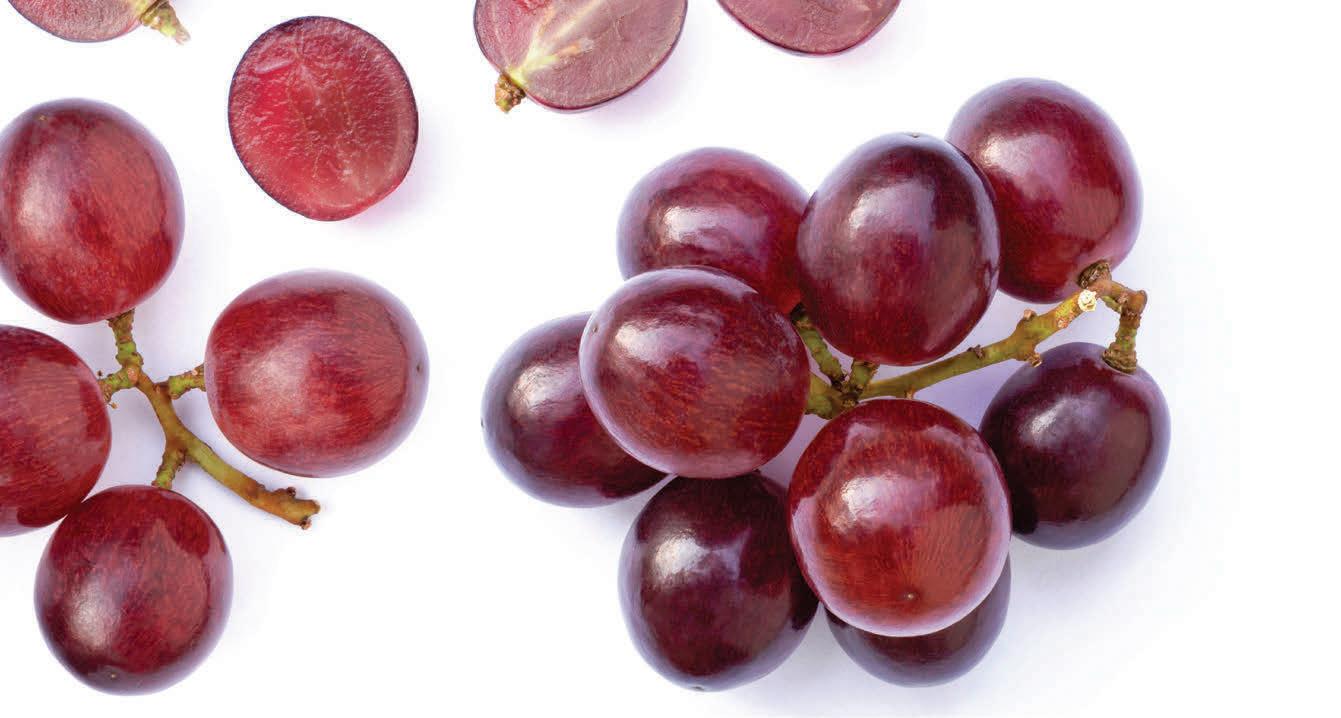
And he’s proud of what the Sacred Hill team achieved, from his son driving the harvester to the guys on the gondola and the digger. He’s also grateful to the landowners and the community that supported their endeavour. “No one wanted to let it go.”
Steve is taking the loss of the Dartmore vineyard in his stride, saying they’ll repair and recover the site when there’s time. “You are dealing with the weather. You’re not going to change it so you just have to live with it.”
And despite it all, he’s happy to have invested in the region’s wine industry. “I think we’re still learning, if I was honest, about how good our vineyards are,” he says. “We are going to go ahead and keep moving. We only want to grow more in Hawke’s Bay.”
CYCLONE GABRIELLE 30 I NEW ZEALAND WINEGROWER I APRIL/MAY 2023
Deere-ing deeds
“We weren’t going to give in because we value that crop.”
SCAN TO DOWNLOAD OUR PRODUCT CATALOGUE BIOMIN RANGE INCLUDES: CALCIUM • ZINC • IRON • BORON • MANGANESE • MAGNESIUM • BOOSTER V Isn’t it time you tried BIOMIN®? Reduce time and cost by applying LESS yet absorbing MORE. • BIOMIN® are Bioavailable, so fast acting • 100% soluble and 100% available • Glycine chelated and yeast assimilable • Systemic minerals, effective to all plant parts • Non phytotoxic, one application no problem. 09 372 9155 www.rd2.co.nz SOPHIE PREECE
Steve Poulter
Fat & Sassy goes to Marlborough
SOPHIE PREECE
It’s a steaming 27.5C in Hawke’s Bay as a retired King’s Counsel handpicks Chardonnay grapes in the wake of a cyclone. He’s one of a team of volunteers who heeded the call from winemaker and Chardonnay specialist Tony Bish, who’s lost 75% of his intended intake to the rain and floods this season. “We’ve written off about 150 tonnes out of a 200-tonne intake,” Tony says on 9 March, about to drive his trailer of freshly picked fruit back to the winery. “It’s been a hard season.”
But despite knowing he won’t meet export orders, which take up half his production, Tony is heartened by the response from his local community, with people of all ages joining the harvest, alongside a team of seasonal workers from Vanuatu.
The wine community has pitched in too, with Marlborough growers offering a lifeline for Tony’s Fat & Sassy consumer brand. On realising the extent of crop losses, Tony emailed his contacts in the region and revealed he was “desperate for Chardonnay”.

The response was good, both from those willing to part with their fruit, and others offering moral support. “It’s a case of Marlborough helping Hawke’s Bay,” he adds. “Basically the story will be Fat & Sassy goes to Marlborough. Thanks to our colleagues in Marlborough helping us through a cyclone, we’ll be able to keep continuity in
ECLAT COLLECTION
the domestic market.”
In the meantime, he’s excited about the quality of fruit still hanging on the vine, to be picked at the end of March for his premium labels “We are going to pick some really good fruit, so there’s a happy ending in sight. It’s going to deliver something delicious.”
GIVE PUNCH TO YOUR PUNT!
The Bordelaise Eclat range offers 6 different punts (Moon Rising, Star Shining, Fusion, Galaxy, Falling Star and Constellation) designed to reveal sparkle and radiance of the Saverglass Extra White flint and to show off the subtle and refined colours of white and rosé wines. Eclat Constellation is also available in BVS 30H60 screw finish.
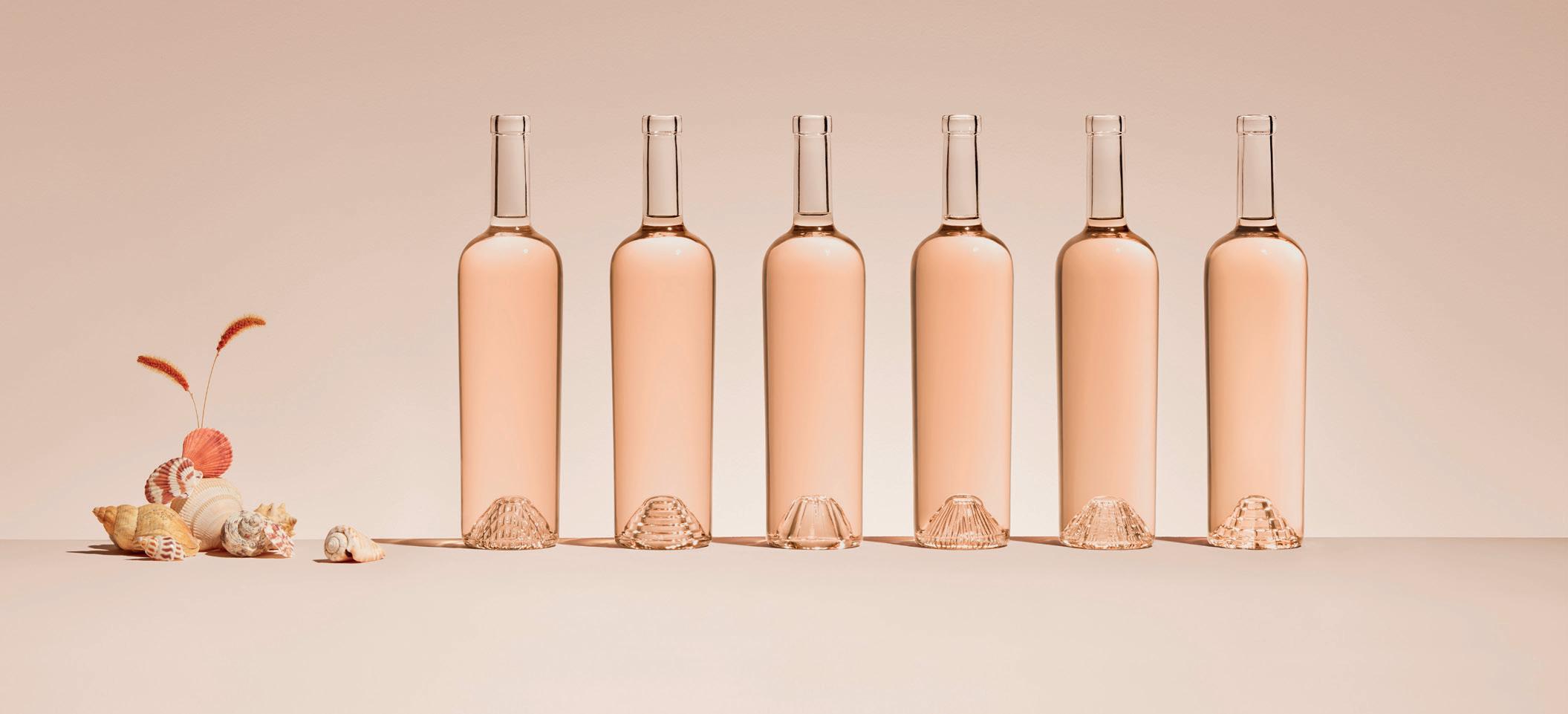
CYCLONE GABRIELLE NEW ZEALAND WINEGROWER I APRIL/MAY 2023 I 31
Saverglass (NZ) Limited | www.saverglass.com Haute Couture Glass | Tel +64 9 522 2990
Tony Bish
The Science

XXXXXXXXX 33 I PhD Précis Lucie Jiraska 34 I BRIght Ideas Nanotechnology 36 I Bragato Scholar Giorgia Hickey 37 I Science Snippet Sauvignon growth
PhD Précis
Lucie Jiraska clearly recalls her first taste of wine, unimpressed by her grandpa’s Cabernet Moravia. Now she’s working with Auckland University’s Biological Sciences department studying the effect of management on soil biodiversity in Hawke’s Bay and Marlborough vineyards.
What drew you to studying soil in New Zealand vineyards?
I was five when my grandpa, a hobby winemaker from the south of the Czech Republic, thought it was about time for me to have my first sip of wine. I vividly remember him being so proud of that batch. The cold of the cellar was seeping through my summer clothes, as he ceremonially withdraw the wine from one of the barrels and I was presented with a tiny glass containing less than a sip of dark ruby liquid. My grandma was strongly arguing against it, but my grandpa was adamant. I took a sip, my face twisted into a forced smile, and I thought, what is this adult madness and why is everyone pretending they like it? I did not want to hurt my grandpa’s feelings, so I pretended I liked the wine as well, but for a long time after, I kept wondering what the wine industry was all about.
It took me another 15 years, and moving to Prague for my bachelor’s and master’s degree in molecular biology and microbiology, to actually start understanding the science behind fermentation, microbes and soils. From there, it was just a small step, supported by a portion of luck, to join the Vineyard Ecosystems (VE) Programme. I was looking for a PhD project right when my current PhD supervisors Professor
Matthew Goddard and Dr Sarah Knight were advertising a position. I did not really have to think twice, and I am very happy that I made this decision to join it.
What has your research involved?
My research mostly focuses on the impact of agricultural management on soil microbial communities in vineyards from the Hawke’s Bay and Marlborough regions. I specifically researched how soil microbial communities differ between vineyards using synthetic herbicides and those with alternative undervine management, like cultivation or mowing. I also focused on direct impacts of synthetic and organic fungicides on soil microbes and changes to their functions in response to the application of fungicides.
As a microbial ecologist, I get to go out in the field to collect samples. Samples for the VE Programme were mostly collected by our colleagues at Plant & Food Research in Hawke’s Bay and Marlborough, but for other aligned projects I was collecting samples of soil, bark, fruit and/or leaves. While I enjoy being outdoors and sampling, a large part of my work is in the laboratory doing either DNA or RNA extractions from samples or using molecular techniques to understand what microbial communities live in our samples. Or I’m in front of a computer bioinformatically processing and statistically analysing the data. This is what I think the most exciting part is, as this is the step where the data begins to make sense and we can start answering our research questions.
Who has helped you in your work?
Besides my amazing supervisors, Mat
Goddard and Sarah Knight, I would like to acknowledge Beatrix Jones, Victoria Raw, Innocenter Amima, Jed Lennox, Paulina Giraldo-Perez and Soon Lee. And obviously all the winegrowers that allowed us to collect soils and access their sites for so many years!


What are some of the findings in your thesis?
The soil communities between vineyards are highly variable, more than between management regimes. While we found a small but significant effect of management regime on soil microbial composition, we are still in the process of understanding if these small differences do affect their function in the vineyard. Each vineyard seems to be a microbiome soil island where the history of the site is reflected in the soil community.
And while some of the synthetic fungicides we tested directly in the lab had no impact on the soil microbial community composition, we were able to find an impact on microbial function in these soils. Especially those that had a history of repeated exposure to pesticides. These findings suggest that soils do in fact have an “ecological memory”, so what you put in your soils matters, as it may influence how your vineyard responds in the future. However, at this stage we still have a very limited understanding on how it mechanistically works, as soils are extremely complex systems to study. Maybe one day we will be able to design management plans suited for each vineyard, not just generalised guidelines to follow.
NEW ZEALAND WINEGROWER I APRIL/MAY 2023 I 33 SCIENCE
On left, Lucie Jiraska. Photo by Sarah Knight
BRIght Ideas
Big things can come in small packages. And when it comes to nanotechnology, really, really big things could come from really, really small packages, including major advancements in winemaking and viticulture, says Bragato Research Institute (BRI) Research Programme Manager Dr Sachi Rana. In this Q&A we ask her what to expect.
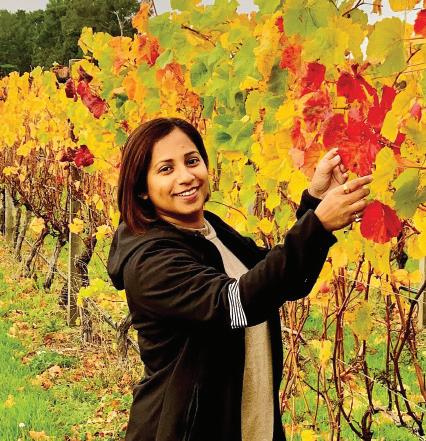
What is Nanotechnology?
Nanotechnology is a branch of engineering and science that deals with nanoparticles sized between 1-100 nanometres. One nanometre is one billionth of a meter. Nanoparticles include carbon-like fullerenes and nano-sized elements like silver, copper, and gold. For simplicity, gold in its solid form appears yellowish golden in colour, however, in its nano form (in suspension), it appears reddish in colour and has amazing properties that mean it is used in various applications. For example, in medical science, gold nanoparticles can be used in imaging, diagnostics, and therapeutics. You may have heard of quantum dots, and these are also nanoparticles.

What are some of the potential applications of nanotechnology in viticulture and winemaking?
During the past decade, research organisations around the world have been working to harness this technology to develop nano-based products and there is great potential for use in the wine industry. In viticulture, nanotechnology could be used to protect vines from pathogens and increase grape yield and quality. In the winemaking area, nanotechnology could be used to improve wine quality. It could help both the wine industry and the consumer by improving wine flavour and changing nutritional properties.
How is nanotechnology currently being used in the wine industry?
Although research is being undertaken in the winegrowing sectors around the world, nanotechnology is not widely deployed yet. Recently, work has been
carried out to develop polymers that can remove methoxypyrazines from Cabernet Sauvignon and haze-forming proteins from Sauvignon Blanc, Sémillon and Chardonnay wines using magnetic nanoparticles. The use of nanotechnology is currently existing in the market to remove Brettanomyces or
working with the University of Auckland on a research project to capture producers’ impressions of nanotechnology and to find possible applications of nanotechnology to promote sustainability in the winegrowing sector.
What is the industry’s appetite for enabling nanotech in wine?
I believe there needs to be a greater level of awareness and acceptance for enabling nanotechnology in wine. Through our researchers at the University of Auckland, we realise that even though there are some concerns, there is a considerable amount of interest in the New Zealand wine scene. And that is a great finding!
What are the potential downsides?
smoke taint from wines. I’m very excited by this potential as it will be very beneficial to our New Zealand wine industry. It is matter of time before nanotechnology is used in our industry.
How is BRI furthering that understanding?
At BRI, we understand the significance of technology and recognise that there is a potential in nanotechnology that could benefit our wine industry. We are
There are concerns over economic disruption and market acceptance.
Can you give some examples of nanotechnology being used in other areas?
Nanotechnology is broadly being used in various sectors globally like information technology, communications, biomedical science, energy technology, and pharmaceuticals, as well as in food technology.
34 I NEW ZEALAND WINEGROWER I APRIL/MAY 2023 THE SCIENCE
“I’m very excited by this potential as it will be very beneficial to our New Zealand wine industry.”
Dr Sachi Rana
Dr Sachi Rana
Innovation, Flexibility & Maximum Productivity

The 5D TTV specialist series perfectly combines performance, productivity and comfort, and can be used and configured individually, with a range of options to suit your exact needs.
• Market leading hydraulic systems with open centre and load sensing variants available providing a maximum flow of up to 131 L/min
• A flat operators platform allows easier access and unrivalled comfort no matter which variant you choose

• Three available widths: 5DV TTV from 1,077mm, 5DS TTV from 1,267mm and 5DF TTV from 1,441mm.
Flat operator platforms, integrated armrest controls and climate air conditioning creates the ultimate operator comfort

Power Farming NZ
Category 4 filtration systems. Electronically selectable, the air intake is diverted through the carbon filter while the operator can monitor filter charge and cabin pressurisation through the dash display.
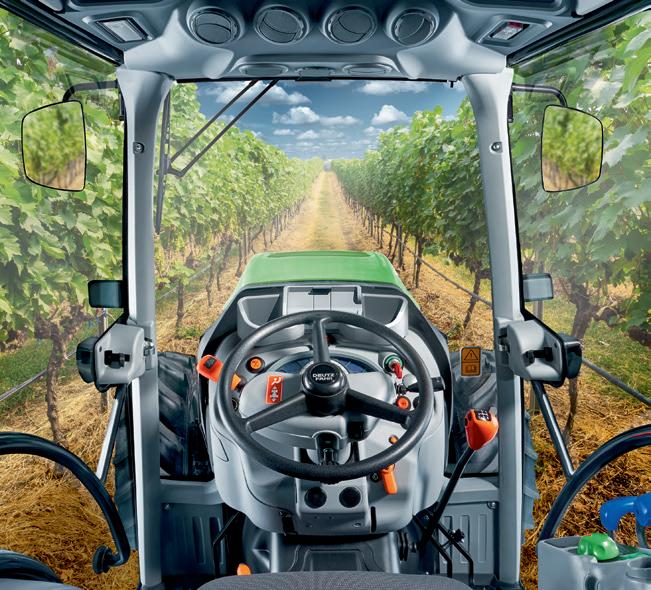
WHANGAREI 09 438 9163 PUKEKOHE 0800 570 571 TAURANGA 07 543 0021 WHAKATANE 0800 77 88 99 TE AWAMUTU 07 870 2411 MORRINSVILLE 07 889 5059 ROTORUA 07 349 6528 GISBORNE 06 868 8908 HAWERA 0800 480 309 HASTINGS 06 879 9998 FEILDING 06 323 8182 MASTERTON 06 370 8240 NELSON 03 544 5723 BLENHEIM 03 573 7089 GREYMOUTH 03 768 4370 CHRISTCHURCH 03 349 5975 ASHBURTON 03 307 7153 TIMARU 03 687 4127 DUNEDIN 03 489 3489 GORE 03 208 9395 INVERCARGILL 03 215 9039
Bragato Scholar


SOPHIE PREECE

In a series profiling the 2022 Bragato Trust Scholarship recipients, Giorgia Hickey reveals her passion for working the lab and travelling the globe.

A school visit to a gleaming winery lab hooked Giorgia Hickey on the idea of a career in wine.

She’d long had a love of chemistry, so when her Havelock North school undertook a field trip to Eastern Institute of Technology in year 12, she was absorbed by discussions of physics and chemistry in the winery, and an opportunity to run tests in the lab. “I loved stepping it up a bit and having better-than-high school labs and all that jazz,” says Giorgia, now in her third year studying viticulture and oenology at Lincoln University. “It was really cool.”
The love of chemistry has continued with her studies, and she relished her wine chemistry papers last year, and the chance to work in the lab each week. “That was awesome and I am looking forward to working in the lab this vintage as well.”
Her seven weeks of vintage work will be spent with Invivo and Co, “in the original Mr Bragato’s winery”, says Giorgia, referencing the historic 1902 Te Kauwhata winery that Invivo works from, once run by influential viticulturist Romeo Bragato. That’s a nice turn of events, because Giorgia was one of the recipients of the 2022 Bragato Trust scholarships, giving her financial assistance for her
wine studies.
In her second semester she’ll head to the United States on an exchange programme to Oregon State University, and when her studies end, she hopes to continue learning in far flung places. “I’d really like to go vintage hopping, jumping between northern and southern hemispheres for a few years,” says Giorgia, whose teenage passion for chemistry was only rivalled by the travel bug nurtured through childhood trips with her family.
Her ultimate goal is to return to New Zealand with skills earned through study and work, and to climb up to a winemaker role.

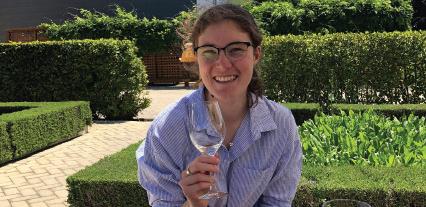
36 I NEW ZEALAND WINEGROWER I APRIL/MAY 2023 THE SCIENCE
Giorgia Hickey
Science Snippet

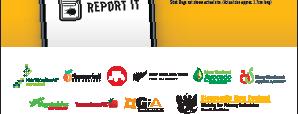
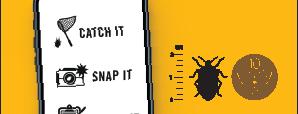


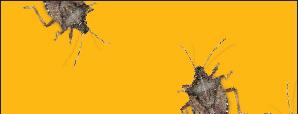
International changes in Sauvignon Blanc vineyard area
 DR MIKE TROUGHT
DR MIKE TROUGHT
Changes in world vineyard areas could reflect the international influence of Marlborough’s Sauvignon Blanc wine style. Professor Kym Anderson has surveyed the world wine industry and collated an impressive database of which varieties are grown where, with surveys in 2000, 2010 and 2016.

While there was a progressive decrease in world vineyard area from 4,887,629 hectares to 4,483,128ha between 2000 and 2016, the increase in Sauvignon Blanc vineyard was impressive, doubling in area from 65,190ha to 124,700ha between 2000 and 2016. Sauvignon Blanc was ranked the 10th most widely grown wine grape variety in the world in 2016, up from 18 in 2000. This increase in area was the fourth largest after Tempranillo (126,900ha), Cabernet Sauvignon (87,597ha) and Syrah (78,695ha). The decrease in world area largely reflects the removal of 184,177ha of Arién.
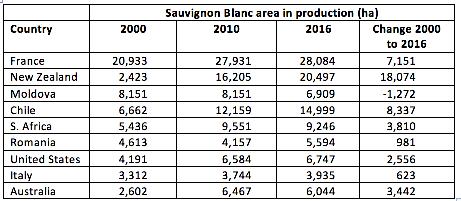
France is the country with the largest area of Sauvignon Blanc in production, increasing by 7,151ha between 2000 and 2016. A similar increase was observed in Chile, with smaller, but noticable increases in South Africa, the United States and Australia. However, all pale in comparison to New Zealand’s 18,000ha increase during the same period. The New Zealand Winegrowers Annual Report reveals a further 6,062ha increase in area to 26,559ha between 2016 and 2022.

THE SCIENCE NEW ZEALAND WINEGROWER I APRIL/MAY 2023 I 37
France is the country with the largest area of Sauvignon Blanc in production, increasing by 7,151ha between 2000 and 2016.

XXXXXXXXX 39 I The Huntress Jannine Rickards 40 I Nature’s work Claire Pinker 42 I Winemaker Boost Helen Morrison 44 I Living the Dream Anika Willner 46 I The Profile Matt Connell
The People
Wine Wahine
In celebration of International Women’s Day, we profile four leading women of New Zealand wine, and talk to companies focussed on increasing diversity and tackling the gender pay gap.
Jannine Rickards –Celebrating The Huntress
On the first day of Urlar’s 2023 harvest, Jannine Rickards reminds herself to check the blackberries ripening at the edge of the vineyard. A week earlier, stalking fallow deer in dense native bush, the winemaker noted cabbage trees flowering out of season and mushrooms flourishing in the humid conditions viticulturists fear this time of year. She let the deer move on, harvested a mushroom, and drew in the pungent scent of the wet forest floor, an aroma that flows into some Pinot Noir, especially from the Wairarapa, she says.
There’s a reason Jannine’s own tiny label – Huntress Wines – celebrates the connection of palate and place, because for her winemaking is tied up with her role in nature, her respect for hunting, her responsibility as kaitiakitanga, and the myriad sensory memories that influence her perception of wine – from the wet pungent forest floor to the guava trees on her parents’ farm, to a hint of rabbit guts in a wine’s aroma.
Jannine grew up in Franklin, on a high farm overlooking the Coromandel, where she could catch eel, gather watercress and net flounder and kahawai. Wine was not typically part of her life or culture, but her grandfather introduced her to iconic producers like Cloudy Bay and Te Mata once a year over Christmas lunches. “He would be proud I think now to see how I followed the path into winemaking,” she says on the cusp of her 20th vintage. “I am
still continually in awe of wine and still learning every season”.
Jannine was 19 and working in hospitality when wine started to fascinate her. A certificate in viticulture and winemaking led her to train her sensory palate, “banking” flavours, textures and aromas. “My family thought I was completely nuts because I started smelling everything – they thought I had lost the plot.”
Her wealth of senses expanded a decade later, when she learned to hunt with her partner Mick. “That started to open up my expanse of terms; my bank of sensations,” she says of the necessary intuition and focus when hunting. “You need to be very observant and open minded to situations that arise. I think these skills can be carried through to other aspects of life, including winemaking.”
Jannine’s first harvest was in Hawke’s Bay in 2003, followed by vintages in Wairarapa and California, before she joined Ata Rangi for cellardoor work and a harvest in 2006. She stayed for six years, soaking up the mentorship of Helen Masters and Clive Paton, while also doing vintages abroad and postgraduate studies. She then moved to France for six months, living in Burgundy and Beaujolais before returning to New Zealand in 2013 to work three years at Pegasus Bay, where she relished life amid a strong foraging community, learning more about the connection of palate and place.
In 2017 she returned to Wairarapa and soon joined Urlar, an organic and biodynamic operation abundant with “life and biodiversity”. She established Huntress the same year, tiptoeing into


a “tiny” endeavour that’s caught a great deal of attention. “Huntress is my creative outlet and passion project,” she says. “It is very small in production and I am grateful to have it on the side of my fulltime winemaking position at Urlar. Huntress is me in every essence: grounded, down to earth, driven, authentic and honest.”
Meanwhile Urlar has new owners and fresh investment, which has seen the vineyard area grow from 30 hectares in 2017 to 55ha this season, including leased blocks. “But we’re a pretty small team, so always on the tools,” she says, grateful for the work invested by her team this year –the most challenging she’s ever experienced. They’re woven into Wairarapa’s small wine community, which she cherishes as a family of sorts – “tight knit and supportive”.
Jannine’s philosophies are tied up with tikanga, as she grows her understanding of her place as tangata whenua. “I did not grow up ‘feeling’ Māori or connected in the way I do now,” she says, in the early stages of a journey connecting to her whakapapa and learning te reo Māori. “I can have moments when I question my authenticity. However I think this is human nature and due to the disconnect due to many generations of suppression and denial in my whanau, but also as a nation,” she says.
“I wasn’t brought up with any religion or faith, but can certainly say I strongly feel connected to whenua, moana and ngahere in a very deep and spiritual way that grounds me and make me feel like I stand in true self and place.”
NEW ZEALAND WINEGROWER I APRIL/MAY 2023 I 39 THE PEOPLE
Photo on left, Jannine Rickards.
Photo Claire Edwards
SOPHIE PREECE
Ask Hawke’s Bay viticulturist Claire Pinker what the most challenging aspect of her job is and one word springs to mind – climate. And not just because of the incredibly challenging weather this year. “In a good vintage it’s easy to think you have your job sorted and then when the climate challenges you, you can call on all your resources and still come off second best,” she says. “It’s just the nature of working alongside nature.”
The Pernod Ricard viticulturist finished a Bachelor of Science at the University of Otago and returned to Hawke’s Bay to study a Bachelor of Wine Science at the Eastern Institute of Technology in 2003. It was an easy career choice because she always knew she preferred working outdoors. “Working with the seasons always provides challenge and variety, some particular vintages more than others. The biggest crossover with production is the lead in to vintage. It’s great to collaborate with the winery at this time by getting across all of the vineyard blocks to sample and taste daily, working with winemakers to give the grapes their best shot at glory.”
Claire says her experience of the wine industry is that the majority of positions are held by men. “There are some fantastic
women in the industry, but it’s definitely far more likely that anything I do on a daily basis or as a part of a committee or wider industry event will be heavily male dominated.” Fortunately, she feels she has been treated well. “I have had to deal with very little discrimination and maybe in years to come there will be a female majority. Anything is possible.”
The practical aspect of working with wine was a big drawcard to Claire. “I’m practically orientated and have always loved food and wine, so I was excited to find a career that combined these aspects together. I’ve been fortunate to have the opportunity to work in some of the most beautiful vineyards and wineries in Hawke’s Bay as well as North Otago and California. When we get the chance to travel, we’ll always make a point of hunting down and finding great wine producers wherever we are.”
Pernod Ricard - setting a benchmark
Pernod Ricard Winemakers achieved pay equity in 2022, while the wider Pernod Ricard group was named a Forbes World’s Best Employer and Forbes Top Female-Friendly Company for the second year running. In 2021, it became the first wine company to be recognised as an employer of choice for gender equality by the Australian Government’s Workplace Gender Equality Agency, achieving recertification in February

this year.
“Recognition like this reinforces our diverse and inclusive culture, where everyone is invited to our convivial world,” says Christian Campanella, Pernod Ricard Winemakers’ HR, Communications, Sustainability and Responsibility Director.
With a global goal of having equal senior management roles by 2030, New Zealand operations are well ahead,
Collaborating with people across the industry is also close to her heart and has become a strong focus in Hawke’s Bay since Cyclone Gabrielle. “Our focus shifted to people, their families and the community first and foremost after the cyclone. As we move to the recovery phase, we are turning our focus to harvest, but conditions remain challenging with continued wet weather, which is hampering recovery efforts and harvest,” she says.
“This is a real team effort. Whilst there is no doubt that it is a challenging environment, we have come together as one team and are doing our best to make the most of what we have got to work with. As in any season, we’re prioritising the harvest of fragile blocks whilst keeping a close eye on the blocks that have the potential to push a little harder and achieve our desired style.”
with women making up 47% of the company’s senior management and 49% of the overall business, says Christian. Meanwhile, pay equity remains under the spotlight, with an annual external review.
“As a part of our approach to diversity and inclusion, we are committed to providing a fair and equitable workplace culture where all genders have access to the same resources, opportunities and rewards”.
THE PEOPLE 40 I NEW ZEALAND WINEGROWER I APRIL/MAY 2023
Claire Pinker – working alongside nature
JOELLE THOMSON
Claire Pinker
“Working with the seasons always provides challenge and variety, some particular vintages more than others.”
Claire Pinker
Gender pay gap report a ‘call to action’
SOPHIE PREECE
New Zealand Women in Wine has taken the lead when it comes to industry-wide reporting on gender pay gaps in New Zealand, says member Julie Bassett, Vice President Human Resources at Constellation Brands. “Feedback from Strategic Pay is that we are the first industry to request reporting of this type from them, so we have a real opportunity to continue to lead the way,” she says. “Let’s commit to a bold approach and aim to be an industry leader on this topic, with visibility, clear goals and meaningful actions to get us there.”
Strategic Pay analysed statistics from 2017 to 2021 from 39 companies and 12 roles associated with growing and producing wine, as well those in cellar doors. In 2021 the overall median average gap for base salary for all roles in the wine industry was 7.8%, compared to a national average of 9.1%. Nicky Grandorge, Women in Wine NZ’s National Coordinator, says the group was pleased to be below the national average “but it’s still not good enough, and we have to close the gap.”
The report shows that in some roles, including assistant vineyard managers and cellar door managers, equal pay has almost been achieved. However, while more than 65% of laboratory managers were women in 2021, there was a pay gap of 7% in favour of men. That’s despite several years of equal pay. When it comes to lab assistants, there is an 11% pay gap, despite
women making up 80% of these roles in 2021.
The overall number of vineyard managers decreased in 2021, while the proportion of women in the role increased from 2% to 11% between 2017 and 2021. But the pay gap increased in that time from 1% to 5%. When it comes to vineyard workers, there was a small increase of women, from 25% in 2017 to 28% in 2021. “However, the pay gap has grown from 4% in favour of men, to 7% in that time.”
When it comes to chief winemakers, senior positions are dominated by men, with 35 men and four women in the 2021 data. As reported numbers were small, the roles of chief winemakers and winemakers were combined, with an
Lion’s share – ensuring a fair deal
It’s not enough for individuals or groups of people to be given the same resources or opportunities, says Lion’s Inclusion and Diversity Leader Sarah Abbott. “For genuine change to happen, we need to recognise that each person has different circumstances, and we need to allocate resources and opportunities to ensure we reach equal outcomes.”
Lion, which includes Wither Hills Winery in Marlborough, has a suite of policies and initiatives to ensure that happens, including inclusive hiring practices that “counteract the risk of unconscious bias”, a zero-tolerance commitment to gender-based harassment, discrimination and bullying, and a Team
Gender Target of both men and women making up a minimum of 40% in all teams that are greater than five. Women make up 38% of the company’s leadership positions and inclusion ratings through annual people surveys have never been higher, Sarah says. “We have seen that a more diverse team results in a better outcome than when we have a team where everyone thinks, feels and looks the same. We will continue to strive for more diverse teams as we continue to innovate and grow.”
There’s also a commitment to ensuring fairness in pay for “like for like” roles, via annual competitive pay reviews, she says. “This is a commitment that we made
increase from 18% women in 2017 to 26% in 2021. The pay gap has decreased from 37% to 23% in that time, says the report. Julie notes that it’s hard to examine those numbers, because having chief winemaker and winemakers together can imbalance the data.

As more women come into the industry and move into senior roles, the gap should “naturally close”, Nicky says. “But obviously we would like to see it happen quicker”. The gender pay gap differential requires commitment to change, says Chair Kate Radburnd in the report. “We need to take action now, set goals and commit to achieving equal pay for everyone in our industry.”
To read the report, www.nzwine.com/ members/gender-pay-gap-report
in 2017 when we undertook our first gender pay gap analysis. At that time, we became one of the first companies to ban questions to job candidates about their salary history, in an effort to tackle the gender pay gap.”
Six years on, the company has continued to maintain less than 1% difference in pay competitiveness in like for like roles, Sarah says. “We continue to monitor this annually and make corrective action when necessary.” The work is about being fair, and “doing the right thing for the long term,” she adds. “We encourage other organisations to undertake your own gender pay gap analysis. The results might surprise you.”
NEW ZEALAND WINEGROWER I APRIL/MAY 2023 I 41 THE PEOPLE
Kate Radburnd
Helen Morrison –broadening horizons with Booster
Helen Morrison’s wine epiphany arrived while she was backpacking in Europe around the end of the millennium. It wasn’t so much a lightbulb moment as a beginning of seeing wine in a whole different light –as part of daily culture, a convivial way of bringing friends and family together, and something to be treated respectfully.
More than 20 years on, Helen has just joined Booster Wine Group as Chief Winemaker, after nine years as Senior Winemaker at Villa Maria in Marlborough. Booster Wine is part of a KiwiSaver fund and encompasses several brands, including Awatere River, Sileni, Waimea, Gravity Winery and Bannock Brae. For Helen, the new role is an opportunity to broaden her experience, with Booster’s winemaking interests spread across New Zealand. She’s also looking forward to having some strategic influence across the different brands under the group’s umbrella.
Helen grew up in Nelson, and had a loose association with the Seifried family, along with an awareness of Neudorf Vineyards. This offered a distant glimpse of the wine industry, but the concept of winemaking as a career path was yet to be discovered. “I was never that fond of school,” she recalls. “I just wanted to get out into the world.”
Backpacking trips were shoehorned around working on the trading floor at Credit Suisse, and – although novel for a twenty-something year old from Nelson on her OE – Helen made the observation that work didn’t seem to be bringing much joy to those around her at the bank.
Once her imagination had been captured
by the possibilities of wine, she joined a wine tasting group, and a year working in Ireland came with regular attendance at a wine club. She singles out a tasting of M Chapoutier, at which the winemaker explained how his role was to observe and work with nature and respect the terroir – but also to be bold and not afraid to experiment. The urge to set out on her own winemaking journey was crystallising, and Helen returned to New Zealand to gain her Bachelor of Viticulture and Oenology at Lincoln University.
Her first job after qualifying was at Forrest Estate in Marlborough, which provided the invaluable experience of being hands-on wherever she was needed across
For Sale – Stonecroft Winery and Vineyard


the business. Then came the move to the much larger Indevin, with its focus on client winemaking; managing the complexities of differing winemaking styles and client requirements provided a fast-track learning experience. The move to Villa Maria in 2014 merged both of those experiences –Helen was back in a family-owned business, with all the passion and quality expectations that that brings, with the benefit of largescale efficiencies.
Helen talks about the maturing of the industry over this period, mentioning the increased tailoring of styles for different markets, along with sheer growth in scale, and notes that the industry has taken the time to understand site and
• Certified organic, boutique Vineyard and Winery
• Cellar Door and separate 4-bedroom home
• Winery, current production 30t with room to increase
• Additional 3.5ha vineyard lease

• Freehold going concern includes land, building and business

bayleys.co.nz/2852932
4.077ha (more or less)
 By Negotiation View
By Negotiation View
by appointment
Tim Wynne-Lewis
027 488 9719
tim.wynne-lewis@bayleys.co.nz
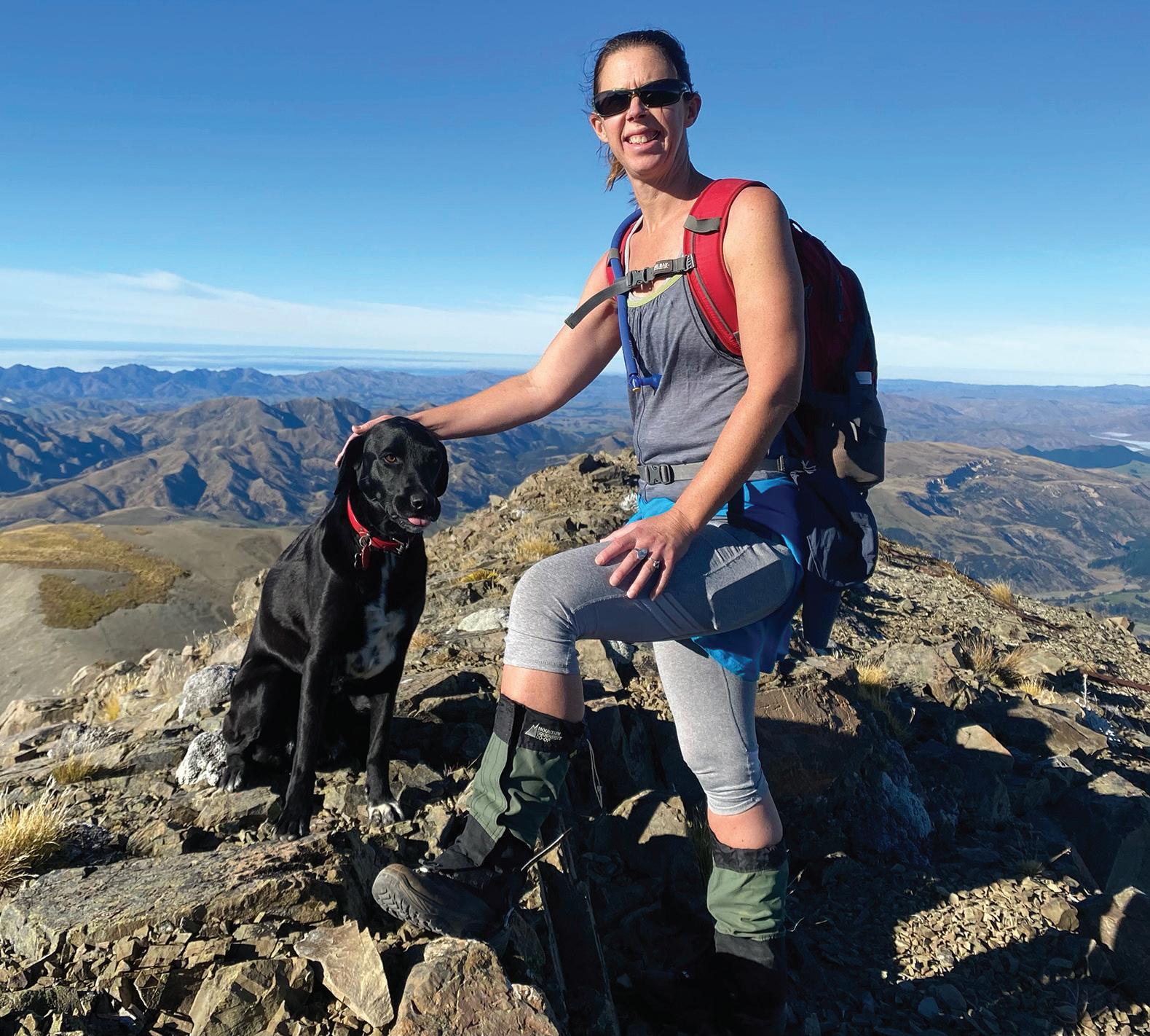
THE PEOPLE 42 I NEW ZEALAND WINEGROWER I APRIL/MAY 2023
Helen Morrison and Dita
Stonecroft Wines Gimblett Gravels, Hawke’s Bay
EASTERN REALTY LTD, BAYLEYS, LICENSED UNDER THE REA ACT 2008 Boundary lines areindicative only
LORRAINE CARRYER
soil complexities and optimal crop levels across the different varietals. She credits the increase in research and science-based practices – plus the collective sharing of this research – as transformative, and values the collegiality within the industry, believing this is a key contributor to its maturing process. “You can ring practically anyone and ask them about their practices... or arrange a wine swap to compare styles,” she says.
Helen feels particularly proud of the way the industry came together to get through the pandemic, remembering vividly the announcement of lockdown as the 2020 vintage was poised to begin. “I just thought – I don’t see how we can do this,” she says. Then overnight there appeared a village of campervans in the field next to the Villa Maria winery (nicknamed Coachella by the winery workers) to house the splitshift teams, and it became one of the more memorable vintages.
One of the things that Covid taught us is the need to pay more attention to the team’s wellbeing, she believes. “Vintage during lockdown threw a whole different light on how people cope in the workplace… are people doing okay, are they going to tell us
if not, and what do they need from us as their team leaders?” A lasting takeaway for Helen from the Coachella days is that it was often small things that could make a real difference to everyone’s sense of wellbeing.
Helen welcomes Women in Wine NZ’s recently released industry pay gap report (see page 41) because publishing the

that responded, as she suspects the data may be skewed by a relatively high number of women owner-operators within the industry. “Why not give the industry full disclosure?”
Helen believes women are not, in general, as confident at backing themselves and their worth, which often translates to being paid less than their male colleagues. She cites the number of over-subscribed pay negotiation workshops that were held as part of the Women in Wine NZ education series in Marlborough.
survey gets the subject talked about. Her overall sense is that the wine industry probably reflects most others in gender distribution across the hierarchy. Although the report suggests the wine industry may be performing marginally better than others (with a pay gap of 7.8% rather than a general one of 9.1%), Helen would be keen for it to disclose the size of wineries
Networking, asking questions and setting up connections are key skills for younger women setting out in the industry, and Helen remains grateful to Belinda Jackson for mentoring her into the wine competition world. She still judges a few times a year and considers it invaluable for building self-confidence and networks.
Winemaking as a career has lots to offer women because they get to work with a great product, the job is far from monotonous, and it provides a chance to build global connections. “My partner thinks I just sit around drinking wine all day… but there is a bit more to it,” she laughs.
FREE | New Zealand Certificate in Winegrowing Enrol Now Start April
This fully online qualification is ideal for those starting out in the wine industry or experienced staff who want to know the technical reasons behind vineyard management decisions. The winegrowing industry will benefit by having knowledgeable staff who are able to contribute to more efficient and effective operations. You will benefit by having a qualification within a training pathway that recognises progression through the industry, as well as increased skills and knowledge acquisition to enable improved job performance.
Bridget Stange | Viticulture & Wine Science Concurrent Degree Graduate
NEW ZEALAND WINEGROWER I APRIL/MAY 2023 I 43 THE PEOPLE
“My partner thinks I just sit around drinking wine all day… but there is a bit more to it.”
Helen Morrison
wine.eit.ac.nz
Anika Willner –growing sustainability and legacy
SOPHIE PREECE
Anika Willner has found an extraordinary home on a small vineyard beneath the Kawarau mountains, with an outlook to the Pisa Range. “I have worked here for five years and live on site, and still every day when I wake up, I think it’s incredibly beautiful,” says the American winemaker of her “dynamic” surroundings.
And Coat Pit Vineyard – unique, boutique and clearly beloved – has found an extraordinary caretaker in Anika. “I feel like I am part of Coal Pit as much as Coal Pit is part of the land,” she says from the Gibbston block, 480 metres above sea level.
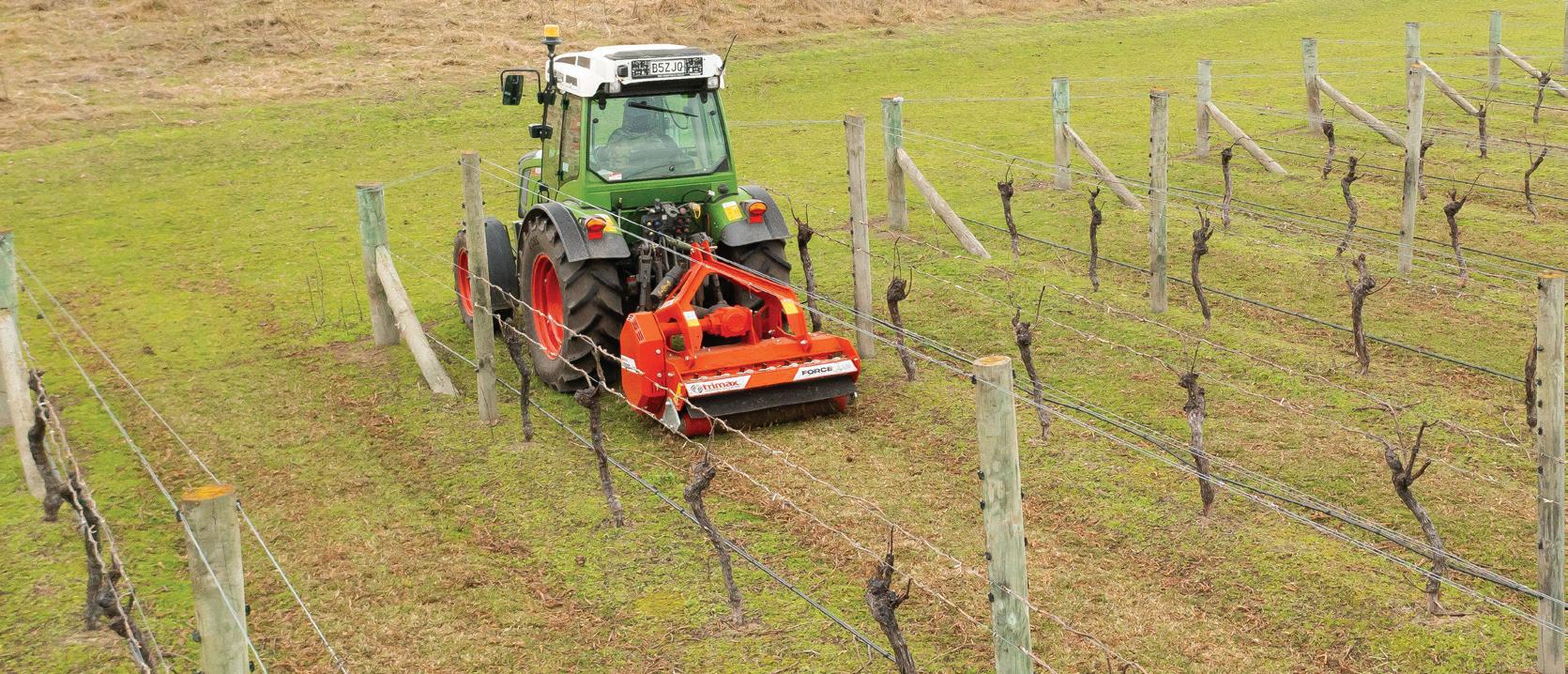
Anika was 27 years old, fresh out of Lincoln University postgraduate wine and viticulture studies, when Coal Pit Wines owner Rosie Dunphy offered her a job. Rosie had bought the established vineyard in 2001 while living in Ireland, leveraging her horticulture studies to choose a parcel of land in the foothills of The Remarkables (Kawarau) to grow a family legacy. In 2007 she built an 80-tonne winery on site, going on to name the award winning Tiwha Pinot Noir after her father, while The Heritage collection , including The Harry and The Leo, carry the names of her grandchildren.
Those grandchildren – and their future grandchildren – are front of mind for Anika as she works with the vines and wines of Coal Pit, along with an emerging block of natives. She is determined to be a true steward of the 12-hectare property and its 7ha of vines, named for historic mining at Coal Pit Saddle.

Already a “massive proponent” of organics and regenerative farming, Anika
had barely arrived before lobbying for the adoption of both. It was a move that made perfect sense to her, both for the environment and for the wines, given the extremely nutrient rich soils on what was an old rams’ paddock long before it was vineyard.
The vines needed increased competition to ensure their balance, so Anika “bumped up the biodiversity”, planting more than 20 mid row edible cover crops, including kale, spinach, turnips, radishes, legumes and flowers, along with the sunflowers she adores. Her initial plan was to provide a perpetual organic garden for the vineyard crew to harvest from over the summer and autumn, but with nets going on and vintage
progressing, the second harvest proved impractical. By the time the mid row crop was available for picking, most of the team had left, “and I don’t need 10,000 radishes”, she laughs.
But the abundance of leafy greens served a valuable purpose, helping retain soil moisture on the largely dry-farmed block, as tractors crimped the live plants down. Then, when Anika and others had picked as much salad as they could handle, the Coal Pit sheep flock came in to graze and fertilise the land, in what she sees as a happy closedcircuit system.
It’s all a long way from a childhood in Ohio, far from United States wine regions. While studying at Ohio State University,
THE PEOPLE 44 I NEW ZEALAND WINEGROWER I APRIL/MAY 2023
Anika Willner
Mulch and Mow in One Pass!
Anika and a friend started The Ohio State Wine Club, at first in living rooms and then on a bigger scale after gaining funding from the university. By the time she finished her undergraduate degree, the club had 400 members and frequent visits from wine experts, her friend was off to UC Davis to study winemaking, and Anika was planning her first vintage in South Africa.
That three-month baptism by fire, with its painfully long hours, remains her toughest vintage yet. But it fuelled her passion for the industry, revealing the blend of creativity and science behind winemaking. “There was something about working with my hands I really loved.” Her next vintage was at Wither Hills in Marlborough in 2016, where she met her partner Ben Tombs (Tonnellerie de Mercurey New Zealand Young Winemaker of the Year 2020). During the next few years they worked and travelled in Europe, Australia, and America, soaking up knowledge in every wine region. After a Tasmanian vintage with a premium Pinot Noir producer, and subsequent studies at Lincoln, Anika joined Coal Pit in 2018, delighted to merge her passions for Pinot and nature in an area she finds intense
and inspiring.
Rosie cultivates that connection, offering the winemaker autonomy to follow her passions. “They really trust me to do what I think is the best for the wine and that is really trying to express the site and the terroir.” And it seems a trust well placed,

the Whakatipu Reforestation Trust (wrtqt. org.nz). With 400 trees planted by family and friends last year, and another 500 to go in this year, the plantation is likely to be certified for carbon sequestration in the future, as well as providing increased biodiversity in the vineyard and a beautiful enclave for the family. It’s a big project for such a small producer, but like many of her ambitions, it is about ensuring sustainability for the long term, says Anika. “I don’t mean 20 years; I mean 100 or 200 years.”
with one of Anika’s very first wines –the 2018 ‘Tiwha’ Pinot Noir – going on to win the Sustainable Trophy and the New Zealand Red Trophy at the 2020 International Wine Challenge.

Coal Pit will be certified organic with BioGro this year, and Anika continues to grow stewardship and sustainability, while deepening the connection to terroir. That includes a 3ha native planting in a paddock that runs parallel to the vineyard, in collaboration with Neill Simpson from

She occasionally wonders whether she would have been given the role at Coal Pit at such a young age if the owner was not a woman, and adept at “breaking boundaries”. Rosie has a lot of confidence in herself and who she chooses to support the business, says Anika. “But she also strongly believes women can do anything.” The winemaker would like to see a greater diversity in the wine industry, and particularly in nurturing the development of people from indigenous cultures, harnessing a generational connection to the land and its cycles, and a deep understanding of stewardship.
For Anika, working and living at Coal Pit allows her dig in to a job she is “obsessed” with. “It is my life.”
NEW ZEALAND WINEGROWER I APRIL/MAY 2023 I 45 THE PEOPLE
“I feel like I am part of Coal Pit as much as Coal Pit is part of the land.”
To find out more and register visit: Presented by American soil consultant Neal Kinsey. Learn more about the most important issue facing the primary industry - soil health. INTRODUCTORY ALBRECHT
FERTILITY COURSE Attend the exclusive three-day seminar series.
1st, 2nd & 3rd May 2023
The Function Centre, Brancott Winery, Main Road South, Blenheim
Anika Willner
www.goldenbaydolomite.co.nz/kinsey-seminar
SOIL
Date:
Venue:
Brought to you by Golden Bay Dolomite
The Profile
Matt Connell
SOPHIE PREECE
Hearing Matt Connell discuss Central Otago’s subregions reminds me of a parent describing their children – each of them unique, all of them beloved. His role, he says, is to highlight their attributes and give each site a voice.
Gibbston is the eldest, while Alexandra, the up-and-coming go-getter, may have been overlooked in the past. Bendigo’s unbendable structure is the perfect foil for Lowburn’s more delicate charms, while Bannockburn has traditionally been the best known. Every subregion has a different story to tell, with those stories becoming more “pronounced and a lot more valid” as the vines age, Matt says.
His preferred metaphor is of the winemaker as an artist, portraying the nuances of subregion, season, site and soil, along with the influences of vine management and harvest dates. “It’s definitely about getting as many colours on your palette as you can,” he says from his Cromwell cellar door. “You do get differences naturally, and it’s about trying to highlight that.”
He does that with his own Matt Connell Wines, producing single vineyard subregional Pinot Noirs, as well as Rendition, a blend of Lowburn and Bendigo fruit, with its label designed by street artist ‘Component’, to reflect the landscapes and colours of the area. And it’s the ethos that drives his winemaking for 11 other companies stretched across Central Otago and northeast, in the Waitaki Valley. For
The past few years have been “touch and go” for Central Otago, which traditionally relies on Australia for a big segment of sales. Winemaker Matt Connell says Covid-19 border closures paused the flow of Australians through cellar doors, and now freight costs have “gone through the roof”, so sending wine across the Tasman is more challenging.
But the pandemic has also resulted in some positive changes, including his decision to concentrate on a high-end,
each one, in every season, he works to understand what his clients want for their wines, while “trying not to mess with the site too much”. To extend the colours on his palette, he’ll create several small ferments for each intake of fruit, including for his smallest clients, with some parcels inoculated ferments, others wild ferments, and using oak from different cooperages. “It’s all about highlighting the best attributes of each part of the process, listening to the site and also our clients’ needs.”
It seems a far stretch from Matt’s initial degree in Parks and Recreation Management in his home city of Christchurch, or the year working on gigs in Asia for his father’s rock concert promotion company. But just like the concerts, and hospitality work that followed, winemaking is essentially about giving a lot of people a lot of enjoyment, Matt says, cherishing the times he strolls into the Bannockburn Hotel and finds someone drinking his wine.
He went on to do a Post Graduate Diploma in Viticulture and Oenology, before he and his American wife Beth moved to
experience-based cellar door offering. “We were getting to the stage in Central where backpackers were coming out of every orifice . . . They were spending lots of time in tasting rooms, but not investing. You need to move past that and deal with people who will support your business, or have the potential to support your business.”
Just before vintage 2022, Matt and Beth leased the Aurum Wines’ winery and cellardoor site, and this year they limited it to appointment-only opening. That means

Oregon for four years, where he developed a passion for Pinot Noir in the Willamette Valley, also working vintages back in New Zealand, including at the newly established Peregrine Estate in 2003. In 2005 he was offered the winemaker role at Olssen’s Vineyard and the couple moved to Central Otago with their first child Emma.
The contract winemaking at Olssen’s gave Matt understanding of the breadth of characteristics available across Central Otago, and the powerful distinction of each subregion. “Coming to a new region, it was a really good way to get an overview,” he says. From there he went to Akarua, as General Manager and Winemaker, staying from 2008 to 2015 and winning a trophy for Pinot Noir every single year. “The wines have been good to me along the way,” he says, with classic Central reserve.
It was a great run, but Matt had a hankering to get back to contract winemaking, which requires an empathy for clones, soils, sites and philosophies. He and Beth, an accountant with a postgraduate diploma in commerce, enjoy the chance
Matt can hand-sell to people who are truly interested, building a connection with his customers rather than being on hand seven days a week for drop-ins. That includes a brand-new private tasting room, opening after vintage 2023, where visitors will be able to do a blending experience and then take their own blend away with them, while educating them about the various subregions of Central and their differences. “We want to offer a wine experience, not a tasting.”
46 I NEW ZEALAND WINEGROWER I APRIL/MAY 2023 THE PEOPLE
Matt Connell
to support people new to wine, who often grapple with vines, weather and mortgages. “I take that very seriously,” Matt says. “Many of them are relatively new to the industry and it’s great to be able to help them where we can.”
He chooses to work with clients he likes, including an Auckland-based professor of medicine, with less than 2 hectares of vines in Alexandra, planted in the 1980s. “They are trying to reinvigorate these old vines on massive trunks,” Matt says. “That interests me, and I want to see what they can do. It gives you a bit of crystal ball gazing for the future.”
Meanwhile, the wines he makes for McArthur Ridge in Alexandra are now dripping with bling, including the McArthur Ridge Southern Tor Pinot Noir 2020, which won two trophies and a gold medal at the International Wine Challenge in London and Champion Pinot Noir at the 2021 New Zealand International Wine Show, where Matt was named Winemaker of the Show.
Alexandra’s fruit ripens later, so while frost can be a major challenge, the long hang time is proving a key to its success, Matt says. “When it comes to harvest, Chief

Viticulturist Murray Petrie and I are out on the vineyard checking on the vines all the time, with the intention of leaving the fruit hanging as long as possible before hand-picking and pressing.” Growing grapes “right up to the edge” of what’s possible, balanced alongside the threat of frosts and weather events, keeps the work interesting. And working with vines nearly 20 years old, growing on “fairly new soil”, gives the wine a special clarity, he adds.
Subregional excitement is happening across New Zealand’s wine regions, but Central Otago is further ahead in that differentiation, thanks to a focus on premium Pinot Noir “from the get-go”, Matt says. “It always had that ethos of trying to delve into the nitty gritty and understand it.” And the community is supportive, always sharing information and seasonal experiences. “There’s been a real push to
Desert Island Wishlist
understand the land we are growing stuff on, but also to understand our winemaking,” Matt says. “It’s probably 20 or 30 years of people thinking about it in quite a detailed way and talking about it a lot with their peers.”
That’s meant a big shift since the early 2000s in terms of winemaking and viticulture, he adds. “We used to throw a lot of new oak at wines and beat them up quite a bit really. We’ve sort of gone the other way. We’re more hands off.” The winemakers from that time have aged with the vines, adds Matt, who was just 32 when he did his first vintage in Central 20 years ago. “The ‘Pinot pirates’ of the early days have sort of evolved a bit,” he says. “Evolved and became way more hands off, and happier to be that way; to let the vineyard tell its own story, to some degree, and highlight the best attributes of that in the wines.”
Wine: Clos de Tart or anything a mate has made
Meal: Venison in a backcountry hut with a roaring fire and friends
Album: David Gilmour Live at Pompeii
Book: How to Survive a Desert Island…!
NEW ZEALAND WINEGROWER I APRIL/MAY 2023 I 47 THE PEOPLE
Vision 40:40
Discussing the past; pondering the future
EMMA JENKINS MW
“We need to come together to weave a new legacy.” Riversun Nursery’s Vision 40:40 was opened in characteristically eloquent and inspirational fashion by Dame Anne Salmond, setting the tone for the two-day workshop that brought together a crosssection of industry figures to discuss the past 40 years and ponder the 40 yet to come.

Originally intended as a party to belatedly celebrate Riversun’s 40th anniversary, the Gisborne event morphed into something far greater. With a field trip to the nursery blocks to get a glimpse of where the magic happens, and a La Paulée-style celebration dinner, Vision 40:40 was a stimulating, thought-provoking event, imbued with Riversun founder Geoff Thorpe and his wife Anna’s remarkable generosity of spirit, connection to their community and practical, clear-eyed vision.
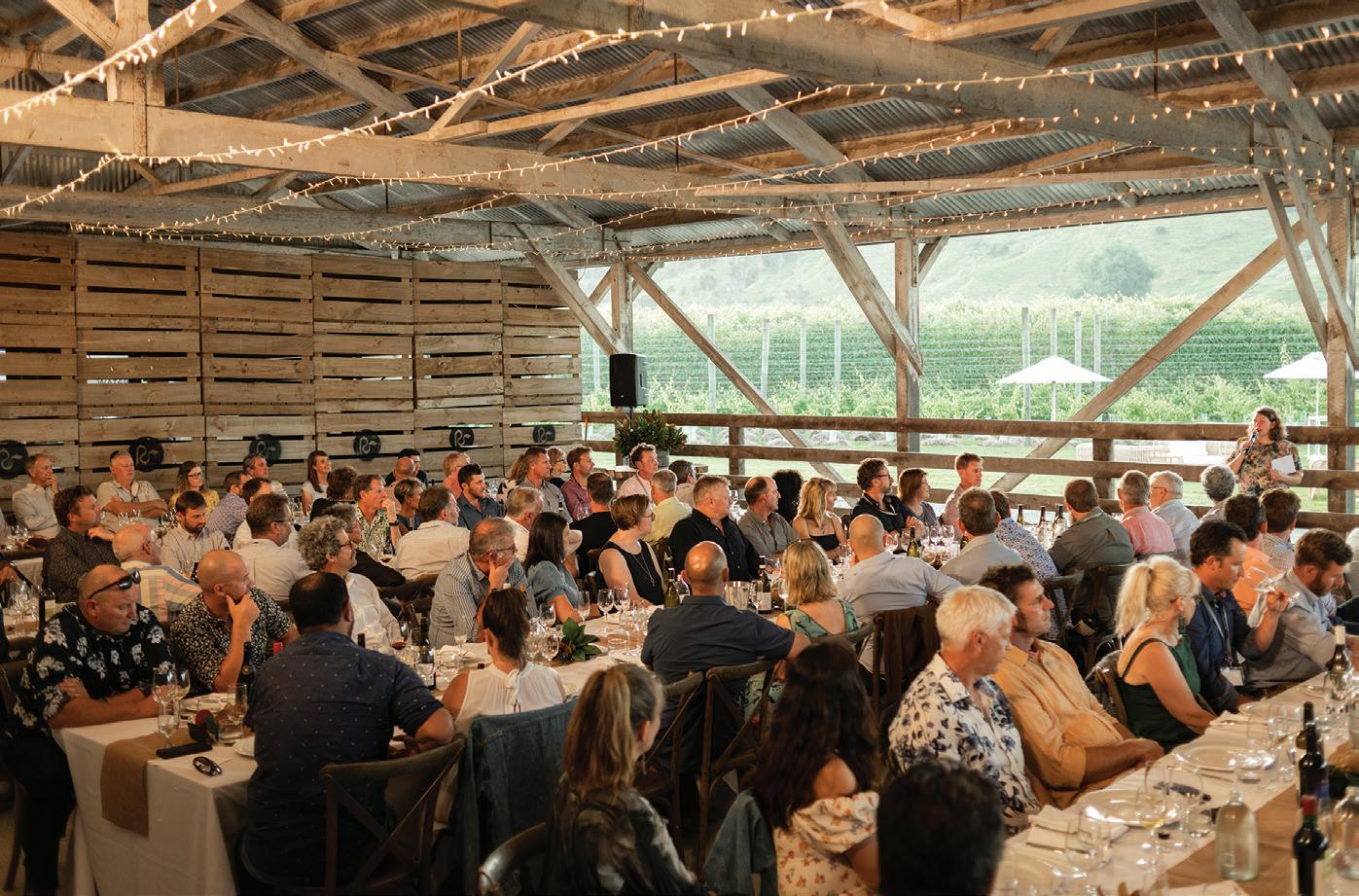
48 I NEW ZEALAND WINEGROWER I APRIL/MAY 2023 THE
PLACES
BRING OUT THE BEST IN YOUR VINEYARD Freecall 0800 106 898 Email sales@croplands.co.nz croplands.co.nz High performance fans for high performing growers. Croplands Quantum™ vineyard sprayers are quiet, reliable and extremely energy efficient, delivering outstanding spray coverage and performance efficiency. Don’t compromise on the best investment you can make for disease control in your vineyard.
Emma Jenkins (MW) warming the crowd up for the La Paulée celebration dinner at Waihuka
This was not a public-facing event (I was invited as the MC for the dinner), and attendees shared their stories with frankness. Therefore, my review attempts to convey its tone while respecting the confidentiality of those who participated.
Vison 40:40 was a timely and welcome forum. Riversun’s timespan runs roughly parallel to that of the modern New Zealand industry, which is undergoing an inflection point as the pioneers start to hang up their pruning snips and hand over to the next generation – or perhaps to an entirely new ownership model. The past few years’ Covid-induced border closures and event cancellations contributed to the disappearance of many industry focal points, leaving a sense of isolation and a vacuum in collaborative discussion. The opportunity to share stories, triumphs and frustrations, successes and learning curves honestly and transparently, was felt profoundly by many.
The questions – “who are we, what do we stand for, and what’s our place in the world?” – occupied many minds. The concern is that we no longer seem to have a strong, unified message and mindset, and that without a clearly articulated vision from the top down, it will be hard to maintain any international renown we have accumulated. This tied into recognition of the increasing bifurcation of New Zealand’s industry – on one hand the behemoth that is large-scale “Marlborough Sauvignon Blanc” (MSB), and on the other, “Everyone Else” (some of whom might themselves be producers of MSB). The MSB story did not begin with high volume/bulk wines, but instead with small, passionate producers who are now finding it an increasingly tough space to occupy. This is not about reductive thinking such as “Big = Bad” and “Small = Good”, as each one has a valuable role to play when they are striving for the same ultimate goals for New Zealand Wine Inc. However, it is clear that not everyone is thriving in the current landscape, and it is not healthy if there is only one main viable economic model, built upon one variety at scale. We have an enviable reputation to protect and maintain, and producers on whose reputation New Zealand’s quality perception rests must be able to flourish alongside those with the size and clout to blaze market trails. We are stronger together.
To do this, producers need to make quality the key driver of their identity and have confidence that their peers’ wines will also be of high quality. Our famously laidback national persona must not become a barrier to marketing our wines at a higher level. Our best wines, particularly Pinot Noir, are bargains compared to our new world competitors. The stratospheric pricing of Burgundy
Hybrids – the future is already here?
Hybrid vines are an area where there is currently little visible industry discussion. The opportunity to discuss and taste four varieties was eye-opening. Made from varieties resistant to powdery and downy mildew (Nuvoté, Floreal, Sauvignon Rytos and Sauvignon Nepsis – with the latter two having Sauvignon Blanc as one parent), three were microvins and one a commercial wine. For me the standout was Sauvignon Blanc lookalike S. Nepsis. It wasn’t hard to imagine 15% of Nepsis in the mix for its spray-reduction potential. Will we continue to use the current limited arsenal or could there be major change coming? Currently there are no vines in New Zealand, and quarantine space is an ongoing limiting factor, but Riversun is already well advanced in gaining licensed access to these varieties. Watch this space.
SERIES SPECIALIST TRACTOR RANGE




to 6 different engine ratings per version. The ideal configuration for a wide variety of jobs and maximum productivity in vineyards and orchards. New 70 to 111 HP engines, new transmission with mechanical or hydraulic reverse shuttle, new axles and suspensions, unbeatable ease of handling. Bonnet and cab have been completely redesigned to provide the highest standards of comfort, ergonomics and safety.


THE PLACES NEW ZEALAND WINEGROWER I APRIL/MAY 2023 I 49
HIGHLY SPECIALIZED IN PRODUCING PROFIT.
Distributed by Contact us for more information and your nearest dealer. p: +64 7 573 8132 Landini is a trademark of Argo Tractors S.p.A. The Rex 4 series specialist tractor range Landini is a worldwide brand of the ARGO Group of Companies E info@agtek.co.nz www.agtek.co.nz Distributed by Overall width as narrow as 1.0M. Industry leading new flat floor cabin. Landini renowned strength & reliability. 2WD and 4WD versions,
model ranges. New
Transmission
to suit. THE REX
INDUSTRY LEADING DESIGN & COMFORT. hydraulic reverse shuttle, new axles and suspensions, unbeatable ease of handling. Bonnet and cab have been completely redesigned to provide the highest standards of comfort, ergonomics and safety. Distributed by Contact us for more information and your nearest dealer. p: +64 7 573 8132 www.agtek.co.nz Landini is a trademark of Argo Tractors S.p.A.
4
fuel efficient 70 to 120 HP engines.
options
4
has opened doors for wines offering better value, on which we must capitalise. The success of New Zealand wines in marketplaces such as the Place de Bordeaux shows the opportunity is there if we are willing to take it.

Should protocols be in place to assist this? The “Champagne-ification” of MSB was mooted since it shares many of the same attributes: benchmark style and quality, price premiums, natural production constraints, and demand exceeding supply. However, MSB faces challenges in its distance from markets, production costs and potentially, consumer trends. It remains to be seen whether Champagne’s other features such as yield control and bottling at source are palatable to MSB’s producers, though Appellation Marlborough Wine has thrown down this gauntlet. A fascinating question was posed: are we better selling
variety or origin? One can be replicated anywhere, the other most certainly cannot... at what point will the regional or vineyard name on a bottle of New Zealand wine start to eclipse that of the variety? We have taken some big (and at times radical) steps in our short history: vine pulls, Sustainable Winegrowing New Zealand, screwcaps are some examples. With the luxury of hindsight into the pros and cons
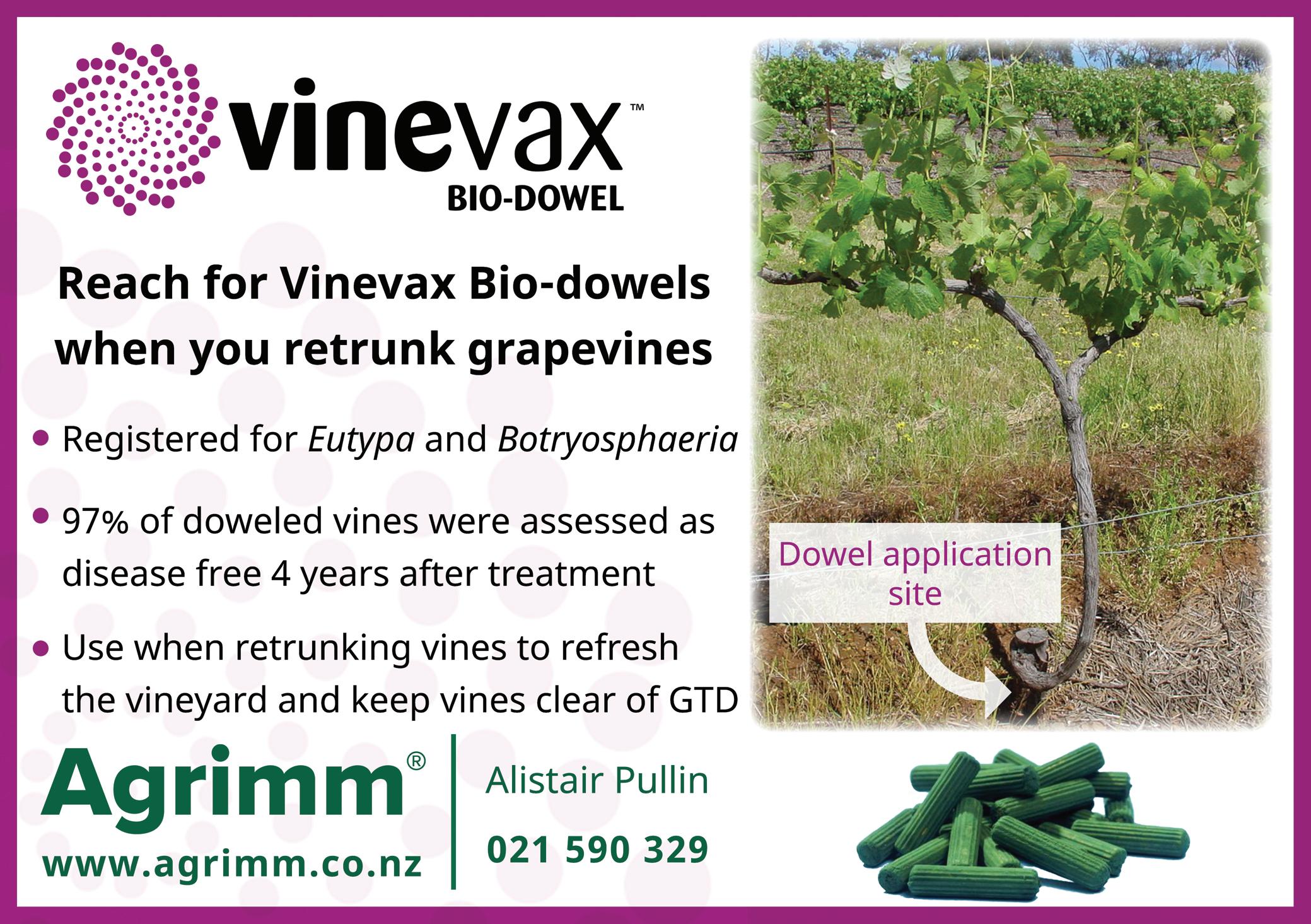
of European wine laws, perhaps this area could be our next big move.
The second overarching theme was the incoming challenges of climate change, brought into sharp relief by the Auckland flooding that preceded the workshop, and devastatingly underscored by Cyclone Gabrielle just a week later. New Zealand is in no way immune to the impacts and there are many challenges, with few easy
50 I NEW ZEALAND WINEGROWER I APRIL/MAY 2023 THE PLACES
“Our famously laidback national personae must not become a barrier to marketing our wines at a higher level.”
Laurent Audeguin from ENTAV accepting the wero
answers. Are we preparing for floods, droughts, or both? Combined with the challenges of increasing disease pressure (and the associated spraying implications) the uncertainty of climate change takes a toll and brings a reckoning of what tools we actually have in the bag. There were persuasive discussions about the benefits of regenerative and organic viticulture for sequestering carbon, managing water, building biodiversity, and ensuring healthy soils that span generations. The current, and especially the next generation, are facing a future that looks very different, with many more unknowns, from those who came before them.
Our industry has shown it can unite
behind an idea to become a world leader. There is opportunity (to coin one of Geoff’s phrases) to set a “Big Hairy Audacious Goal” and have our industry lead the way in regenerative and organic agriculture, and to provide benchmark frameworks for quality within a New World context. We are still small and potentially nimble enough for this to be a realistic goal, though we need to be brave and innovative with strong leadership. Vision 40:40 gave a welcome opportunity to imagine how New Zealand wine will be standing in the decades to come, based on the decisions we are making now. For as Dame Anne, who also happens to be Geoff’s big sister, said: “People come and go but the land always stands.”
Riversun

Founded in 1982, Gisborne’s Riversun Nurseries and Geoff Thorpe are familiar names within the New Zealand winescape, having become the country’s leading supplier of rootstock and grafted vines, as well as avocado and kiwifruit plants. Geoff has been a pioneer and visionary, developing an independently audited vine certification programme, a grapevine quarantine facility, and (via sister company Linnaeus Laboratories) an accredited vine virus testing service. Riversun’s 100 hectare holdings encompass a grapevine source block, field nursery, processing facility and potted plant nursery, employing about 80 permanent staff, rising to 250 across the peak season. Geoff has made a significant commitment to sustainability, guided by his litmus test of “can we keep doing this on the same land, in the same community and on the same planet for the next 100 years and the next 1000 years?” Riversun became a Toitu carboNZero certified organisation in 2018 and is aiming to be climate positive by 2030.


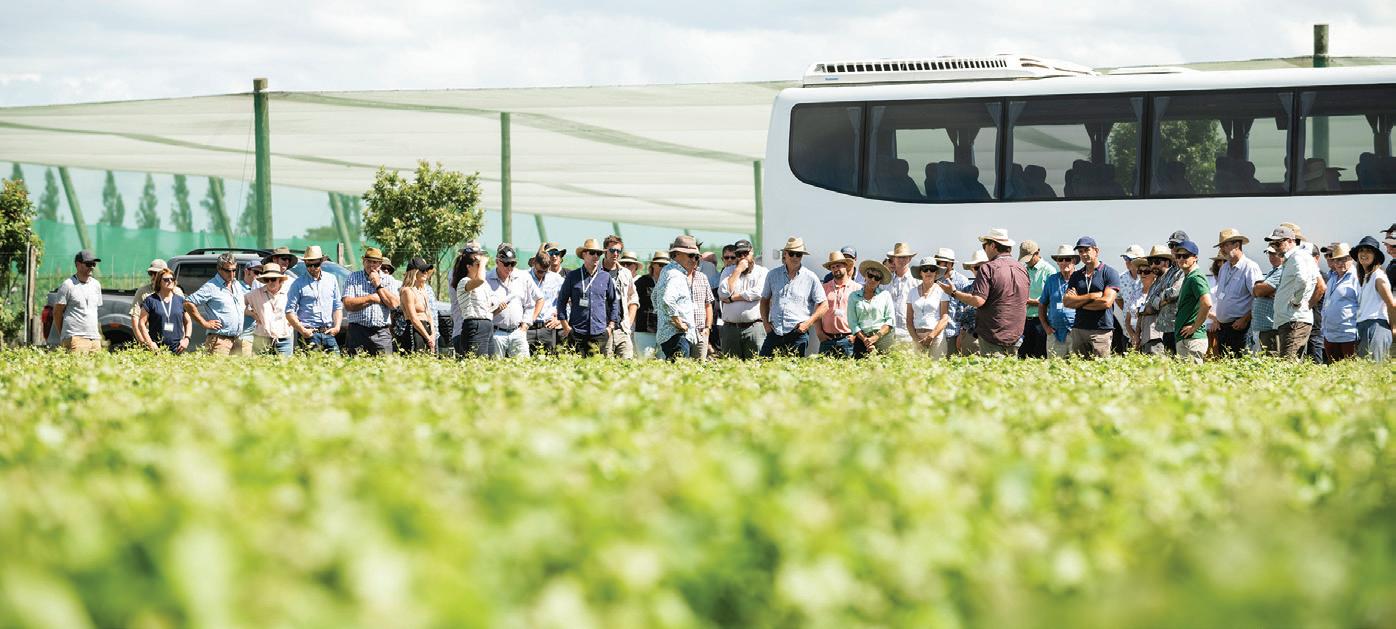
NEW ZEALAND WINEGROWER I APRIL/MAY 2023 I 51 THE PLACES
Need Wa
is S umm
Ge t your t a nk inst a lled now to ea t t he d rought t his summ e r wit h F le xi a nks N . Re lia le w a t e r stor age wit h no e v a por a tion. S tor e up to on e million lit e rs p e r t a nk. inim a l sit e pr e p a r a tion a n d r a pid inst a ll. Wa t e r w he n you need it most E n c los ed Safe Se l f S upportin g Ca ll nd r e - 027 7063 633 www. F le xit a nksn .c om
t e r S tor age t h
e r
Decarbonising Wine

Sector strategy to tackle emissions
A New Zealand wine sector decarbonisation programme is likely to be launched later this year, offering industry tools and resources to reduce carbon emissions.


EECA (the Energy Efficiency and Conservation Authority) has launched decarbonisation pathways for three sectors – covered cropping, brewing, and coffee –during the past year. Now it’s working with New Zealand Winegrowers and individual companies to co-develop an industry-wide decarbonisation programme for wine. “We are looking forward to engaging more with winegrowers when the Wine Sector Decarbonisation Programme launches in 2023,” EECA Group Manager, Business, Nicki Sutherland says.
Businesses account for about 40% of New Zealand’s energy-related emissions, so represent a big opportunity for decarbonisation. The Sector Decarbonisation Programme collaborates with sector associations and technical experts to connect New Zealand businesses with “world-class innovation” and best practice guidance to decarbonise at a sector level, Nicki says. “The programme provides businesses with free access to helpful tools and resources, designed specifically for the sector.” EECA takes an energy efficiency first approach, focussed on helping businesses understand how to use their existing equipment and processes
as efficiently as possible to reduce overall energy use. “This reduces energy use and costs, with a flow on to their emissions, and makes fuel switching possible and cheaper later,” she adds.
The pathway has been broken into five steps, which provide key information for New Zealand growers, no matter how far along the decarbonisation journey they are. That begins with increasing engagement and awareness by encouraging businesses to understand which business processes
are carbon intensive, and including staff on the journey. Following this, businesses can measure their emissions and set targets, optimise equipment, and improve processes, reduce energy demand and switch to renewable energy.
The wine sector programme will include the online EECA Wine Energy Hub, tools and resources, as well as a pathway that businesses can sign up to and receive guided support through their decarbonisation journey.
The benefits of signing up to the decarbonisation pathway include:
• Reducing costs — Improving energy efficiency can reduce the cost of operations and energy and help prepare for the rising cost of high emissions activities under the Emissions Trading Scheme (ETS).
• Creating value — Improving processes and equipment can lead to an increase in productivity and decrease business impact on the environment. It can also drive customer interest.
• Future proofing — The programme can prevent competition between individual businesses for the same services, resources, and opportunities, as well as reduce costs and contribute to future business continuity in a low carbon environment.
• Informing about funding opportunities – Programme participants are the first to hear about funding opportunities as they come online, for example through EECA’s equipment replacement scheme.
Register your interest at: eeca.govt.nz/co-funding/sector-decarbonisation/sign
52 I NEW ZEALAND WINEGROWER I APRIL/MAY 2023 THE PLACES
PREECE
SOPHIE
Lawson’s Dry Hills is focussed on reducing emissions
SAVE Time Money Materials Water Tuff Taps for drip line irrigation Available in 13mm-25mm Flushing Hook, Elbow, Inline, Tee See our website for your local irrigation specialist www.3swans.co.nz |info@3swans.co.nz | 07 850 9581
Drink, Wash, Repeat
Glass bottles are “the elephant in the room” when it comes to reducing the wine industry’s carbon emissions, says bottle reuse proponent Neil Pollett. The wine industry has done a great job of making grape growing processes more sustainable, the founder of the Green Bottle Project says. “However, when it comes to packaging, the problem has not gone away.”
Green Bottle Project intends to collect, wash and sterilise glass bottles for reuse and resale, working with craft and commercial breweries, niche milk producers, and wine companies. Neil says reusing wine bottles results in “a staggering” 90% less emissions than using single use new glass, made partly with recycled glass. Most large New Zealand wine companies now use lighter bottles, with 10% to 15% less weight than a standard bottle, “but of course you will
never reduce that by 90% or more”, he adds. “We want to see a balance between recycling and reuse; not a total dominance of recycling.”
The company recently received funding from EECA (the Energy Efficiency and Conservation Authority), as part of the Technology Demonstration Fund, which provides co-funding support for early adopters of technologies and processes that will deliver energy efficiency and/ or carbon emission reductions in New Zealand. Nicki Sutherland, EECA Group Manager, Business, says those technologies or processes need to have very good replication or diffusion potential for New Zealand businesses. “For the Green Bottle Project, the reuse of the bottle compared to recycling reduces more than 90% of energy use and emissions.”
The first half of the $200,000 EECA funding is subject to the successful installation and commissioning of a commercial bottle inspection and washing machine, and the remaining $100,000 is contingent on the completion of set key point indicators during the following 12 months.

Neil says Green Bottle Project has now
imported all the machinery it needs, designed and built in Germany. “It’s proven to work in those markets and can run at high volumes to offer economies of scale to compete on price with new glass.” The final piece of machinery arrived earlier this year, and will remove used capsule sleeves off wine bottles prior to washing. “Once in operation our first factory will be able to process up to 20 million bottles per annum from collection in supermarkets and other outlets; then washing, removing the labels and inspecting the bottles for the smallest of defects or foreign bodies,” he says.
It will be easy for wineries to adopt, with the same bottles and capsules currently used, while adjustments to label base stock will ensure they can be washed off. “Labels can also be composted as part of the process and all aluminium closures can be recycled once cut off the bottles prewashing.”
Neil says initial interest from the wine industry has been “somewhat disappointing”, due to a “wait and see approach. He believes many are resistant to change, and those with emissions reductions targets are largely focussed on scope 1 and 2 emissions, which they can control, rather than scope 3 emissions, which include packaging.
Dr Edwin Massey, General Manager of Sustainability for New Zealand Winegrowers, says industry is eager to find ways of reducing emissions around packaging. One of the complications of
reusing bottles in New Zealand is the quantity of wine exported, with the return of bottles from abroad an untenable option, he says, noting the success of the model in Europe, where wine is consumed closer to production.”
Meanwhile, Auckland Council has also come in with Green Bottle funding, covering half of the cost of a light electric commercial vehicle through its Waste Minimisation Fund. Neil says the vehicle will be used for bottle collections in specially designed crates. “The idea is to focus our launch on the Auckland market, where beverage consumption is highest, along with packaging waste. This will be used as an initial case study to show how this can impact on emissions associated with recycling, which can be 20 times as much.”
The Green Bottle Project is one of several energy efficiency and fuel switching initiatives relevant to the wine industry that have received funding from EECA. Others include electric frost fans for an orchard, an autonomous battery electric sprayer for a vineyard and autonomous battery electric tractor for an orchard, an electric mobile harvest platform, industrial scale heat pumps to provide medium and high temperature process water, and CO2 heat pumps for space heating in nurseries and buildings. Funding was also allocated for pulse electric field treatment of potatoes, and heat recovery systems in a brewery. greenbottle.co.nz
NEW ZEALAND WINEGROWER I APRIL/MAY 2023 I 53 THE PLACES
“When it comes to packaging, the problem has not gone away.”
Neil Pollett
Wine Weather

Shortly after writing my last story about the weather in Aotearoa, the nation was slammed by two massive rain events. The first being a low that was cut off and became stationary, driving a massive amount of warm moisture laden air over Auckland. The second was the disastrous Cyclone Gabrielle that has now added to the long list of storms that have caused flooding and major damage to the Gisborne and Hawke’s Bay regions.
Weather and climate has been my passion since I was young. I always dreamed of being able to write about the weather for a living. From taking manual weather observations in the backyard at home with a temperature screen that my grandfather built, to writing climate analysis and helping the viticulture industry battle frost, I have been so fortunate to have had the opportunities that have brought me to where I am today.
I began frost forecasting in 2006 in Hawke’s Bay and I want to acknowledge the growers who took a chance on my forecasts all those
years ago, as well as every grower across the country I have worked with during the past 17 seasons. I am forever grateful to have had such a long and enjoyable time doing the job I love. I know how tough and resilient the people of Hawke’s Bay and Gisborne are and I hope to be able to do my part to help as 2023 progresses.
An emerging El Niño?
At long last we are seeing signs that the three year La Niña may finally be over.
Sea surface temperatures are indicating a warming along the equator and western coast of South America that is a trademark of El Niño. Westerly winds are making a comeback and appear to be on the cards for much of autumn. It is not locked in that El Niño will form during winter in 2023, but the signs suggest that at the least we will move into a neutral phase and probably not back to La Niña for a fourth term. The Southern Oscillation Index (SOI) has fallen significantly (remember, the SOI is a comparison of the air pressure at Darwin and the air pressure at Tahiti). A negative SOI phase is related to El Niño and is when there is below normal pressure at Tahiti and higher than normal pressure at Darwin. During La Niña the opposite occurs. With higher than average air pressure over Darwin there is an increased risk of drought in southeast Asia and often an increased westerly flow over New Zealand. Strong El Niño such as those in 1982 to 1983 brought persistent westerlies and caused severe drought in eastern regions.
54 I NEW ZEALAND WINEGROWER I APRIL/MAY 2023 THE PLACES
Pegasus Bay
What’s been going on?
JAMES MORRISON
“I know how tough and resilient the people of Hawke’s Bay and Gisborne are and I hope to be able to do my part to help as 2023 progresses.”
James Morrison
Autumn in 2023 could see a bumpy transition into winter with the lingering effects of a declining La Niña and the move into a possible El Niño. We are still likely to see occasional periods of humid, warm northeasterlies but after a long absence we are also likely to see some quite cold southerly changes.
Outlook for April and May:
Gisborne/Hawke’s Bay
An increased westerly flow is likely to see drier conditions increase as we move towards winter. The South Pacific cyclone season runs into April so there is always potential for another storm to bring rain and wind to the east coast. Because of this, rainfall totals are likely to remain near average or average until the end of May. Mean temperatures are likely to stay above average with day time maximums above normal. A few late hot days are possible under northwest conditions. Night time temperatures are likely to fall close to average by May and there is a risk of temperatures falling close to freezing later in April on the back of any fast clearing southwest changes.
Wairarapa

A bit closer to Cook Strait, the lower North Island can become quite windy as the westerly flow redevelops. Wairarapa may see a few windy days through autumn as a result. However, this is likely to be quite mixed and there is still a risk of a low from the tropics bringing back the easterlies and rain. Overall, rainfall totals are likely to be near average but could be lower in May. Mean temperatures should continue to run above average and like Hawke’s Bay there is a risk of frost late in April if the flow turns back to the southwest.
Nelson
Warm sea surface temperatures have helped to keep night time temperatures well above average in Nelson. This is likely to continue for much of autumn however areas that are well away from the coast will have a greater risk of frost late in April. Mean temperatures are likely to remain above average through into early winter. Rainfall is likely to be close to average.
Marlborough/North Canterbury
Sea surface temperatures remain well above average around the South Island and this is contributing to temperatures running above average in Marlborough and Canterbury. With growing signs of the demise of La Niña, there is likely to be a return to the classic nor’wester at times for both regions and this could produce a few very warm autumn afternoons. La Niña is not completely finished yet so there remains a chance of a sub-tropical low bringing cloud, rain and high humidity. Rainfall totals should be close to normal but may start to drop during May. As colder air from the Southern Ocean gets pulled up over the South Island there is a risk of frost on the back of any southwest changes.
Central Otago
Mean temperatures should remain above normal through autumn with milder than average day time maximums. There is also a risk of frost on the back of any cold changes. Increased westerlies and warm sea temperatures fronts crossing the lower South Island from the west may produce some reasonable rainfall at times. Rainfall totals are expected to be near average through into late autumn.
James Morrison runs Weatherstation Frost Forecasting: weatherstation.net.nz
THE ECO TRELLIS® ADVANTAGE
ECO TRELLIS® posts have been thoroughly tested in vineyards for more than 14 years and are very strong and durable.
In contrast CCA treated wooden vineyards posts leach contaminants into ground water and are very hard to dispose of. They’re heavy to handle, damage easily and often bend and break under pressure in the vineyard. A recent new style of vineyard post is untested, made from alternative product sources and may not be resilient to local conditions. These posts could be performing poorly in vineyards.

NEW ZEALAND WINEGROWER I APRIL/MAY 2023 I 55 THE PLACES
FOR FURTHER INFORMATION ecotrellis.com FREEPHONE 0508 TUBE EMAIL sales@ecotrellis.com ®
ECO TRELLIS WOODEN POSTS NEW STYLE POSTS Strong and durable Yes Partially Unknown Environmentally friendly Yes No Unknown Proven in the vineyard Yes Yes Unknown History of research and testing in-field Yes Yes Unknown Lightweight and easy to install Yes Heavy Very heavy Fully recyclable Yes No Unknown Compatible with KLIMA pruning machine Yes No No Warranty provided Yes No Unknown
Biosecurity Update



Sneak peek at good scents biosecurity
KERRIE HOPKINS
A behind-the-scenes look at Auckland International Airport’s biosecurity arrangements provided the team at New Zealand Winegrowers with some interesting insights into the lives of detector dogs, the eating habits of long-haul passengers… and dirty laundry.
New Zealand Winegrowers (NZW) and the Ministry for Primary Industries (MPI) work together through the Government

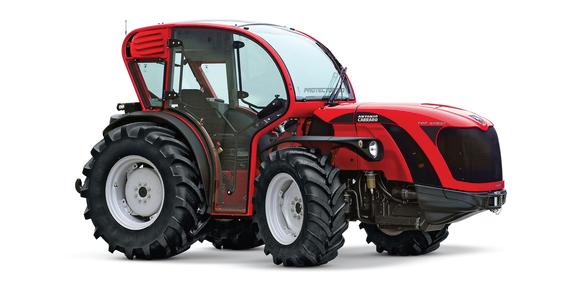


and he happened to train NZW Biosecurity Manager Sophie Badland back in her day as a dog handler. There are 30-40 dogs housed at the detector dog facilities, including labradors, pointers, an English springer spaniel, and many beagle harrier dogs. The beagle harrier is taller than a standard beagle and originates from France. Being a hound dog, it is very suited to scent work. Some of the dogs are trained for specific
given six monthly health checks to ensure they have no long-term injuries so they can continue to work. Some dogs retire to retirement homes at 8 years old, while others continue to work if healthy. Although there is no in-house vet, a veterinarian visits regularly; there is a consultation room on site not dissimilar to one you would find at your local vet clinic except they also have dedicated physio equipment for balance and strengthening of the dogs. There’s also an outdoor swimming
56 I NEW ZEALAND WINEGROWER I APRIL/MAY 2023 THE PLACES
www.AntonioCarraro.co.nz | 07 847 6734 |info@mcfarlanes.co.nz NZ's FASTEST GROWING TRACTOR BRAND NZ's FASTEST GROWING TRACTOR BRAND
Technology for efficient irrigation management
from overseas. At border control at Auckland Airport the dogs are worked for 20 minutes and then rested for a short time before another 20-minute round. Dogs are trained to find biosecurity risk items (especially plants and animals, and plant and animal products) which could be carrying pests or diseases.

The dogs learn to respond in a passive manner by sitting next to the baggage containing any known risk items and holding their nose on the source of the odour. The dogs are then rewarded with food for correct responses. We witnessed exactly this when we watched two new handlers and their dogs go through their paces in the training hall.
Over at Auckland Airport we were guided by the Operations Manager for Auckland Airport Biosecurity. Our arrival coincided with peak time for border control, with a few hundred passengers waiting to be processed through the border check, and an Emirates A380 about to land with another 400 passengers. It was great to see a detector dog and handler monitoring the ‘nothing to declare’ line, ensuring all passengers were subject to at least one biosecurity check before leaving the arrivals area.
The biosecurity controlled area includes a lab (where biosecurity risk items are inspected, cleaned or held for further treatment); a risk assessment area (where passengers are questioned about their declarations and directed for further intervention); the search bench (where luggage is searched and risk items are checked), and the x-ray area. Unfortunately, a new state of the art carry-on baggage scanner, the 920CT, was damaged during the Auckland floods and is it yet to be fixed.
Apparently the early morning flights from North America and Asia are prone to bringing in food due to the 12-hour flight duration. Australian travelers, given the short distance, are less likely to bring anything that poses a biosecurity risk. Australia also has very similar biosecurity rules to New Zealand and travelers generally are aware of the requirements. However, we did find out about a Waikato dairy farmer who came off a plane in the clothes he had been wearing at a farm in Indonesia, where foot and mouth disease outbreaks are spreading. His clothes and boots were confiscated at the border, but no he didn’t go home naked – border employees bought him new clothes to wear and the confiscated clothes were washed and returned to him after being washed and disinfected.
Paper arrival cards are still marked and counted manually; however, this is set to change within the next year when electronic passenger arrival cards will be introduced.
While the MPI team does a great job at the border, it’s important to remember that biosecurity is everyone’s responsibility. If you see something unusual, remember to Catch It, Snap It and Report It to the Biosecurity NZ hotline on 0800 80 99 66, and get in touch with the NZW biosecurity team at biosecurity@nzwine.com.
Galileo CLOUD

The most advanced Cloud-based controller for viticultural irrigation & fertigation


KROHNE Electromagnetic Flowmeters


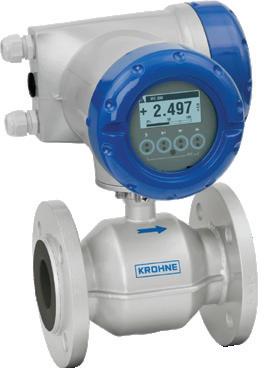
High precision flow meters for irrigation, water supply and process control applications

Steel Screen Filters
The first choice for high volume filtration of bore water and river takes
A.R.I. Combination Air Valves
Protect pipelines & equipment from entrapped air to increase efficiency & reduce pumping costs

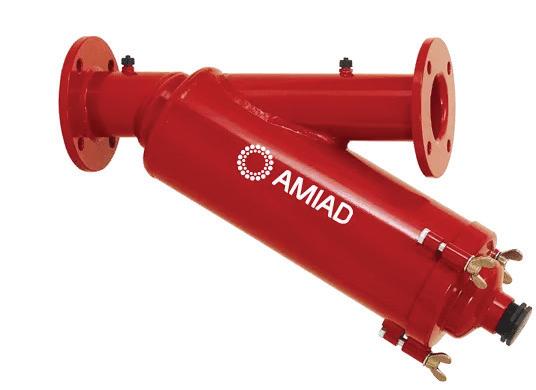
NEW ZEALAND WINEGROWER I APRIL/MAY 2023 I 57 THE PLACES
Amiad
find your local dealer contact Water Supply Products: Auckland: 09-916 0094 Christchurch: 03-348 1293 wsp@watersupply.co.nz www.watersupply.co.nz
To
On your behalf
Advocacy on matters of vital importance to the industry



International Women’s Day
People took to the streets in Europe and the United States in 1911 to draw attention to the challenges faced by women. This first International Women’s Day (IWD) campaigned for equal rights, including the right for women to work, vote, take up roles in public office, and ultimately end gender discrimination.
While there is still work to be done, there have been substantial gains. For example, women won the right to vote in the United States in 1920 and in the United Kingdom in 1928. Notably, New Zealand was well ahead here, with women having the right to vote since 1893. In many places around the world, women now hold top positions in political, economic, medical, legal and business organisations. Women can work, lead, vote, and live independent lives.
However, IWD is also a time to think of those less fortunate than ourselves, whose restricted lives are far from fair, equal and safe. It is important that it continues to be a day to rally for equality and to highlight
the strength and importance of freedom, diversity and inclusion.
So how is all of this relevant to our industry? IWD is a good time to assess and reflect. Is there equality, diversity, and inclusivity? When Women in Wine NZ was launched in 2017, its aim was to help women flourish and reach their goals within our industry; to help them feel supported and equipped to step up into leadership roles if they desired; to highlight the importance and strength of diversity and inclusion, ensuring everyone is represented around the decision table.
During the past few years, we have seen women flourish. Through networking and the mentoring programme we’ve seen women grow in confidence, advance their careers, sit on more industry committees and put themselves forward for the New Zealand Winegrowers (NZW) board elections. We’re seeing an increasing number of women enter our industry, and start to move into more senior roles.
However, the recent Women in Wine
Gender Pay Gap report does highlight that there’s still work to be done; things are not equal. The median gender pay gap for our industry is 7.8%, compared to the national average of 9.2%. As this is the median, some roles have a much wider gap than others. Ensuring equal pay is important not just for the short term, but also because of the long term adverse outcomes that can result, such as retirement. “The New Zealand wine industry has a gender pay gap differential which requires commitment to change,” says Women in Wine NZ Chair Kate Radburnd. “We need to act now, set goals and commit to achieving equal pay for everyone in our industry.”
The call to action is to regularly check payrolls and overall packages, ensuring they are adjusted as necessary to ensure there is fair and equal pay. Why not make this date around IWD? Larger businesses, with more than 50 employees, should also consider signing up to the pay gap registry at mindthegap.nz. IWD is also the perfect day to celebrate women’s achievements in all
58 I NEW ZEALAND WINEGROWER I APRIL/MAY 2023
NICKY GRANDORGE
“We’re seeing an increasing number of women enter our industry, and start to move into more senior roles.”
Nicky Grandorge
© Copyright 2021 Farmgard Ltd. All rights reserved. Specifications are subject to change without prior notice.
Burn Cottage
A fast, commercially viable
to sprays
won’t damage
CALL FARMGARD 24 HOURS 0800 FARMGARD FIND OUT MORE AT farmgard.co.nz Nationwide Dealer Service Network 35 years, Generations of Experience
The Berti Ecosprint has a patented rotor with 8m of nylon per spool, which can be easily extended when worn, and will tackle the harshest of weeds without damaging the vines.
alternative
which
vines.
areas of life; to celebrate our industry, and the passionate, ambitious women working in it.
In November 2022, I attended the International Women in Wine Forum in Milan. It was a great opportunity to learn from 10 other women in wine groups from around the world, as well as measure where we sit as an industry. And it made clear that we’re doing pretty well. Yes, there’s still room for improvement – we must continue to close the gender pay gap and see more women in senior leadership roles – but on the whole we are a very inclusive industry, supporting women to progress their careers and enjoy what they do.
An agreement between the 11 countries was signed at the forum, to share knowledge, ideas and continue to highlight women in the wine industry. It was also agreed to work together to celebrate IWD with a united theme and social media campaign. The theme was holding a globe to represent peace and unity around the world.
Women in Wine NZ got behind this initiative, and our members enjoyed making videos and posting photos on 8 March. These included women and men, again highlighting we are an inclusive, supportive industry. A collaborative video from groups
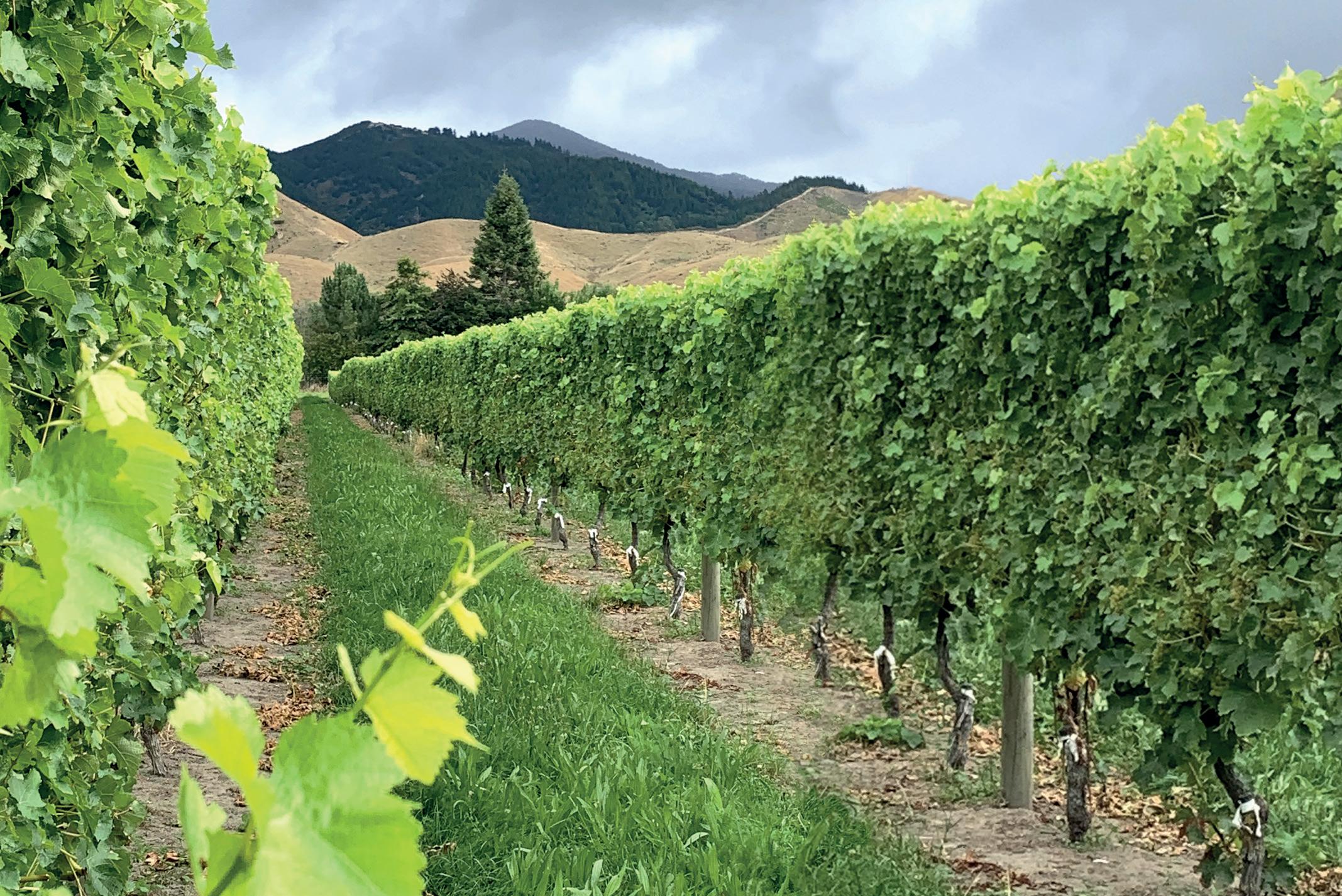
around the country was made as a globe was thrown from one region to the next. This was a fun project, highlighting not only our winegrowing regions, but also the impact and strength of connection. At the time of writing, the video on our Women in Wine NZ Instagram page had already been viewed more than 2,000 times.
So, as well as highlighting the challenges women face around the world, IWD is also a time to celebrate women’s accomplishments and the progress made. There is certainly much to celebrate in the New Zealand wine industry.

Nicky Grandorge is Women in Wine NZ’s National Coordinator.
Where can I find more information?
Facebook: @womeninwinenz
Instagram: @womeninwinenz
NZW member website: nzwine.com/members/events/ women-in-wine-nz/
Gender Pay Gap Report: nzwine. com/members/industry-reportsstatistics/gender-pay-gap-report/ Gender Pay Gap registry: mindthegap.nz
Better Biology Better Wine
For strong vines, consistent yields and better tasting wines*apply:
Mycorrcin – to boost soil microbes that increase root growth and nutrient uptake

Foliacin – to improve foliar health and resilience in times of environmental stress


Digester – to stimulate decomposition microbes to recycle organic matter fast

Available from leading horticultural suppliers
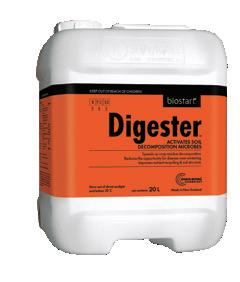
NEW ZEALAND WINEGROWER I APRIL/MAY 2023 I 59 ADVOCACY MATTERS
Soljans
*Asusedin2021AccoladeWinestrial for provenyieldincreaseandbettertastingwine.
0800 116 229 biostart.co.nz
A regular feature to inform industry about research projects being undertaken for their benefit. Newly approved projects (when available) are briefly summarised and longer reports will describe what has been achieved so far. When completed, each project will be reported in full detail with references, on nzwine.com
Information and updates on Bragato Research Institute research programmes.
CONTRACTED RESEARCH PROJECTS
Research Supplement
Information and updates on Bragato Research Institute research projects.
Quality Wine Styles for Existing and Developing Markets
Breaking the quality-productivity seesaw in wine grape production (Pinot Noir Programme)
University of Auckland, Plant & Food Research and Lincoln University (various) jointly funded by NZW and MBIE
Prevention of quercetin instability in bottled wine
Villa Maria Wines Limited (O Powrie)
The effect of winemaking decisions on polysaccharide content in wine
University of Auckland (B Fedrizzi)
The importance of green: understanding ‘green’ and ‘herbaceous’ characters in Pinot noir wine and their role in driving judgements of perceived quality
Lincoln University (D Torrico)
Exploring reductive aromas in Pinot noir
University of Auckland (B Fedrizzi)
Precipitation of calcium tartrate and other compounds in wine
University of Canterbury (K Morison)
Potential applications of nanotechnology for wine growing in New Zealand
University of Auckland (M Kah)
National Vine Collection Virus Eradication
Bragato Research Institute (D Lizamore)
Pests and Disease
Improving remedial surgery practices for control of grapevine trunk disease to increase vineyard longevity
Linnaeus (E van Zijll de Jong), South Australian Research & Development Institute (M Sosnowski)
Weevils in New Zealand vineyards
Bragato Research Institute (P Epee)
Development of an anaerobic chainelongation bioprocess for grape marc valorisation
University of Auckland (S Yi)
Evaluating ecologically sustainable ways to disrupt the weta-vine association
Plant & Food Research (J Vereijssen)
Weather and Climate
Sauvignon Blanc Grapevine Improvement Programme
Bragato Research Institute (D Lizamore)
Cost
Reduction/Increased Profitability
Long spur pruning as an alternative to cane pruning for Sauvignon blanc in Marlborough
Bragato Research Institute (C Vasconcelos)
The Vineyard Environment

Microbial Responses to Under Vine Treatment
Bragato Research Institute (M Barry)
Shared Vision for Land Use in Marlborough
Bragato Research Institute (M Barry)
Regenerating Vineyard Soils - Phase One
Bragato Research Institute (M Barry)
Microbial community and vine responses to increasing temperatures in the New Zealand context
University of Auckland (S Knight)
Evaluating water use efficiency and drought tolerance of various rootstocks grafted to Sauvignon blanc
Bragato Research Institute (C Vasconcelos)
Tuned Vines
Bragato Research Institute (D Lizamore)
RESEARCH SUPPLEMENT
60 I NEW ZEALAND WINEGROWER I APRIL/MAY 2023
Misha’s Vineyard
Field Trials: Yield-quality interactions found in individual vines
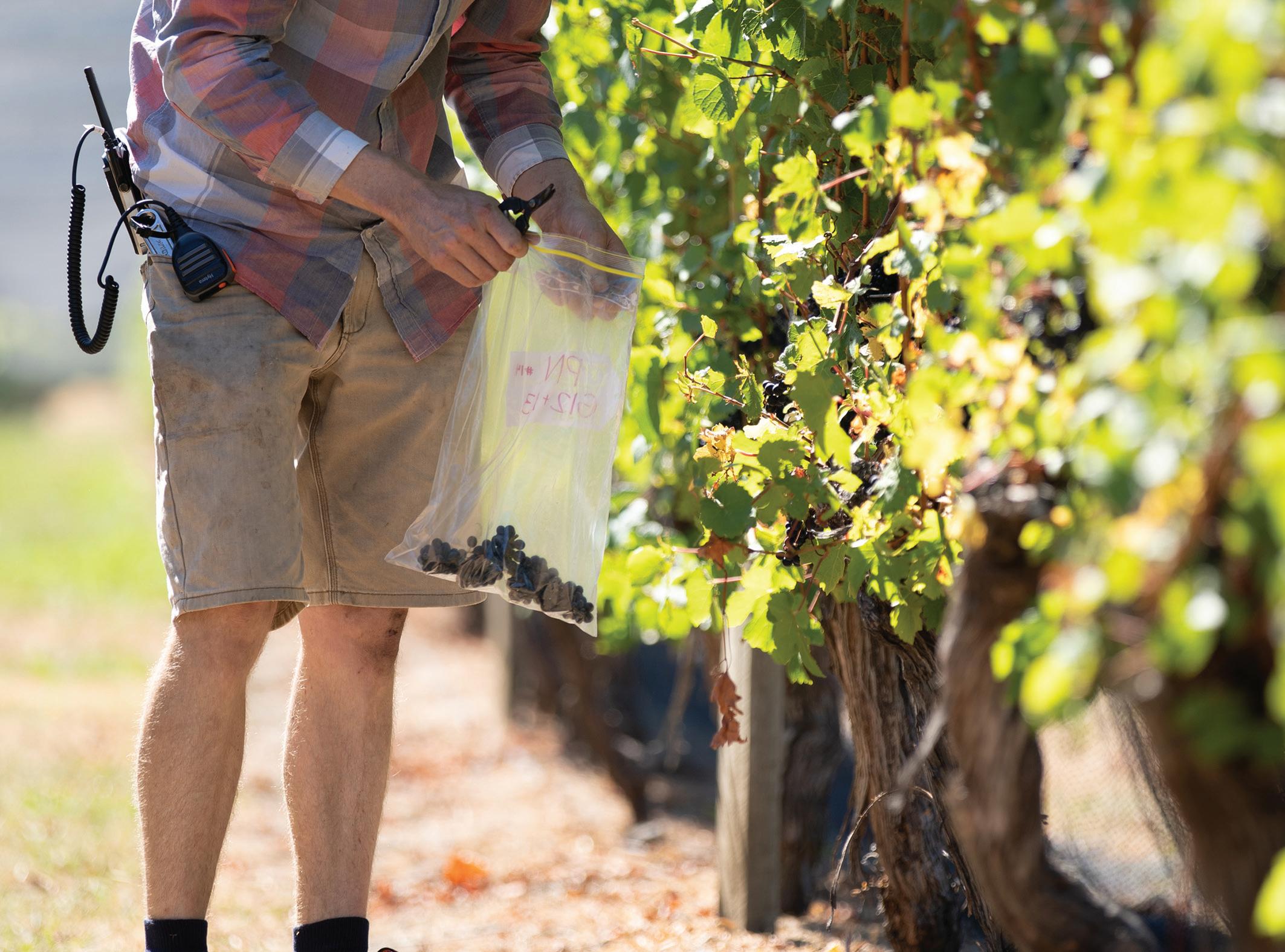
Results from the Pinot Noir Programme support the view that the viticultural practices used by some of New Zealand’s premier Pinot noir producers, especially with regard to yield management, provide an effective means of ensuring a high proportion of vines meet a given grape quality specification.
A key research aim within the programme is the ‘Ideal Vine’, which covers a study network that comprised 12 commercial vineyards. Of these, eight produced single-vineyard, highvalue ‘Icon’ wines and four contributed to multi-vineyard ‘Affordable’ blended wines (Table 1).

RESEARCH SUPPLEMENT NEW ZEALAND WINEGROWER I APRIL/MAY 2023 I 61
PINOT NOIR PROGRAMME
Martin D, Grab F, Scofield C, Schurmann M, Yang L, Stuart L, Moore T, Zhu J, Grose C (Plant & Food Research)
Table 1. Summary details for the vineyard blocks selected for the New Zealand Pinot noir Ideal Vine study.
Of the eight Icon wines, several are among New Zealand’s best examples of Pinot noir. In the context of this study, we have assumed that the vines that directly contribute to the production of these Icon wines are a reasonable population from which to derive aspirational quality targets for the Affordable vines for grape berry size and basic berry composition parameters (Table 2). From 50% of the observations from Icon vines over five seasons (N = 286), we established benchmark specification ranges for the following six grape parameters: berry mass; Total soluble solids (TSS); Titratable acidity (TA); pH; OD280 (berry total phenolics) and OD520 (berry colour). Care was taken to ensure that the specification ranges were also aligned with established oenological berry composition targets for red table wine production.
In parallel, the remaining single-vine x season dataset (N = 707) which included the remaining 50% of the Icon vines (as validation data) and all Affordable vines was classified by yield into weight classes (Table 3). The berry parameters for this dataset were, in turn, classified according to the parameter ranges established for the Icon subset. The quality classification was a simple ‘yes/no’ depending on whether the measured parameter was within range or not. Vines were considered to be within an overall Icon quality specification ‘In-Spec’ if their berry weight and basic berry composition parameter values fell within their corresponding range for at least five out of six parameters. Highly significant negative linear relationships were established between vine Yield class and the frequency of In-Spec vines in the monitored population (Figure 1).

Five years ago, we embarked on the Ideal Vine study in a search to find individual Pinot noir vines within New Zealand vineyards that produced good commercial yields and met benchmark quality standards. We were successful in achieving our overarching aim. Within the three study regions (Wairarapa, Marlborough and Central Otago) 13% of the vine x season combinations (93/707) simultaneously achieved yield and quality metrics.
These vines prove that yield and quality are not mutually exclusive and represent the Ideal Vines within the study population.
Because Icon vines were typically targeted for low yields, only 20% of vines within that population (57/287) achieved the industry-advised ‘commercial viability’ 2.0 kg/m yield threshold, but of those, 60% also met the quality benchmark. At yield classes lower than 2.0 kg/m, there was only a small increase in the proportion of vines that met the quality standard. The situation was reversed for the Affordable vine group, in which 64% (267/420) achieved the yield threshold but only 22% of those met the quality benchmark. At yield classes lower than 2.0 kg/m, the proportion of Affordable
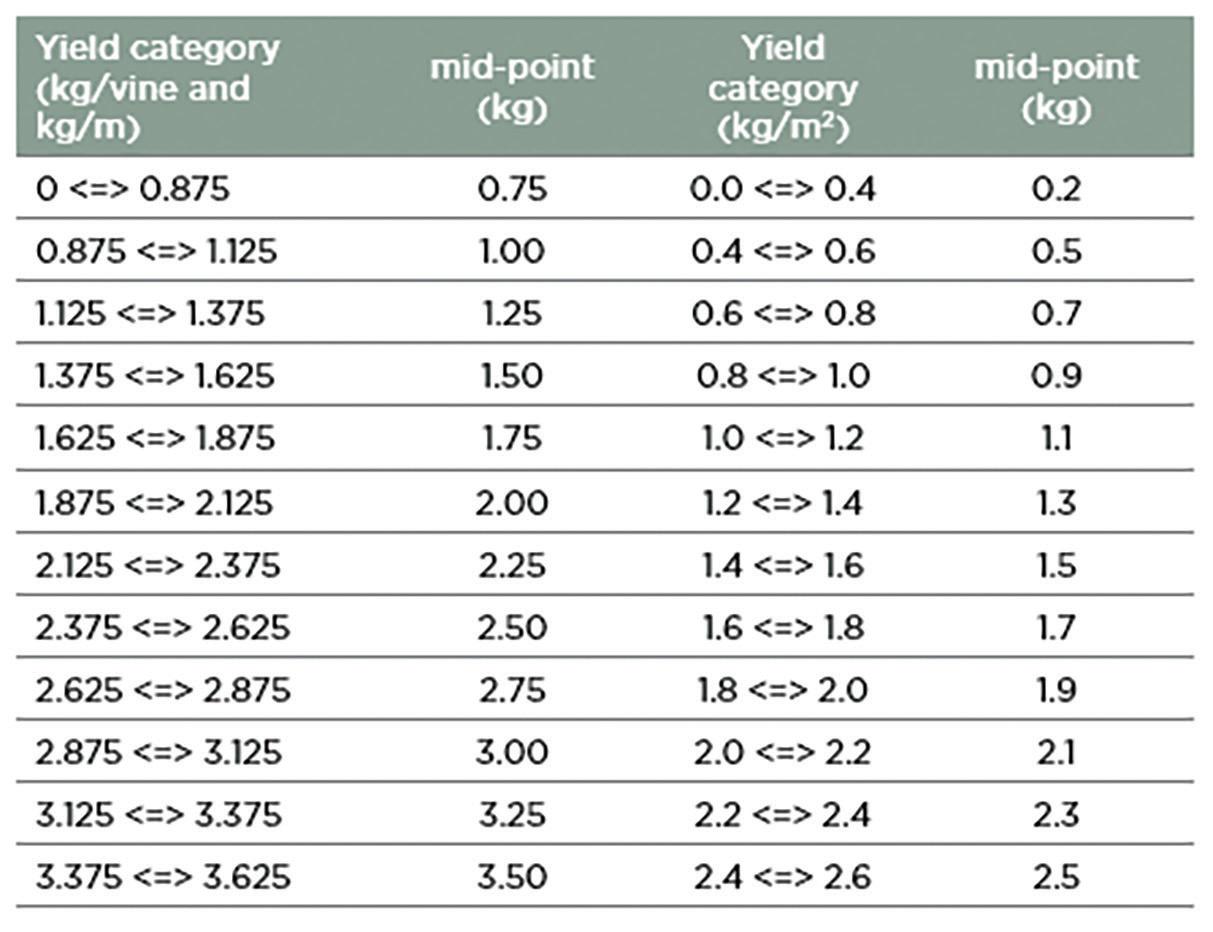
vines that met the quality threshold practically doubled from 22% to 42%.
The data infer that there is a lower yield threshold for Icon vineyards below which there would appear to be little or no gain in the proportion of vines that reach the quality benchmark. This limit would appear to be situated around 1.5 kg/m when leaf area is above 10 cm2 per gram of fruit, no other major limiting factors are present, and mean berry size remains below 1.2 g.
From a vineyard profitability perspective, there would appear to be financial gains available and little risk to quality if Icon producers could achieve as many vines as possible in their vineyard producing at a rate
RESEARCH SUPPLEMENT 62 I NEW ZEALAND WINEGROWER I APRIL/MAY 2023
Table 2. Target specification ranges for grape berry weight and basic berry composition parameters of the New Zealand Pinot noir Ideal Vine study network.
Table 3. Yield categories and mid-points used for the berry composition benchmarking.
equivalent to 1.5 kg/m. Within the Icon vine population, 59% of the vines yielded less than 1.5 kg/m, with these vines having an overall mean yield of 0.9 kg/m. An uplift in yield of 0.6 kg/m (to reach 1.5 kg/m) across half the suboptimal vines would result in an extra 15% yield, or approximately 1.0 T/ha at the mean (Icon vineyard) row spacing of 1.83 m.
In the population of Affordable vines studied only 162/420 (39%) yielded within this range. The results suggest that a more intensive and accurate approach to bud load and yield targets at the individual vine level would reap important quality benefits. If all vines in an Affordable vineyard were managed to be within a yield range of 1.5–2.75 kg/m, the proportion of In-Spec vines would be likely to double, against a small overall decrease in the mean yield of 2.5 kg/m to 2.2 kg/m. This ‘reduced’ yield still sits above the viability threshold for Affordable Pinot noir vineyards established by the programme industry advisory group. We can reasonably and confidently forecast these generic target yield ranges based on results from the programme, but cooler seasons and regions will necessitate some downward adjustments.

PROGRAMME ACKNOWLEDGEMENT
Our data also indicate there is an upper yield for Affordable vines around 2.75 kg/m above which there is a rapid decline in the proportion of vines that meet the quality specification. The yield sweet spot for commercial Pinot noir producers is therefore situated between the Icon target (1.5 kg/m) and the Affordable upper limit of 2.75 kg/m, again with the condition that means berry size remains below 1.2 g.
There is still plenty of scope for further optimisation because the programme results also clearly show that individual vines can meet quality specifications at yields well above 2.0 kg/m. It was not, however, the same individual vines that achieved Ideal status each year. This observation hides complex and interdependent relationships between vine performance, individual vine management and season that we have not fully unpacked.
The Pinot Noir Programme was a multi-year partnership between New Zealand Winegrowers and the Ministry for Business, Innovation and Employment that was managed by Bragato Research Institute and conducted by Plant & Food Research. The research programme ended in September 2022, aiming to grow returns through disassociating quality from yield in New Zealand Pinot noir production. This article concludes the findings of research aims relating to Research aims 2.5 and 2.6 – Ideal Vines and Ideal Wines. The authors would like to thank the 11 participating wine companies for providing the study vineyards and grape samples. This type of research is made possible by the intellectual contributions and passion of winemakers and viticulturists. For more information about the programme and these research aims, including full reports and methods used, please visit the research library in the members’ section of nzwine.com.
RESEARCH SUPPLEMENT NEW ZEALAND WINEGROWER I APRIL/MAY 2023 I 63
Figure 1. The proportion of “In-Spec” vines plotted against the mid-point of the Vineyard Yield class is expressed as yield per vine (a), yield per linear metre of vine row (b) and yield per unit of land area (c).
These vines prove that yield and quality are not mutually exclusive and represent the Ideal Vines within the study population.
The quest to find ideal vines…
Martin D, Grab F, Scofield C, Schurmann M, Yang L, Stuart L, Moore T, Zhu J, Grose C (Plant & Food Research)
Can we find individual vines that produce acceptable commercial yields (above 2.5 kg per vine or 9 tonnes per hectare) with grape and wine composition comparable to ‘Icon’ labels?
WHAT THIS EXPERIMENT IN THE PINOT NOIR PROGRAMME HAS TRIED TO CONTROL:
• Rootstock (3309C)
• Pinot noir clone (Abel)
• Training system (VSP)
• Pruning system (2-cane mostly)
• Vine age (partially)
• GTD and virus (visually)
• A mix of ‘Icon’ (single-vineyard, highvalue wine) and ‘Affordable’ (larger volume varietal blend)
The different vineyards (12) and seasons (five) provide the replication for this trial. The design also allows scope to look at regional effects, although this is not the main goal. Our goal is to identify and understand
if/how yield affects grape and wine composition predictably and consistently at every location, under a range of vineyard management regimes, and across multiple seasons.
The 20 individually monitored vines within each vineyard are the base unit where the (uncontrolled) vine-to-vine variation is yield studied. Yield and other data can be statistically analysed at different scales (e.g. Vine < Vineyard < Region < Product < Year)
THESE TYPICALLY DO NOT CHANGE FOR VINES WITHIN A VINEYARD:
• Overall management approach (i.e. biodynamic, organic, conventional)
• Target product type (i.e. Icon, Affordable)
• Target (block) crop load (mostly)
• Timing and intensity of general vineyard operations
• Irrigation and fertiliser strategies/ inputs
THESE DO NOT CHANGE FOR AN INDIVIDUAL VINE BETWEEN SEASONS:
• Root volume and soil properties
• Vine capacity
• Long-term disease status (GTD, virus – although symptom expression could differ)
• Relative topoclimate compared with adjacent vines.
We can therefore eliminate the above factors as responsible for variations in performance when we compare individual vines within a vineyard or between years.
For more information about the Pinot Noir Programme and these research aims (2.5 and 2.6), please visit nzwine.com/research.

RESEARCH SUPPLEMENT 64 I NEW ZEALAND WINEGROWER I APRIL/MAY 2023 PINOT NOIR PROGRAMME
Pinot Noir Vineyard Trial Map
Potential applications of nanotechnology for winegrowing in New Zealand

Nanotechnology is a broad area of science aiming at engineering matter at a very small scale. Nanoparticles have a size between 1 to 100 nanometres, which is a billion times smaller than a metre, about 1,000 times smaller than the width of a hair. Undetectable by the human eye, nanoparticles can exhibit significantly different physical, chemical and biological properties to their larger counterparts, with potential applications in a wide range of fields from cosmetic and food packaging to electronics.
The application of nanotechnology in agriculture is currently receiving substantial attention worldwide. The most common idea is to exploit the novel properties of materials developed at the nano scale to design novel agrochemicals with superior properties to the products currently used. For instance, nanoencapsulation can be used to deliver pesticides or fertilisers at the right time and at the right place, in line with the principles of high precision agriculture. There are also reports that nanocopper and nanosulphur can protect crops
against pathogens through different mechanisms than conventional copper and sulphur.
Through a range of strategies, nanotechnology can thus reduce the amount of chemicals that needs to be sprayed to achieve crop protection and/or nutrition. Other potential advantages include reduced labour and increased or prolonged efficacy leading to higher productivity. There is a consensus that potential applications and benefits are abundant. To harness its full innovation potential and
RESEARCH SUPPLEMENT NEW ZEALAND WINEGROWER I APRIL/MAY 2023 I 65
Dr Melanie Kah, Nikolai Siimes and Jon Dominic Habito (University of Auckland)
impact, the development of nanoagrochemicals needs to be carefully guided so that products that are beneficial to end-users are effectively developed and applied in a sustainable way.
NANOTECHNOLOGY AND THE WINE INDUSTRY
It is currently not known how nanotechnology can specifically benefit the wine industry and help improve its sustainability. Similarly, impact assessments and regulation of nanopesticides have been discussed globally; however, no studies have yet investigated conditions representative of vineyards, which is needed to ensure that nanopesticides and nanofertilisers are safe. Researchers at the University of Auckland have started looking into these knowledge gaps, funded by Bragato Research Institute. The team led by Melanie Kah at the University of Auckland aims at establishing the missing foundations that will promote the responsible and sustainable development of nanotechnology in the wine growing sector in New Zealand. The project is still in its early stages, with two key activities conducted so far.
The first activity is led by Jon Habito, doctoral researcher at the University of Auckland, who looks at screening the existing scientific literature to identify nanoagrochemicals that may be particularly promising for wine growers in New Zealand. These include nanodelivery systems that may provide prolonged protection against mildew or enzyme-responsive lignin nanocarriers for the curative treatment of trunk disease. The second activity is led by Nikolai Siimes, another doctoral researcher at the University of Auckland. Nikolai looked into the acceptability of vineyard nanotechnology use in New Zealand though a series of interviews across the sector, recently published in the journal NanoImpact.
While Australia conducts more technological research, New Zealand has historically been a fast mover in embracing cutting-edge technology. Early adoption comes with more market risks but can be highly successful when the technology is
sound, and the risks are carefully managed. The New Zealand Screwcap Wine Seal Initiative is a case in point.
FINDINGS SO FAR
Nikolai’s initial research suggests that there is considerable interest in nanotechnology in New Zealand wine circles among those who are aware of its potential. From a technical perspective, winemakers, viticulturists, and industry authorities are interested in nano-enabled solutions to pressing issues such as labour, pest and disease management, and sustainability. These industry actors see nanotech as
to nano-enabled viticulture. Early adopters will need to initiate discursive and narrative management ahead of adoption at the producer, wider industry, and media level.
There are many unknowns about the efficacy of nano-enabled solutions to existing wine-industry problems. These need to be addressed through research. The full opportunity set needs to be investigated. However, in terms of existing knowledge, the primary known risks of adopting nanotechnology are to do with market acceptance and thus brand reputation. These risks are greater for those who rely on stories of wine as natural, traditional, and sustainable. The use of nanotechnology could disrupt those marketing narratives.
compatible with the highly technical modes of viticulture that are already common in New Zealand. More generally, some see nanotechnology as “interesting” and “cool” and are intrigued by the possibility of going further to develop a nanotech logo label. Others are more cautious and advocate a ‘wait and see’ approach – wait for others to take the plunge before risking the reputation of ‘Brand New Zealand’ but prepare to move quickly should market and regulatory barriers prove insubstantial. Obviously, there is concern with regulatory considerations. Regulatory approval (both nationally and in key export markets) will be needed prior to nanotechnology adoption.
Market acceptability is less clear. The risks of nanotechnology to human health are a concern, but nano-scale does not inherently make something a danger. However, we cannot predict how consumers, tastemakers, and other intermediaries will react
The New Zealand study to date suggests that if nanotechnology is effective and aligned with environmental goods and solid sustainability outcomes it will have greater acceptance. The attitudes of key intermediaries and thought leaders such as buyers, sommeliers, and wine writers will play a large role in convincing industry of its value and shaping public understandings of what is acceptable. The research is proceeding on the grounds that technically there are both efficiency and sustainability gains to be had from nano-enabled solutions. The ecobenefits of nanotechnology need to be researched and communicated to consumers and those along the supply chain as a first step in preparing for adoption.
ABOUT THE PROJECT
The aim of this three-year project is to identify and assess promising applications of nanotechnology to increase the sustainability of the winegrowing sector. Led by Dr Melanie Kah at the University of Auckland and funded by BRI, the research will analyse how these issues could be addressed by nanotechnology and grower’s perception of nanotechnology.
RESEARCH SUPPLEMENT 66 I NEW ZEALAND WINEGROWER I APRIL/MAY 2023
The New Zealand study to date suggests that if nanotechnology is effective and aligned with environmental goods and solid sustainability outcomes it will have greater acceptance.
INNOVATION BRINGS US CLOSER

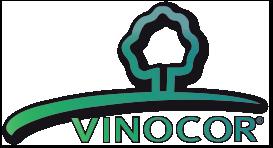

NATURE
TO
With each Origine by Diam solution, winemakers can master the ideal oxygen level and optimal bottle aging duration depending on their wine profile and wine history. With all the Diam guarantees, this bio-based cork range enables winemakers to best meet their consumers everchanging needs and environmental issues. Origine by Diam, the power of choice Distributed By: Vinocor, the exclusive partner for DIAM closures in Oceania. NEW ZEALAND Ph. +64 2157 5380 Email. andrew.twiname@vinocor.co.nz Web. vinocor.co.nz AUSTRALIA Ph. +61 8 8392 9999 Email. info@vinocor.com.au Web. vinocor.com.au Member of
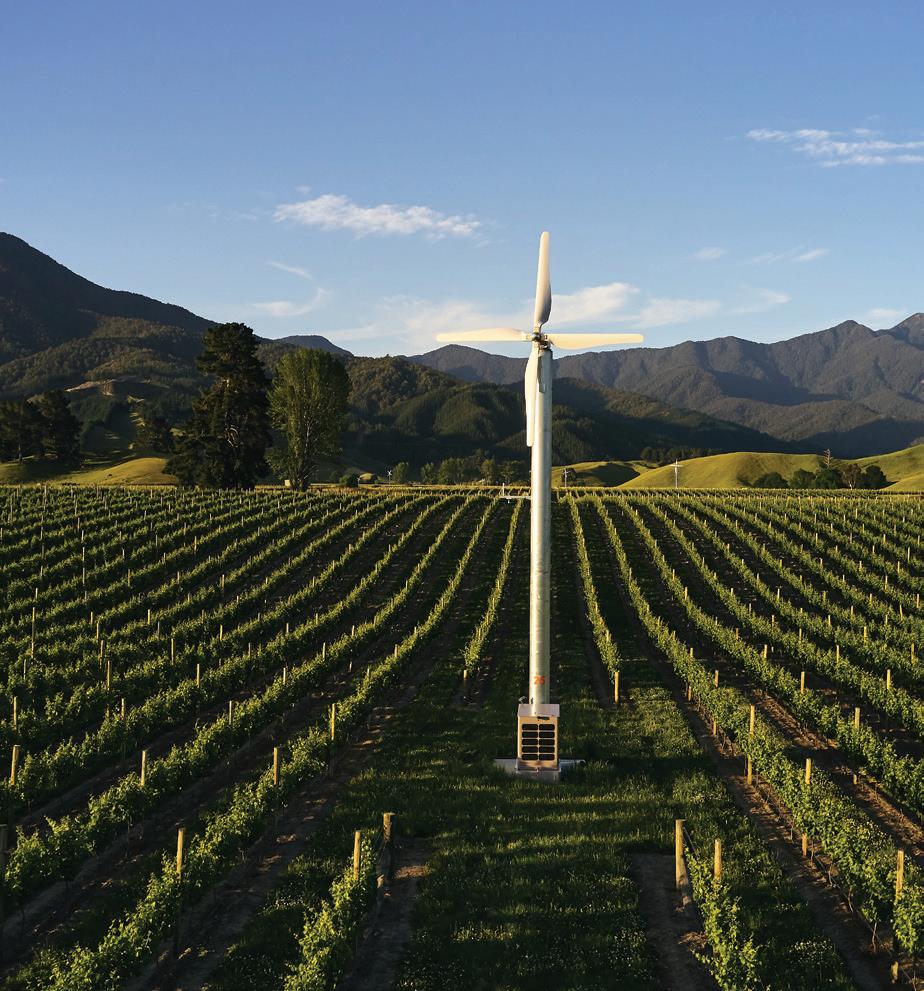


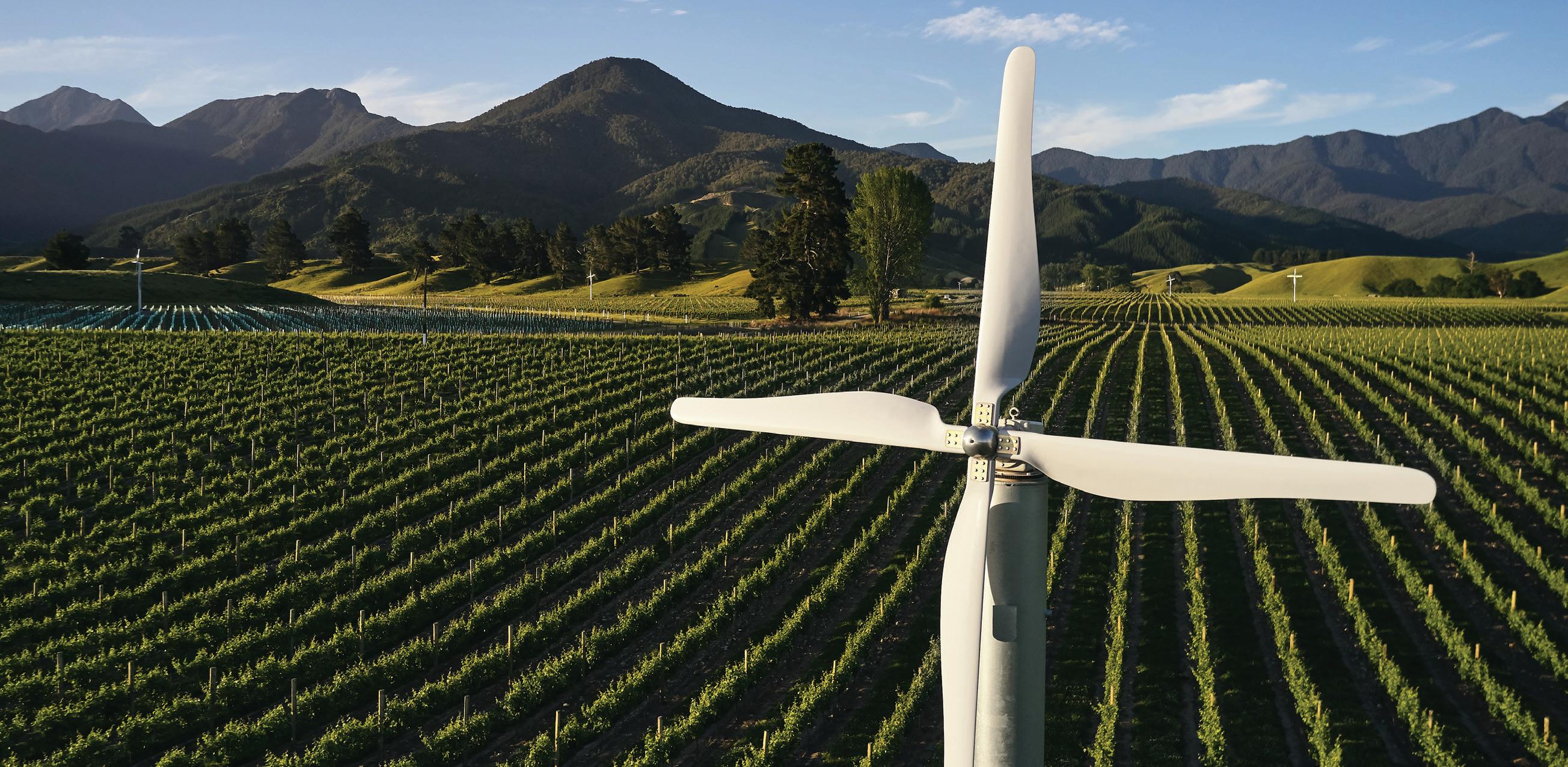
Dan Gardner M +64 27 533 3343 | P +64 6 879 8312 E info@nzfrostfans.com or visit nzfrostfans.com Take the guesswork out of fighting frost with our FrostBoss® advanced wind solution. • De signed by an ex-America’s Cup Research Engineer • Blows warmer air across the crop to stop frost settling • Low noise, no ’chop-chop’ sound • Excellent coverage • Fuel efficient • Auto start and stop to preset temperatures • Compatible with FrostSmart™ real-time monitoring • Ongoing support The quiet frost fan. Stops frost damage.
























































































































 DR MIKE TROUGHT
DR MIKE TROUGHT











 By Negotiation View
By Negotiation View






























































